
The Traveling Twin Mama

9 Best Places to Visit in Northeast Brazil (2024)- The Complete Travel Guide

Thinking about visiting Northeast Brazil? Read on to learn about the best cities, beaches, and experiences this region of Brazil has to offer.
Nestled within the heart of Brazil, the Northeast Brazil region is a treasure trove of history, culture, and natural beauty. This underrated corner of Brazil offers an authentic and unique experience that sets it apart from the rest. From the golden beaches that stretch along the coastline, to the rhythm of traditional music that permeates the air, to the unique and delicious food that can’t be found in other parts of the country. Northeast Brazil captivates travelers of all types.
Recently, I traveled to Northeast Brazil with my family (ages ranged from four – 65 years old). We were pleasantly surprised by all of the amazing activities and culture it had to offer. It was truly an unforgettable experience for all of us and left us itching to return and explore more of the magic offered by this region of Brazil.
Whether you’re drawn by the allure of historic cities like Salvador, the lively rhythm of forró music, or the tranquil beauty of pristine beaches, a journey to Northeast Brazil promises an unforgettable adventure that unveils the lesser-explored facets of this captivating country.
Continue reading to learn about the best places to visit in Northeast Brazil and the best beaches in the area for tourists to visit.
9 Best Places to Visit in Northeast Brazil

Northeast Brazil has many beautiful attractions that are full of culture, history, and incredible nature. As a bonus, it’s mostly undiscovered by international tourists – so you aren’t likely to feel cramped and crowded even during peak season.
The following nine places are some of the best spots to visit in Northeast Brazil.
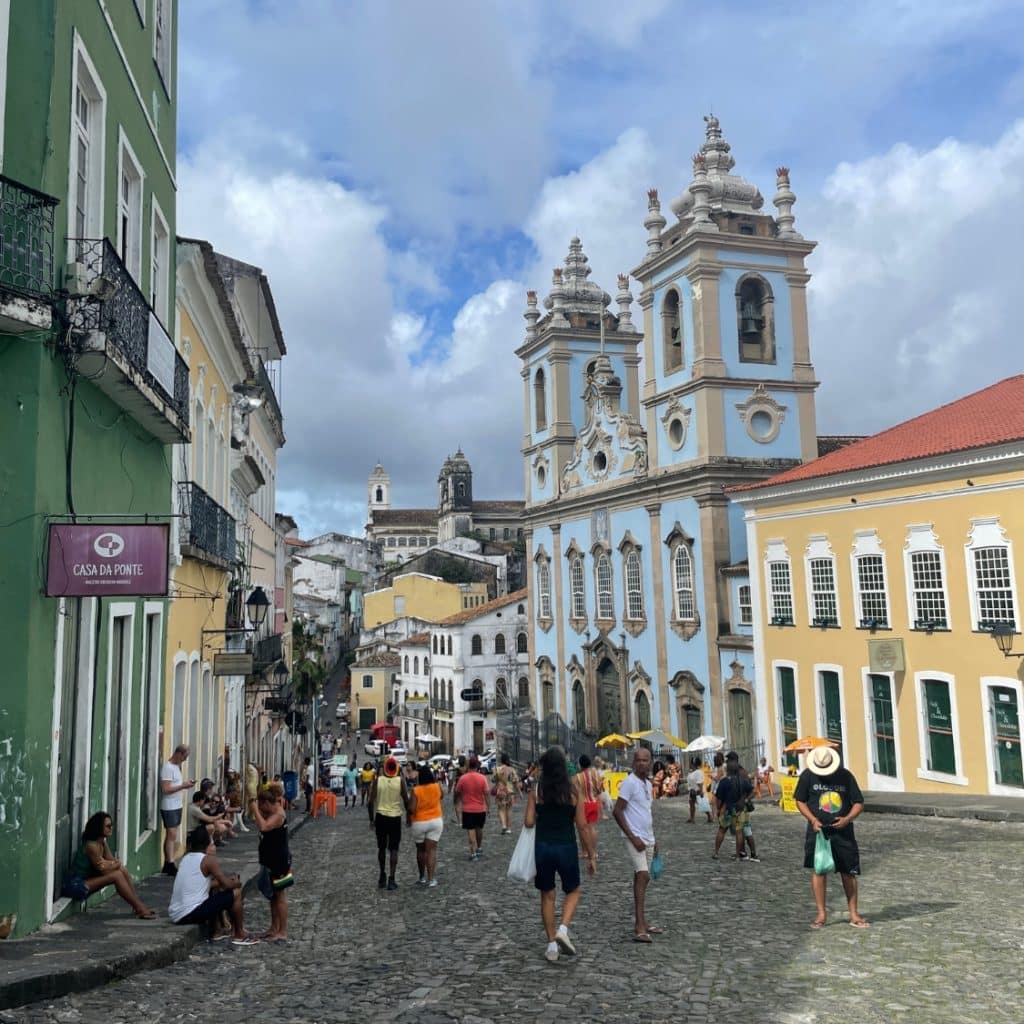
Salvador is the capital of the Brazilian state of Bahia, located in Northeast Brazil. It is one of Brazil’s largest cities with a population of over 3 million people. As one of the larger cities in the northeast, it is an easy city to fly into from other parts of Brazil (or another country in South America ).
The historical port city of Salvador is known for its rich Afro-Brazilian culture, colorful houses, stunning beaches, vibrant music, and both delicious and unique cuisine.
One of the best places to visit in Salvador is the Historic Center, which is also referred to as the Pelourinho. This historic part of Salvador is full of cobblestone streets, colorful colonial-style buildings, and the beautiful Catedral Basílica de Salvador. It’s a very picturesque area to visit while in Salvador.
As you walk through the streets of Pelourinho, all your senses will be overwhelmed by the unique culture. You’ll listen to locals play live music and dance in the squares, take in the beautiful sights, and smell traditional food being prepared behind the walls of Salvador’s many restaurants. We were actually lucky enough to be in Bahia, Salvador during a live fashion show!
One of Salvador’s most unique attractions is the Lacerda Elevator – an urban elevator that connects the lower city to the upper city. It was actually the world’s first urban elevator and has become one of the top tourist attractions in Salvador.
Salvador is surrounded by some of the most incredible beaches that Brazil has to offer. Some of the best include Ilha dos Frades, Praia do Porto da Barra, Praia do Forte, Praia Farol da Barra, and Flamengo Beach.
Chapada Diamantina National Park

Chapada Diamantina National Park is a beautiful national park located in Bahia. The park is full of towering mountains with scenic views, amazing hiking trails, beautiful waterfalls, and lots of mysterious caves .
To explore Chapada Diamantina National Park, you’ll first want to head to the town of Lençóis. Lençóis has a small airport, so flying there from Salvador or other Brazilian cities is possible. Another option is to arrive by bus, which takes around six hours from Salvador.
Since it’s a bit remote from other places in Northeastern Brazil, it is best to stay in Lençóis for a couple of days. It is important to explore the national park with a guide or on a group tour since it’s a very large area and many trails aren’t clearly marked.
One of the best things to do here is to visit the Fumaca Waterfall. Be sure to also include a visit to the beautiful underground caves and pools (such as Poço Azul). Another highlight is hiking the Morro do Pai Inacio, which is an incredibly scenic viewpoint in Chapada Diamantina National Park.
Explore the caves of Chapada National Park I love that this is an affordable private tour
Jericoacoara National Park
Jericoacoara Na tional Park is an incredible place to visit in the northeastern region of Brazil. Located in the state of Ceará, it is around a 1-hour flight or a 6-7 hour bus ride from Fortaleza. When visiting, you can stay in the small village of Jericoacoara which has a beachy, bohemian vibe and is known for incredible seafood.
Jericoacoara National Park is known for its stunning sand dunes, lagoons , and the famous Jericoacoara Beach. The sand dunes are especially unique, and one of the highlights of visiting is riding in a dune buggy across the dunes. This is an incredibly scenic place to visit, and it is a true hidden gem of the northeast region of Brazil.
✔️ Get Transportation availability and price from Jericoacoara to Fortaleza ✔️

Fortaleza is the capital of the Brazilian state of Ceará. Another major city in Brazil, Fortaleza is a great place to fly into from other Brazilian cities or nearby countries. It isn’t as popular for tourism compared to Salvador, but it is worth staying for a day or two before checking out other parts of Northeastern Brazil.
One of the unique things to do in Fortaleza is to explore the Mercado Central de Fortaleza, which is a large market full of all kinds of souvenirs. You can also plan a visit to one of the urban beaches like Praia do Futuro. Make sure to try some local food and drinks while you’re in the area!
Lençóis Maranhenses National Park
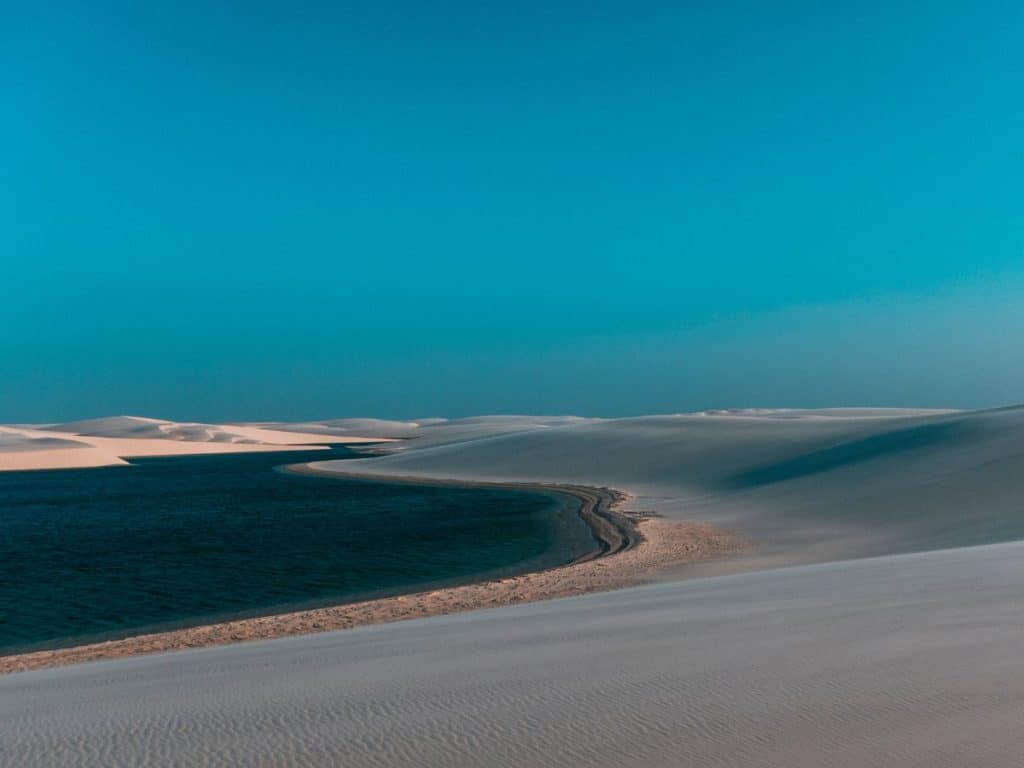
Lençóis Maranhenses National Park is a remote national park in the Brazilian state of Maranhão. The closest town is Barreirinhas, which does have a small regional airport (making it possible to fly there from other Brazilian cities).
This national park has incredible sand dunes that reach up to 40m in height. During the rainy season from January through June, pools of water create lagoons in between the dunes. These lagoons are popular spots for swimming.
✔️ Learn more about a Guided Lagoon Tour ✔️
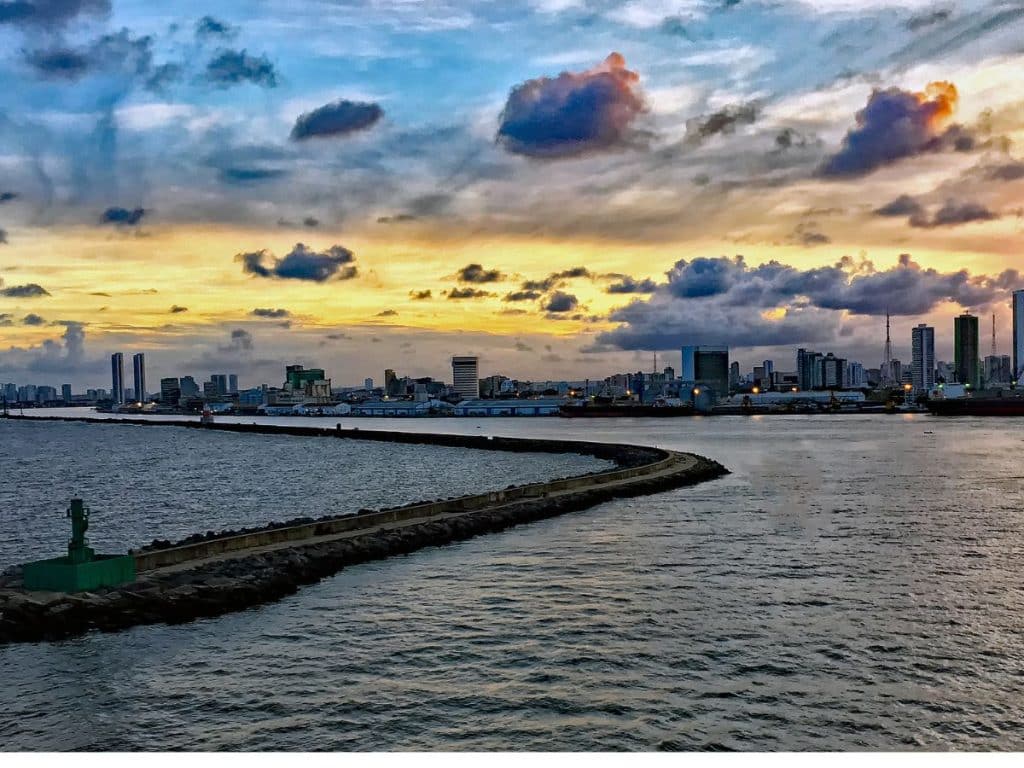
Recife is the capital city of the state of Pernambuco. The city is one of the largest in Northeast Brazil and is nicknamed the “Venice of Brazil” due to the waterways that wind through the city. As one of the largest cities in the northeast, it’s easily accessible by an airport and several bus connections.
Recife is known for being a tropical, urban oasis and is full of incredible beaches such as Oa Viagem Beach. It is one of the more popular spots in Northeast Brazil for tourism and has fantastic bars, cafes, and nightlife.
Recife also has a historical old town that is full of 16th-century buildings and is definitely worth a visit. Another favorite with tourists, Marco Zero Square is a colorful square in the heart of the old town. While in Recife, be sure to plan a visit to the Casa da Cultura – a former prison that was converted into an artisanal marketplace.
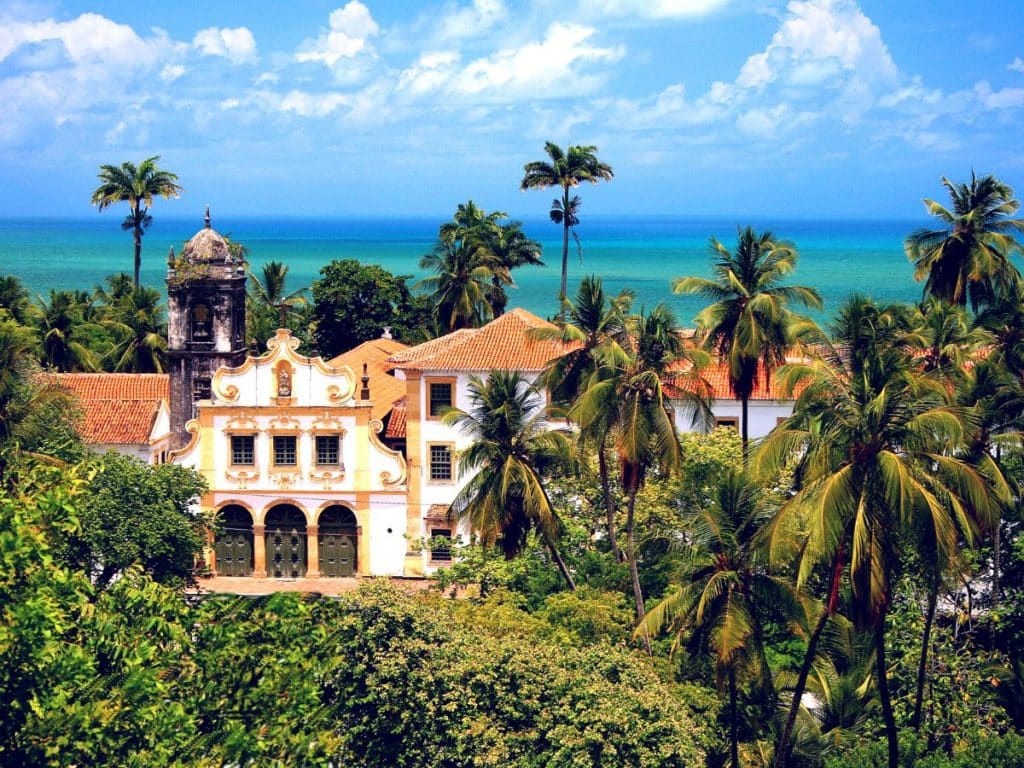
Olinda is a charming historic town that also happens to be a UNESCO World Heritage Site. It is located in the Brazilian state of Pernambuco. Since it’s only a short drive from Recife, it’s possible to visit Olinda on a day trip if your time in Northeast Brazil is limited.
As a colorful and lively town built in the 16th century, Olinda is definitely one of the highlights of the northeast region. Olinda’s historic center is a great place to wander around and enjoy the vibrant architecture and ornate churches. It is a popular town for artists, so there are many art galleries throughout the town as well as unique street art and traditional music.
Serra da Capivara National Park
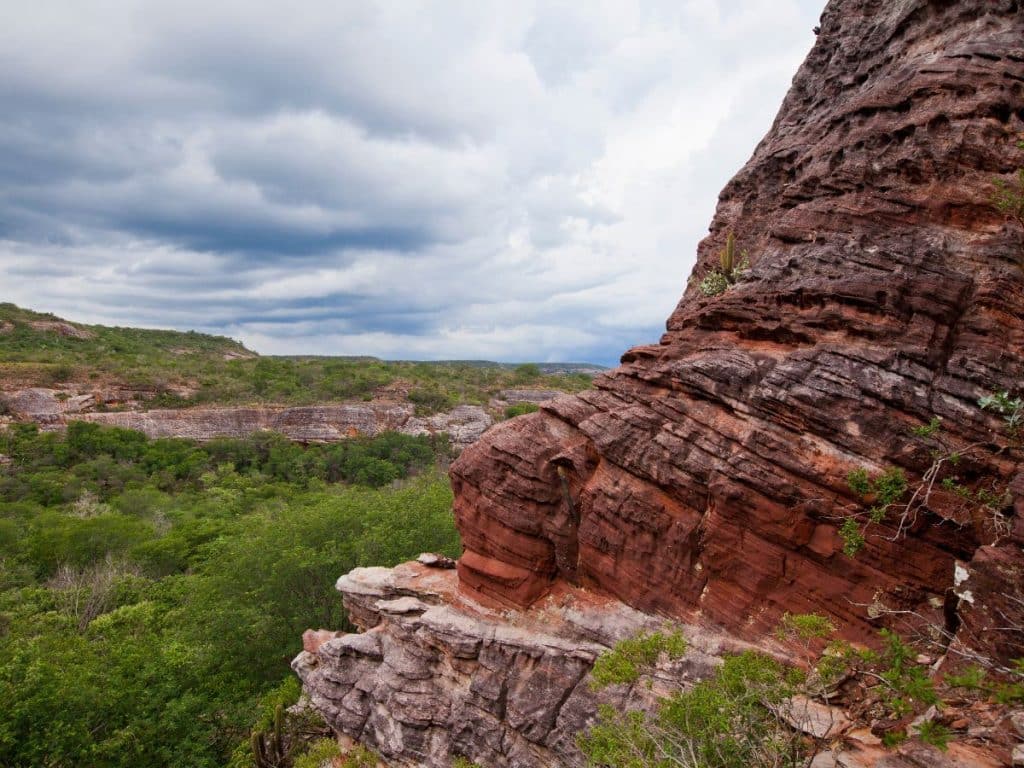
Serra da Capivara National Park is an incredibly unique destination in Northeast Brazil. It’s a fairly remote area of Brazil, so I recommend going with a guide or on a tour. Serra has a small airport and the flight from Recife takes only 2 hours.
Serra da Capivara National Park is a unique national park because it is home to one of the most important archeological sites in all of South America: its prehistoric cave paintings, which are believed to be 25,000 years old. The caves are a UNESCO World Heritage site and are a fascinating place to visit. There are also many hiking trails in this national park.
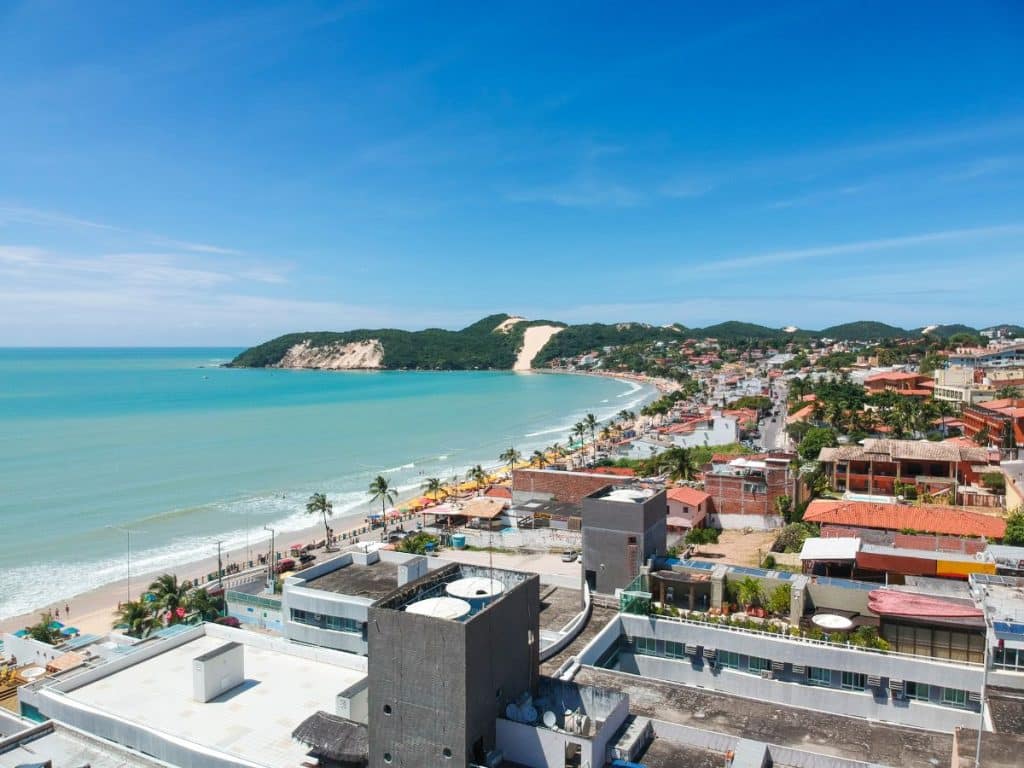
Natal is a city located on the northeastern tip of Brazil and is the capital of the state of Rio Grande do Norte. Natal is a large city, which makes it possible to access by bus or by flying from other cities in Brazil.
Natal is best known for its dunes, lagoons, and incredible beaches with crystal-clear water. One of the best beaches is Ponta Negra, which is lined with restaurants and shops. For a more peaceful beach, you can visit Via Costeira. This beach stretches 10km on the coastline with no infrastructure, making it a very relaxing spot for a beach day or a great place to rent a dune buggy .
Another highlight in Natal is to visit the Forte dos Reis Magos – a historic 16th-century Portuguese fort, as well as the historic center of Natal.
Explore the Beach of Turtles- a private area only accessible via this tour
Best Beaches in Northeast Brazil

The northeast is widely known for having amazing beaches. At these Brazilian beaches, you can count on soft sand, beautiful blue waters, colorful corals, and plenty of marine life. The tropical climate and the beautiful beaches in Northeast Brazil are the main drivers of tourism in the region. Below are some of the best beaches in Northeast Brazil that are worth checking out during your trip.
Best Beaches in Northeast Brazil Near Salvador

Porto da Barra
Located in Salvador As one of the most popular beaches in Salvador, Porto da Barra Beach is known for its soft sand, excellent surfing, and lively beach bars. Since it’s such a popular spot, it’s best to get there early in the morning.
Praia do Forte
Located 80km north of Salvador Praia do Forte is a perfect beach for families since it’s very relaxing and more remote than the other well-known beaches in Salvador. Located along the coastline of a small village, it’s known for its soft, white sand and clear water. This is a common spot to find sea turtles!
Ilha dos Frades
Located near Salvador Ilha dos Frades is a beautiful island near Salvador that is the perfect spot for a picturesque beach day. Enjoy a scenic boat ride to the island and spend the rest of the day relaxing on a white-sand beach.
Best Beaches in Northeast Brazil Near Recife
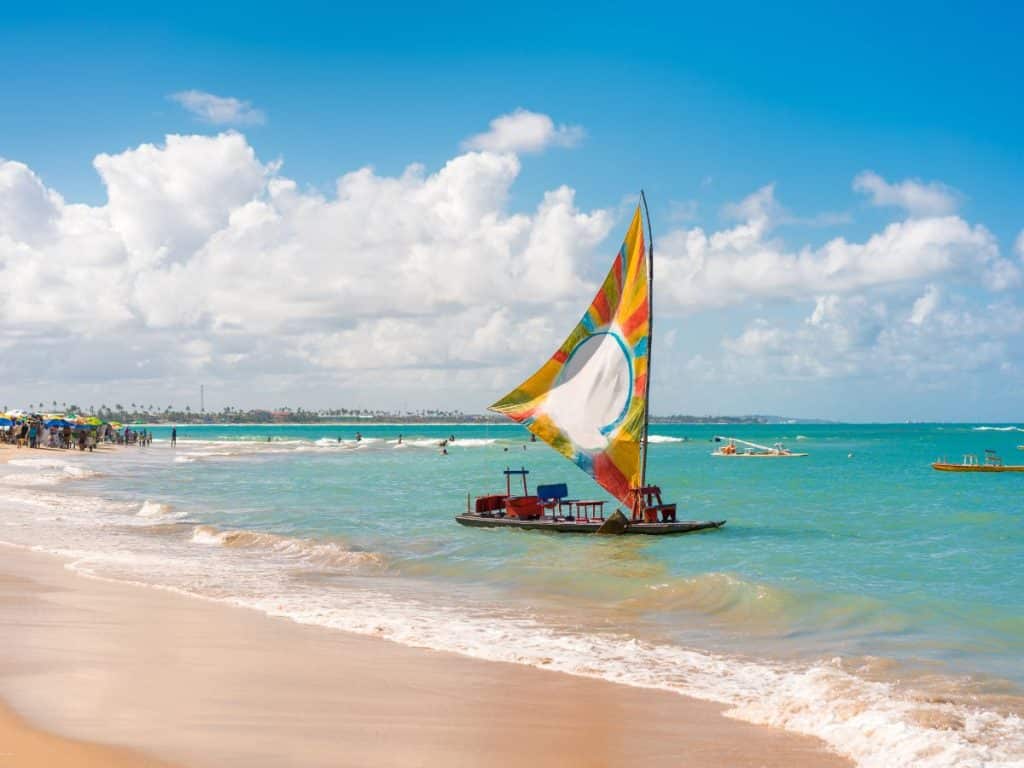
Praia Boa Viagem
Located near Recife Recife’s most popular beach consists of a lively 7-mile stretch of soft sand. The ocean waters in this area are warm and calm due to the protection of the coral reef, making it an excellent beach for some swimming or snorkeling. Perfect for traveling with kids who love the ocean!
Praia do Pina
Located near Recife Another popular beach in Recife is Pina Beach. This is a beautiful sandy beach with many hotels, restaurants, and bars in close proximity – making it the perfect area to plan your beach vacation in Brazil .
Porto de Galinhas
Located 60km south of Recife Porto de Galinhas is south of Recife on the coast of a small beach town. This beach is best known for its bright blue water and beautiful coral reefs, so it’s an excellent place for both scuba diving and snorkeling.
Best Beaches in Northeast Brazil Near Natal

Praia de Genipabu
Located near Natal Genipabu Beach is known for its rolling sand dunes, freshwater lagoon, and relaxing beach atmosphere. The environment here is under protection that bans new development and accentuates the natural scenery. Here, you can rent a buggy and head out to explore the sand dunes.
Praia Ponta Negra
Located near Natal Ponta Negra Beach is a popular beach in Northeast Brazil for beach sports such as volleyball and surfing. It’s a very lively area full of hotels, restaurants, and Barracas – which serve food and drinks. On the south end of Praia Ponta Negra is Morro do Careca, a large dune, and landmark of Natal.
Best Beaches in Northeast Brazil Near Fortaleza

Praia do Futuro
Located near Fortaleza Full of music, bars, and food vendors, Praia do Futuro is a lively and fun beach to visit in Northeast Brazil. In addition to its upbeat atmosphere, there are also chairs and umbrella rentals available – making it the perfect spot for a beach day.
Jericoacoara
Located 300km west of Fortaleza Located in a laid-back beach village, Jericoacoara is quite a long distance from Fortaleza – so it’s worth staying for a few days. You can take the bus or drive there, but it’s the fastest to fly. Jericoacoara Beach is known for its incredible windsurfing and kite surfing. You can also tour the sandy dunes and lagoons or rent a dune buggy to drive around the sand.
What to Know About Northeast Brazil
Northeast Brazil is a large region in Brazil that covers an area of more than 600,000 square miles and is made up of nine different Brazilian states. The population is around 53 million people, and it is home to several coastal cities – such as Salvador, Recife, Natal, and Fortaleza. The northeast has a diverse landscape filled with highlands, beaches, mountains, national parks, and more.
There’s no shortage of beautiful natural landscapes to explore here! However, the region is best known for its stunning coastline and beautiful beaches.
English is common in some areas of Northeast Brazil , like Recife, Salvador, and Fortaleza. However, in the smaller beach villages you are less likely to find English-speakers, so be sure to download a handy translator app before your trip.
Transportation in Northeast Brazil
Since it’s such a large region, transportation around Northeast Brazil can be a little tricky to navigate at times. The most common method of transportation to get to or around the northeast region is to fly or take the bus.
Although taking a bus or driving around Northeast Brazil is possible, it’s sure to be a long journey – especially if you are coming from popular southern cities like Rio de Janeiro or São Paulo .
In my opinion, the best way to get around the Northeast quickly is to fly. When we visited, we booked flights on a couple of Brazil’s domestic, budget-friendly airlines such as Azul and GOL Airlines. We found it the most effective way to get from city to city since most of the cities in the northeast have an airport.
FAQ: Northeast Brazil

A: Northeast Brazil, and Brazil in general, has a reputation for being unsafe. While there are some cities with higher than average crime rates, it’s possible to visit the region safely . Using a local guide, staying outside of high-crime neighborhoods, being alert to your surroundings, and avoiding being in unfamiliar areas at night are all necessary precautions for staying safe in Northeast Brazil.
A: Northeast Brazil has a tropical climate, so temperatures remain warm and humid for much of the year. On average, temperatures in the major cities along the northeastern coast are between 72–88ºF (21–31ºC) for most of the year. The Northeast is known for having a lot of sunny days, but the rainy season is typically between February and May.
A: Northeast Brazil is known for its tropical climate, vibrant culture, coastal cities, incredible national parks, and stunning beaches that stretch for miles. It’s not uncommon to see surfers, snorkelers, scuba divers, and windsurfers enjoying the waves and/or marine environment in this region of Brazil.
Conclusion: Best Places to Visit in Northeast Brazil

Northeast Brazil is a vastly underrated tourist destination that is worth visiting in South America. This region of Brazil has so much to offer – including coastal cities, breathtaking national parks, historic old town centers, colorful architecture, delicious local cuisine, and some of the best beaches Brazil has to offer. Be sure to add Northeast Brazil to your bucket list so you can experience this incredible region for yourself!

4 Tips for Flying with Toddlers During COVID

Columbia, South Carolina Family Trip

10 Best Freeport, Bahamas Beaches: The Ultimate Travel Guide

Best Travel Potty for Toddlers (2024): The Ultimate Travel Toilet Guide
- Work With Us
CURRENTLY IN: Europe

7 Destinations You Have to Visit in Northeast Brazil
When you think of Brazil, you probably think of Rio de Janeiro with its glamorous Copacabana Beach, vibrant Lapa, and the bohemian quarters of Santa Teresa. We loved our time in Rio, but it wasn’t until we traveled north visiting destinations in Northeast Brazil that we discovered a thriving beach scene, unspoiled nature, deep colonial heritage, and unique cuisine of this fascinating region.
*This post may contain affiliate links, as a result, we may receive a small commission (at no extra cost to you) on any bookings/purchases you make through the links in this post. As an Amazon Associate, we earn from qualifying purchases. Read our full disclosure
If you are thinking of visitng Brazil and are looking to explore beyond Rio and Iguazu Falls, these are the destinations we recommend you visit the vibrant region of Northeast Brazil.
1. Salvador
If you are coming to Salvador from Rio de Janeiro (like we did), you’ll find the city to be a shock to the system (but in a good way). For us, its appeal was far beyond the cobblestone streets and colourful buildings of the UNESCO Heritage Listed Old Town and the beautiful views of the sun setting over the ocean from the Santo Antônio da Barra Fort.
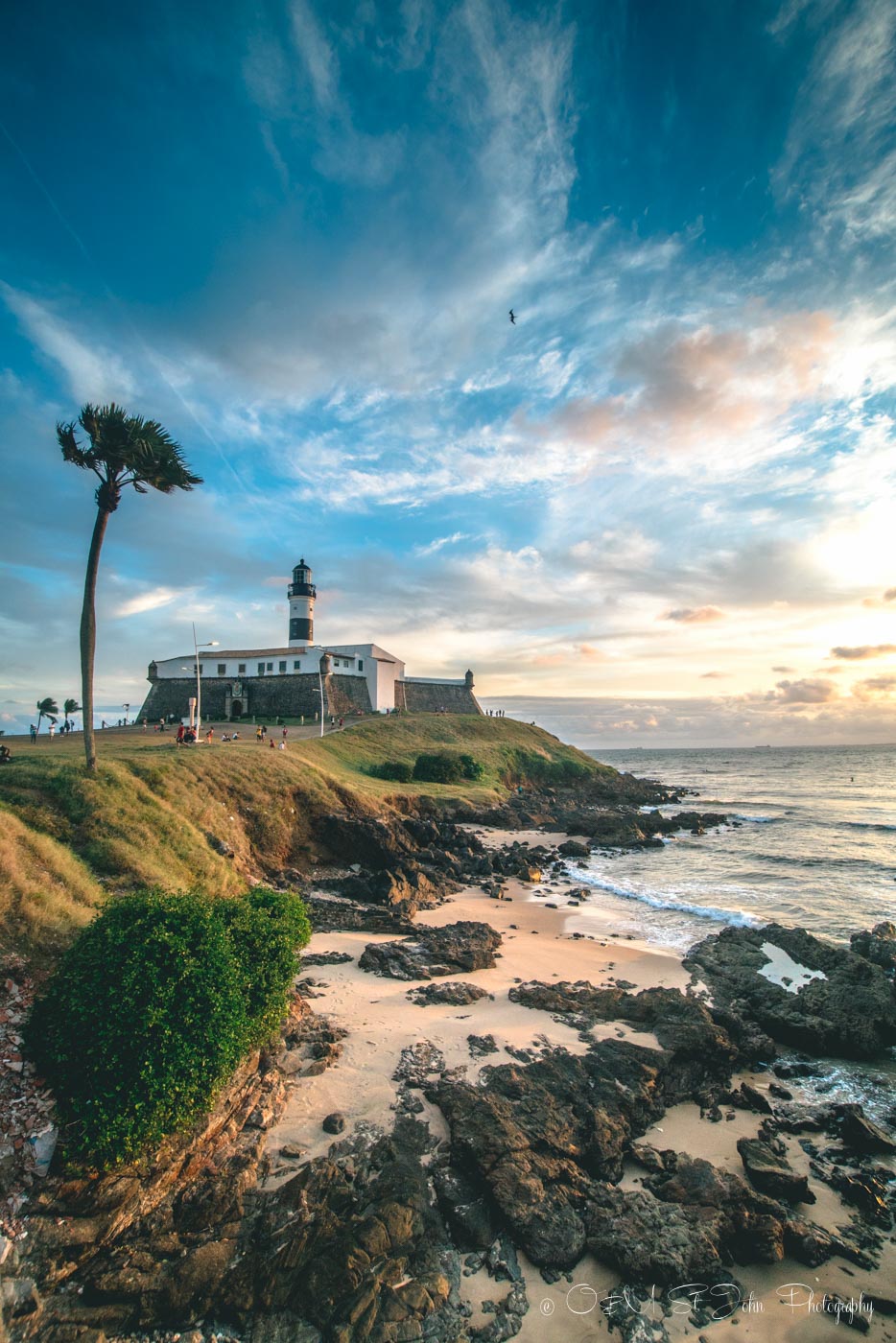
Traveling Soon? Here is a list of our favourite travel providers and accessories to help get you ready for your upcoming trip! Book Your Accommodation HERE Search for Great Tours HERE Get a Car Rental HERE Buy Travel Insurance HERE See our Favourite Camera Bag HERE Grab a Reusable Water Bottle HERE or a Filtration Straw HERE Order an eSim HERE
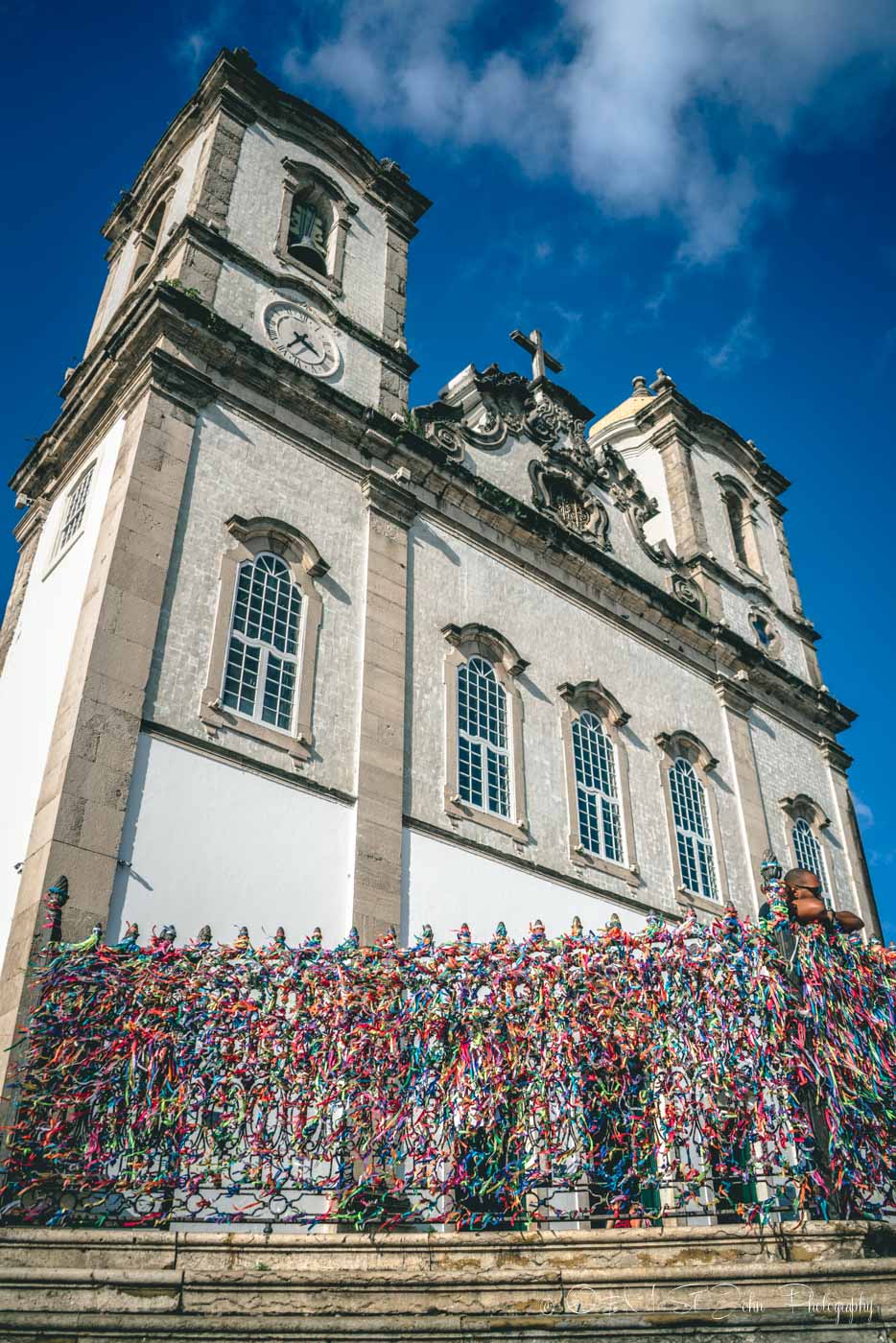
It was here that we got a chance to sample some amazing Bahian cuisine (aracaje and moqueca are the best ), learned a bit about the history of the slave trade in Brazil , and got our first introduction to the capoeira dance . If you are looking for a city to delve into Brazilian culture , Salvador is one of the must-see places to visit in Brazil.
Here’s our video exploring Salvador, Olinda and Fernando de Noronha
At first glance, Recife didn’t strike us as anything special. Its gritty commercial center, full of highrise apartments and business buildings didn’t inspire us to stick around for too long.
But the second we set our foot on Recife’s long sandy drag known as Praia Boa Viagem, we knew we hit a real hot spot. The beautiful stretch of the beach was full of locals and visitors enjoying sun, sand, fresh coconuts, and the fried fish .
In our opinion, Recife is one of the most underrated places to visit in Brazil. If you come here, make sure to spend some time at the beach, catching some sun and taking in the views.
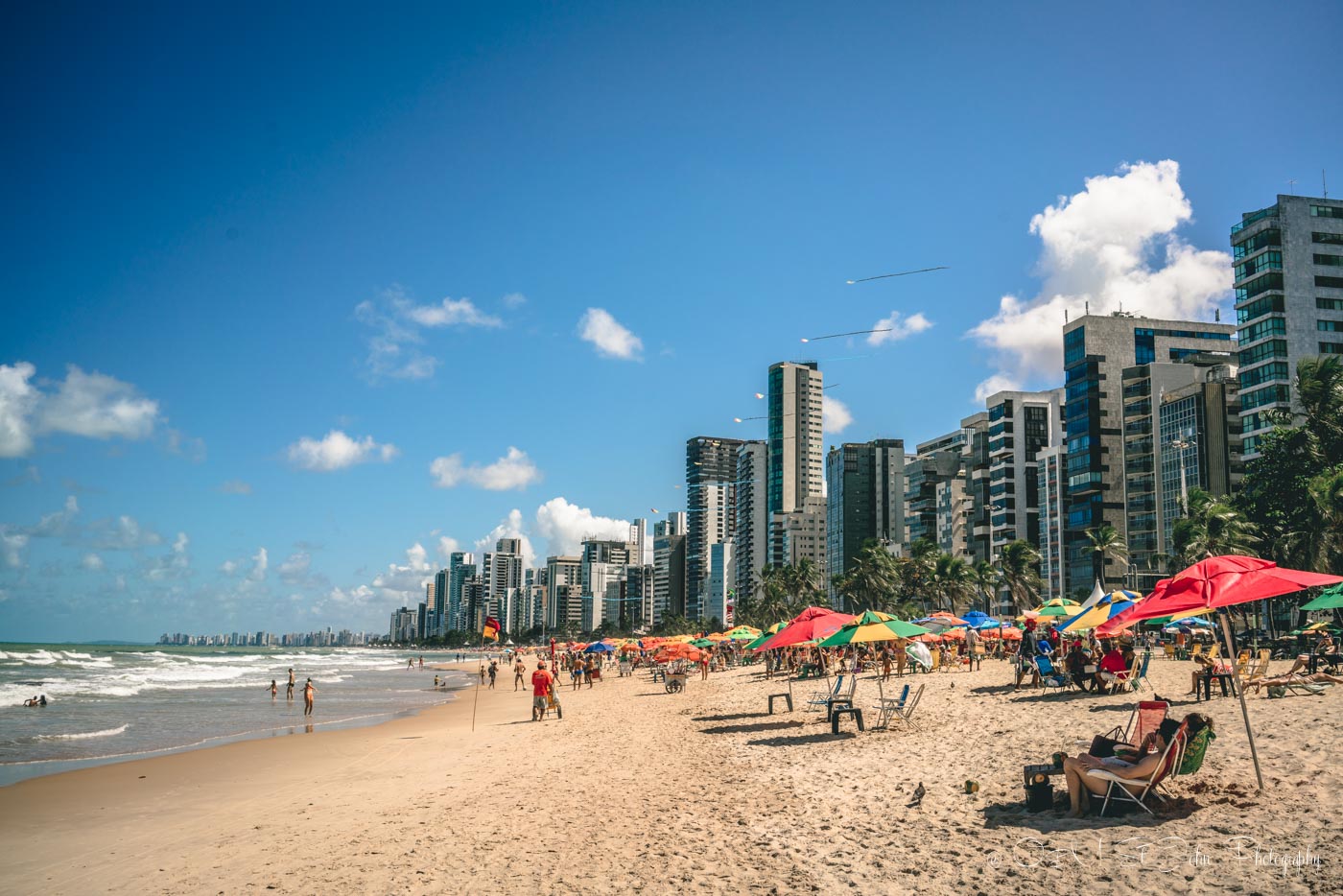
Just half an hour north of Recife sits a pretty little town of Olinda, that in our opinion had more charm and appeal than most other cities in the Northeast of Brazil.
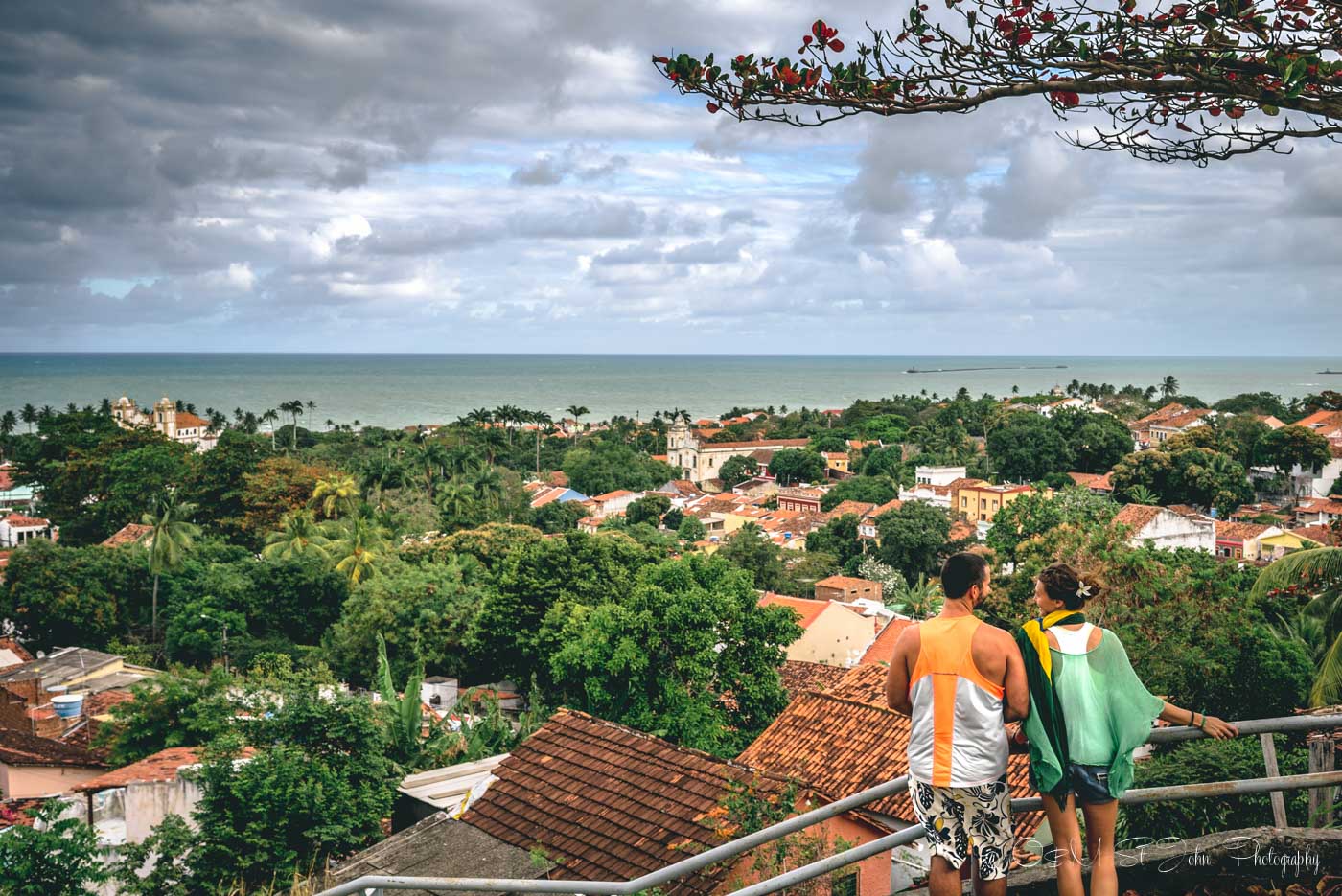
We fell in love with Olinda’s pastel-coloured buildings, winding streets, and beautiful views that emerged once we climbed to Alto da Se, the cathedral square at the top of the town.
Street food and souvenir stalls filled the square with buzz and excitement, making it that much harder to say goodbye to this bohemian town. We recommend adding Olinda in your itinerary of Northeast of Brazil, because it is yet another place that is under mass tourism’ radar (for now). Use the opportunity to visit this gem of Northeast Brazil before it gets affected by mass tourism.
4. Fernando de Noronha
The island of Fernando de Noronha is Northeast Brazil’s best kept secret. It’s exclusive (only 400 people are allowed to visit the island at a time) and it’s expensive (flights to the island, island fees, food, activities, and accommodation added up to be well over our budget). However, there is a good reason why this island located northeast of Brazil is so pricey.
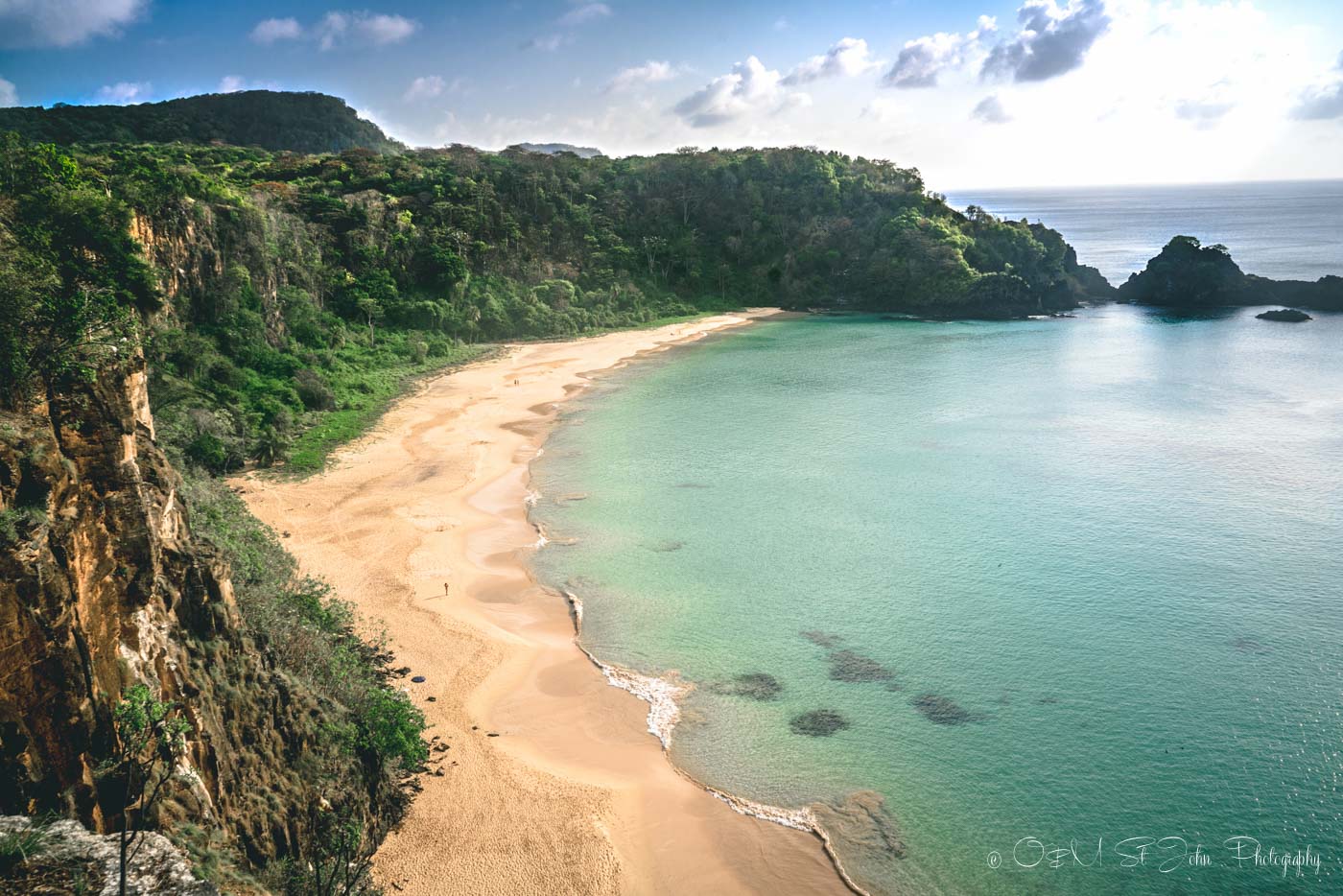
The untouched nature of the island and its surrounding shores is unlike anything else we have seen in Brazil. Fernando is a haven for active travelers offering a multitude of hikes , snorkeling and diving opportunities, and some of the most beautiful beaches in the country. It’s easily one of the best Brazil vacation spots.
5. Morro Branco
Similar to a number of other destinations in Northeast Brazil, the small inconspicuous beach of Morro Branco remains untouched by mass tourism . We say that because, during our visit, we were the only foreigners in the sea of local visitors. We knew that we hit a local hot spot when a tour guide taking a group of locals around the area laughed in our face when we asked if his tour was available in English. Still, another of the best Brazil locations to add to your list!
Heres our video exploring Morro Branco, Jericoacoara and Lençóis
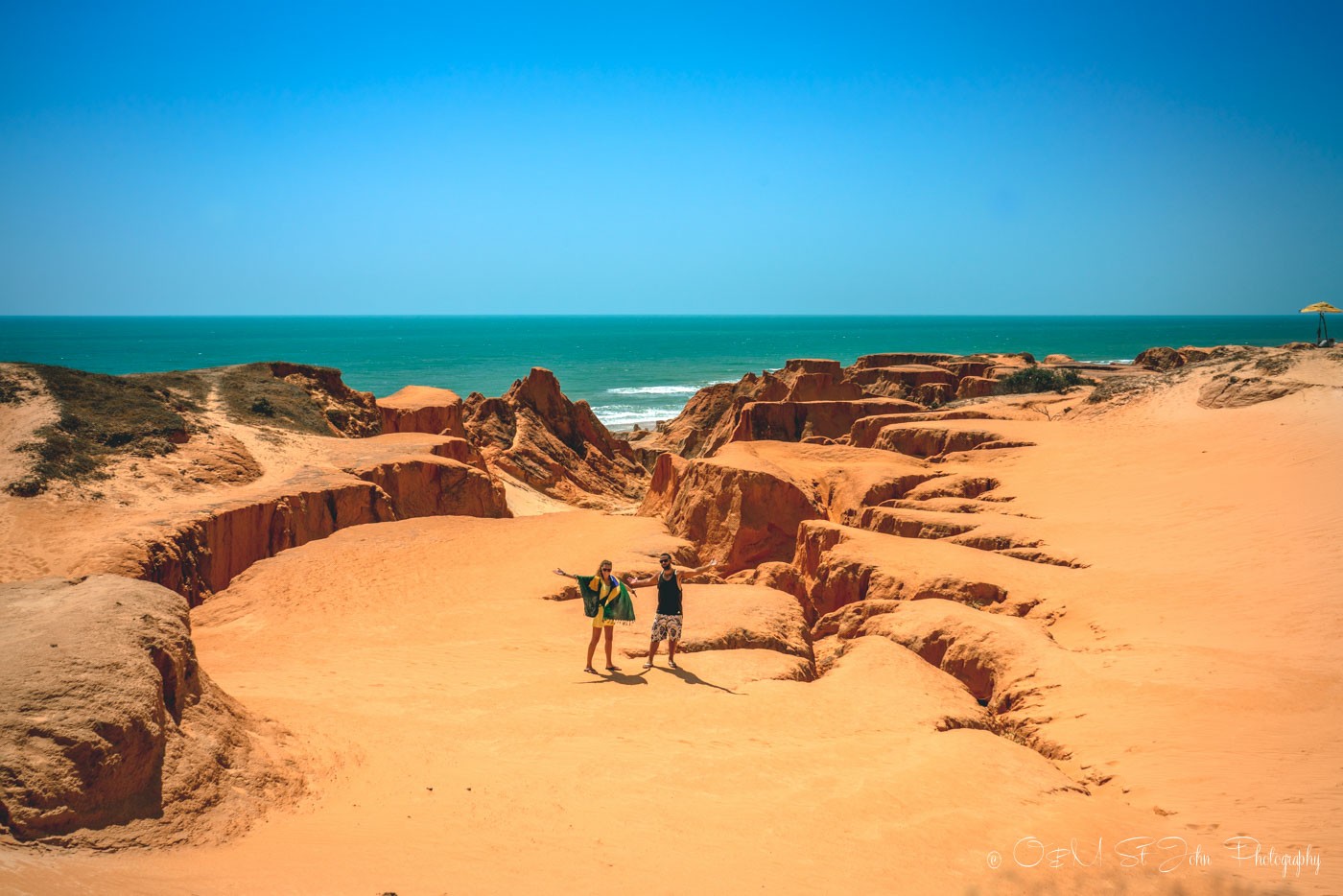
Luckily, the topography of Morro Branco’s sandy cliffs radiating a variety of yellow, orange, and red shades told us everything we cared to know. We walked around the small canyon, running through the heart of the cliffs, completely mesmerised by the views, thrilled to have discovered a spot as unique as this. It’s definitely one of the top places to visit in Brazil.
6. Jericoacoara
The further we traveled in Northeast Brazil, the more sand we encountered. Luckily, Jericoacoara, a small town in the heart of the sandy National Park by the same name, offered more than sand. The town was built completely on the sand, but walking down its Main Street lined with boutique shops, kite surfing schools, and amazing restaurants , it was easy to forget exactly how remote this place was.
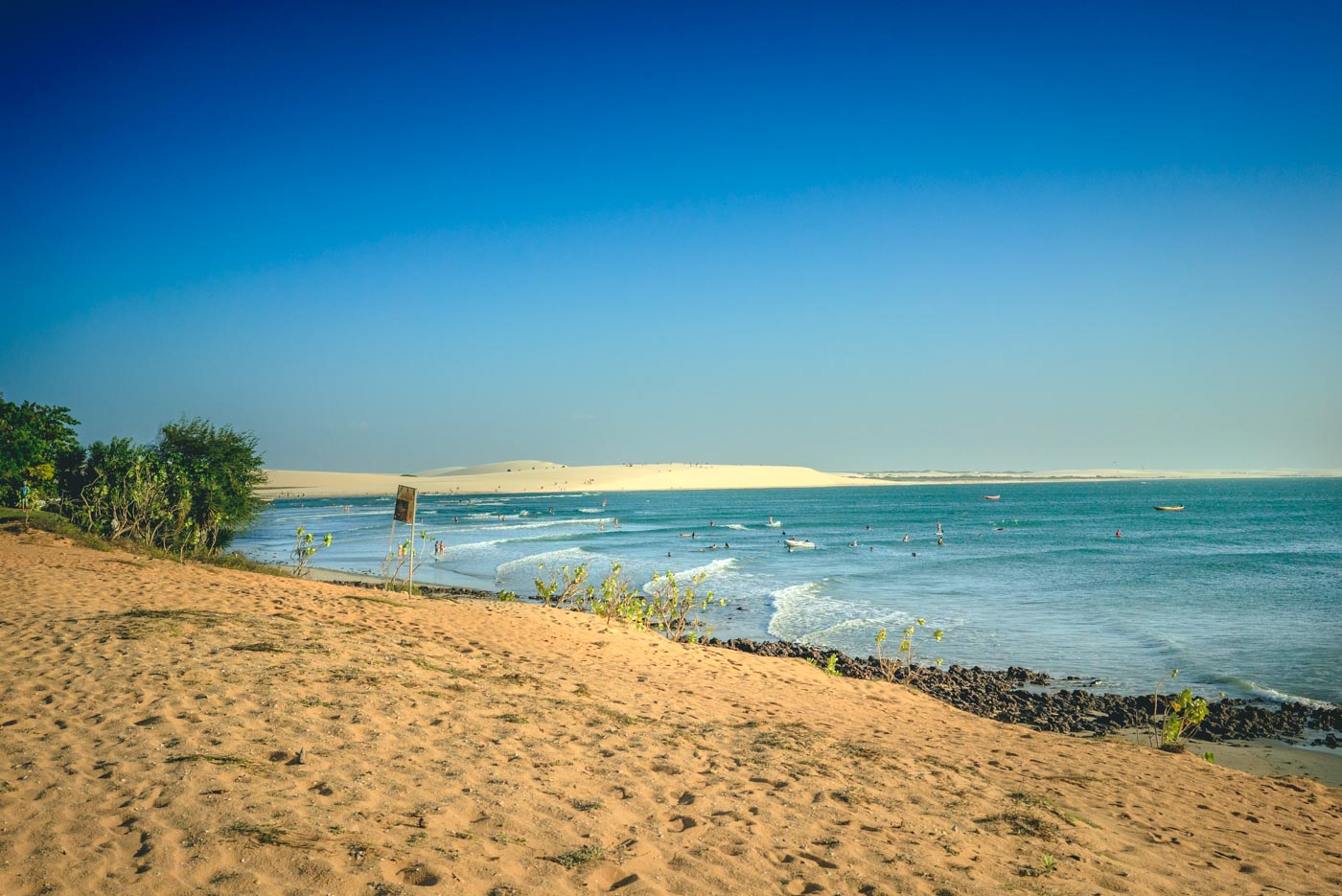
Jericoacoara sucked us in hard. A fishing village turned hippy backpacker town, Jeri had it all. Activities (kite-boarding, surfing, jeep tours, etc), beach , shopping , dining , and a happening nightlife make Jeri an easy place to get stuck in. We almost did.
7. Lençóis Maranhenses
If there was a place worth leaving Jeri for, it was the sprawling sand dune park of Lençóis Maranhenses. Lencois is an incredible natural phenomenon, a place where sand dominates all, where the horizon is filled with dunes and more dunes, where sheep and goats farm on the tiniest patches of grass, and where beautiful green freshwater lagoons create an incredible landscape. But besides the pristine landscapes, this place in Northeast Brazil offers a much-needed refreshing swim after a long hike up and down the dunes.
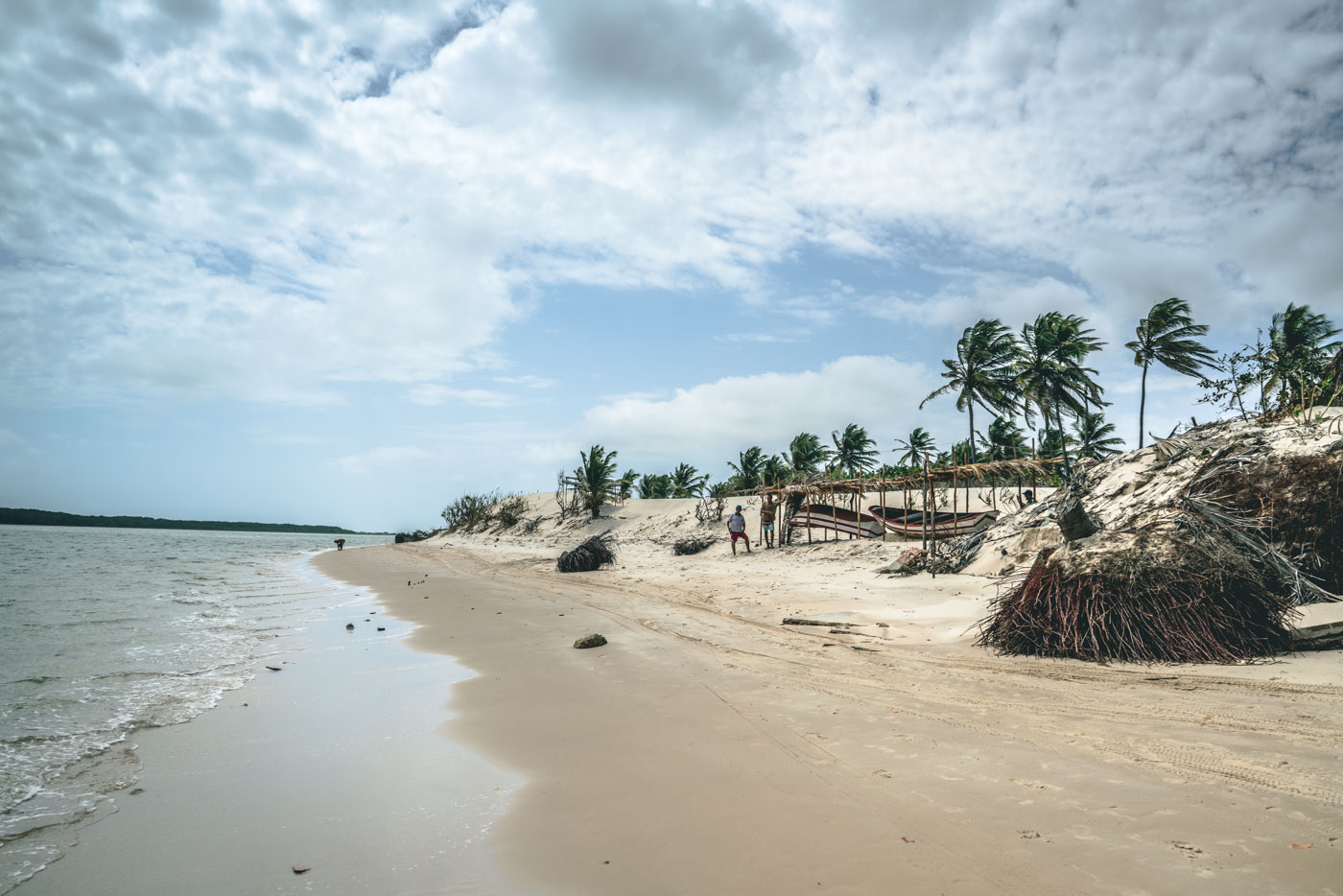
WHY NORTHEAST BRAZIL TOPS OUR LIST OF PLACES TO VISIT IN THE COUNTRY
Brazil boasts unparalleled nature and biodiversity, vibrant cities and friendly locals. And while many destinations in Brazil were interesting to visit, it was Northeast Brazil that really got us.
This part of the country has a serene nature and environment and so many undiscovered places. If you are wondering what places to visit in Brazil, we definitely recommend adding some Northern Brazil destinations to your list.
Have you ever been to the Northeastern part of Brazil? What did you think? Did we miss anything?
About the author.
Oksana & Max St John
7 thoughts on “7 destinations you have to visit in northeast brazil”.
Hi Oksana and Max,
You’re absolutely right, when it comes the name of Brazil in our mind, the Rio de Janerio comes first which is the incredible place in the world. I have a wish to visit this place, see when it comes true.
Thanks a lot for suggesting the wonderful places of Brazil, I really unknown about the places which you have mentioned here. Sounds like each one is famous and perfect place to make the Brazil trip full of fun and relief. This is really interesting to know these places of Brazil, each one looks quite beautiful and suitable for make our Brazil trip awesome.
The island of Fernando De Noronha is amazing in looks and I got impressed to see the beauty of this place. Also, Lencois Maranhenses, Recife, Salvador is perfect find for trip. Thanks for highlighting the amazing destination of Brazil. I would like to visit Brazil soon. Have a great week ahead. – Ravi.
Hey there Oksana and Max,
I am currently living in Belo Horizonte, Brazil for a year. I am planning though on visiting Northeastern side of Brazil on September but I was a little bit distracted and hazy by the route to be taken in order to reach such places. Also bare in mind that i am on very tight budget around 2K Reais. So I would prefer if i would take a flight from Belo Horizonte to a place and then from the last destination to Belo Horizonte once again and the rest to be done by buses. So if you would mind helping me out finding the way and give me some tips regarding this matter!
Thank you so much guys <3
Hi Yarah, it is possible to get around Brazil by bus. It’s a cheaper and much more sustainable way to travel around the country. Bus rides between main cities can be long, so we recommend planning lots of stopovers in smaller towns along the way to break up your journey and see lesser visited destinations along the coast.
Wow, this Morro Branco looks amazing!! I have never heard of it, wish I could visit it sometime *-* And congrats on the post, it is really good and with great tips! Another tip for traveler is to get around Brazil by bus… sometimes it a long trip, but I think the buses are good at comfort and, most important, cheaper 🙂 I get my tickets online.
Hello guys!! We are planning a visit to the northeast of Brazil and would like a recommendation for a calm, beautiful and relaxed beach to rent a house….. It also should be possible to do a bit of kite surfing there….. any suggestions?? Yhanks so much, Marisa
Hi Marisa, We loved Jericoacoara. Great for kitesurfing and lots of lovely beaches around. Nice place to part up for a while.
Oh, I know the NE Region, I live here! Hahahaha. I’m very happy to see our beautiful region being noticed. I just felt I needed to add a few places from my own state, Alagoas, because it tends to go unnoticed. Alagoas is the second smallest state in the northeast (and the country), but it’s definetely one of the most beautiful. The beaches of Maragogi, Japaratinga, Patacho (in the city of Porto de Pedras), Mirante do Gunga and Barra de São Miguel are just a few examples. The historic cities of Penedo and Piranhas. The canyons of the São Francisco river. Google these places and you’ll Want to come back here right away, I guarantee you hahahahaha. Regards and safe travels!
Leave a Comment Cancel Reply
Your email address will not be published. Required fields are marked *
This site uses Akismet to reduce spam. Learn how your comment data is processed .
Tanzania Trip Details
Enter your name and email to get our Tanzania Safari Trip brochure with more details about this trip in your inbox.
Join our 2025 Group Trips Pre-sale List
Be the first to know about NEW Trips and SPECIAL Offers!
Have 5 minutes to share more info? Fill out the Pre-Sale trip survey HERE
Reignite the Feminine Retreat
Love the idea of a women-only retreat in September 2024?
Help me decide where we should go!
Our women-only gatherings will be limited to 8-10 people, so leave your details below to add yourself to the waitlist.
We'll email you first to share all the details of the trip.

The 10 best places to visit in Northeast Brazil
Northeast Brazil is a region filled with natural beauty, rich culture, and fascinating history. With its paradisiacal beaches, lush landscapes, and charming historic cities, the Northeast is a must-visit destination for travel enthusiasts.

The capital of Bahia is known for its vibrant atmosphere and rich Afro-Brazilian heritage. The Pelourinho, a historic neighborhood with cobblestone streets and colorful colonial houses, is a UNESCO World Heritage Site and is filled with culture, music, dance, and typical cuisine.
Porto de Galinhas Beach
This is one of the most famous beaches in Brazil, known for its crystal-clear waters, natural pools teeming with colorful fish, and stunning coconut palm trees.

Lençóis Maranhenses
A true wonder of nature, this unique area is characterized by its immense white sand dunes that form temporary freshwater lagoons between the months of June to September. A real paradise for photography and nature enthusiasts.

The capital of Ceará is famous for its extensive beaches, such as Praia do Futuro, where you can soak up the sun and enjoy delicious local cuisine, like the famous “caranguejada” crab dish.

Recife and Olinda
Recife is a city full of culture and history, known for its rivers and bridges. Olinda, its neighboring city, is a charming colonial town with cobblestone streets, historic churches, and exciting cultural festivals.

Jericoacoara
A paradise for water sports lovers, Jericoacoara is famous for its dunes, lagoons, and incomparable beaches. It’s an ideal destination for windsurfing, kitesurfing, and other thrilling activities.

Fernando de Noronha
This archipelago is an ecological paradise and a marine conservation area. Its white sandy beaches, crystal-clear waters, and diverse marine life make it one of Brazil’s most coveted destinations.

Chapada Diamantina
For adventurers, Chapada Diamantina offers breathtaking trails, incredible waterfalls, and breathtaking mountain landscapes. It’s a paradise for nature lovers and outdoor sports enthusiasts.

The capital of Maranhão is a city rich in cultural and architectural heritage. Its historic center is recognized as a UNESCO World Heritage Site and is known for its colonial mansions and folk festivals.

Known as the “Brazilian Caribbean,” Maceió is famous for its clear waters and natural pools formed by coral reefs. Praia de Ponta Verde and Praia do Francês are some of the most popular beaches.

These are just a few of the many wonders that the Brazilian Northeast offers. Each destination has its own identity and charm, providing unforgettable experiences for travelers wishing to explore this fascinating region of Brazil.

Matheus Araújo
Matheus is an entrepreneur at Araujo Media, where he serves as CEO and Creative Director. He shares analyses on his personal blog "matheusaraujo.me" and is currently pursuing a degree in Advertising and Propaganda. Moreover, he has a passion for history, particularly that of Brazil, which led him to become the founder and editor of the Brazilian History portal.
Share this:

Recent Posts
- D. Pedro II – The Untold Story: The Last Emperor of the New World Revealed Through Unpublished Letters and Documents | Review
- The meeting between Dom Pedro II and the writer Victor Hugo
- The origin of French Bread in Brazil
- Dom Pedro I’s Epilepsy
- D. Pedro – The Untold Story: The Man Revealed by Unpublished Letters and Documents | Review
- The history of Granado, the Official Pharmacy of the Brazilian Imperial Family
- The origin of the popular saying “The customer is always right”
- Titília and the Demonão – The Untold Story: Love life in the imperial court: Messages from D. Pedro I to the Marquise of Santos | Review
Privacy Overview
TOURIST MAKER
- Travel Guides »
10 Best Places to Visit in Northeast Brazil

When hear about Brazil , most people around the world automatically think about Rio de Janeiro , its numerous attractions, its golden beaches, and of course, the Carnival, which is the most popular on the planet.
On the one side, for a country is good to have so famous cities on its territory.
In this case, however, Rio attracts too much attention, and many other places, which are actually just amazing, remain less famous and just don’t receive the attention they deserve.
Here we would like to show you 10 places you should definitely consider for your next vacation.
They are all located in the Northeast Region of Brazil and reveal one less popular but really adorable side of the country.
1. Lençóis Maranhenses, Maranhão

The Lençóis Maranhenses National Park is located in the northern part of the state of Maranhão, on the coast of the Atlantic Ocean.
It covers an area of 1550 sq.km. and is a place of unique natural beauty.
It is really very contrasting compared to the rest of Brazil because this is one of the most forested and green countries on the planet, and in the same time, the National Park rather looks like a sandy desert.
Most of its territory is occupied by huge sandy dunes and is practically devoid of vegetation.
At the same time, the area receives abundant precipitations over the year.
For this reason many people call Lençóis Maranhenses “the rainiest desert on the planet”.
There is one more thing that makes this place so unique.
The sandy dunes are diversified by freshwater lagoons, which are sometimes home to small populations of fish.
They usually come here during the high-water season of the local rivers.
2. Fernando de Noronha Island, Rio Grande do Norte

Fernando de Noronha is one of the most beautiful and important places to visit in the Northeast Region of Brazil.
Since 2001, together with the other islands of the archipelago with the same name, Fernando de Noronha is under the auspices of UNESCO.
It is located approximately 358 km northeast of the state of Rio Grande do Norte although actually as a municipality it belongs to the state of Pernambuco.
The island is known for its fabulous golden sandy beaches, which are often compared to the beaches of Hawaii and are considered among the most beautiful in South America.
Its warm and full of life tropical waters attract divers from around the world.
However, the number of visitors is limited to about 500 per day!
The island enjoys perfect weather and temperatures between 28 and 30°C during the day and night temperatures of around 24°C.
3. The old town of São Luís, Maranhão

São Luís was founded in 1612 by French seafarers. Over the centuries the city has been influenced by people from different parts of the world but mostly by French, Spanish, Dutch, and of course by Portuguese.
All of them have left their own cultural imprints over the face of the city.
The old historic centre of São Luís, the capital of the state of Maranhão, is considered one of the most beautiful in the Americas, together with places such as Havana in Cuba or Cartagena in Colombia .
Because of its architectural treasure, today this place is a real museum under the open sky.
Since 1997, the city is under the auspices of UNESCO .
They often compare the city of São Luís with the capital of Portugal , Lisbon, and the similarity between them is really obvious in many aspects.
4. The beaches of Morro de São Paulo, Bahia

Morro de São Paulo is a small town located on the northern tip of the island of Tinharé, in the central coastal part of the state of Bahia.
The town is really charming but not its old spirit is what makes this place so special.
Actually, the town is famous all across Brazil for its legendary beautiful seven beaches.

They are just incredible and are covered by the finest golden sand.
The coastal water is azure and shallow, which makes Morro de São Paulo the perfect place for a nice summer vacation.
In addition, the summer season here never ends so you can enjoy equally good weather in January and in July.
The beaches are separated from each other by coastal rocks, forming several larger or smaller adorable beaches.
The seawater temperature is around 25 – 28°C throughout the year.
The average temperature during the day is 26 – 30°C so the perfect weather is guaranteed.
5. The old town of Olinda, Pernambuco
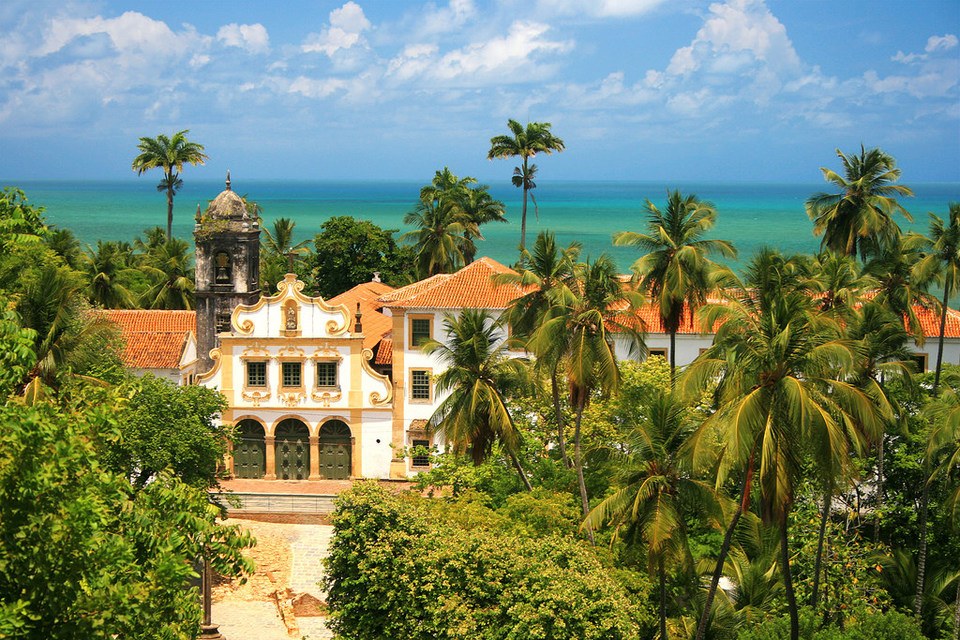
The old town of Olinda in the state of Pernambuco is the best preserved colonial city on the territory of Brazil, and since 1982, it is under the auspices of UNESCO .
It an exceptionally charming place, with very well preserved architecture and numerous building from 16 century.
Although this is not the oldest city in the country, there is no other place Brazil to offer such an authentic historical atmosphere from the earliest days of Brazil.
Nowadays, most of the tourist usually visit the South and the Southeast of Brazil, and sadly, many people haven’t even heard about this treasure.
However, for a real traveler, who wants to feel the real taste of Brazil outside the banal tourist routs, the old town of Olinda is a must!
The only you should think about in advance is the temperature.
Here, even in July (the coldest month), the average temperature during the day is over 27°C in the shade!
6. The beach village of Canoa Quebrada, Ceará

Canoa Quebrada is a small and very quiet tourist village on the coast of the state of Ceará, in the Northeast Region of Brazil.
It is located approximately 125 km southeast of the downtown of the famous Brazilian metropolis of Fortaleza.
This place is a well known destination for outdoor activities.
Its popularity comes mostly from the fact that it is a great kitesurfing destination.
Actually, Canoa Quebrada is considered one of the kitesurf capitals in the world, so if you are into this water sport, this place is a must for you!
Except as a kitesurf hot spot, Canoa Quebrada is also famous for its sandy dunes.
The stripe of fine golden sand is nearly 5 km wide at some places, so it is too wide to be called simply a beach.
It rather looks like a smaller model of the Sahara desert .
If you want to explore the area, the best way to do it is by buggy.
7. Chapada das Mesas National Park, Maranhão

Chapada das Mesas National Park is one of the most beautiful wild places to visit not only in Brazil but in the world.
This small piece of the heaven is located in a picturesque remote area in the southwestern parts of the state of Maranhão and covers a territory of around 159,952 hectares.
This is one of the places in the country that really worth a visit.
Here you will find an amazing combination of some of the most beautiful waterfalls in the country such as São Romão Waterfall and Prata Waterfall, wild savannah, deepwater rivers surrounded by dense tropical vegetation, wonderful canyons and rock formations with strange shapes as well as a great variety of species of wild animals.
The site was declared a national park in 2005.
The closest city to the national park is Carolina, which is located at one of the meanders of the Tocantins River and has a population of less than 24,000 people.
8. Historic Centre of Salvador de Bahia, Bahia
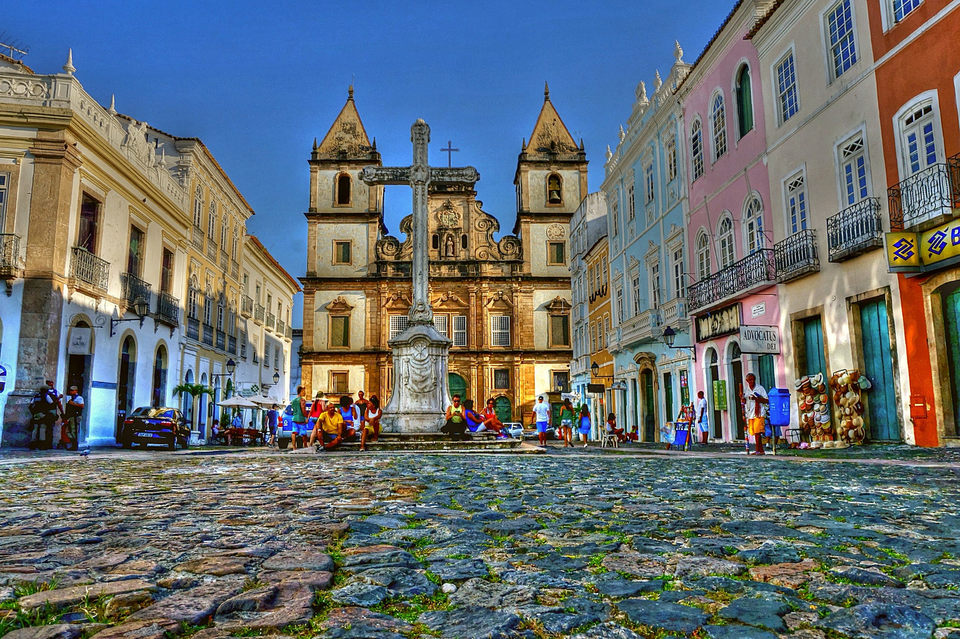
If you visit the Northeast Region of Brazil, you definitely have to pay some special attention to one of the old capitals of the country – Salvador.
The old town of the city is known for its rich colonial-style architecture. Since 1985, the historic centre of the city is under the auspices of UNESCO .
From 1549 to 1763, as we already said, Salvador de Bahia (the official name of the city) was the capital of Brazil, and this explains its rich historical spirit, which could be compared only to some of the oldest cities in old Europe.
The place is known under the name Pelourinho, and it is a really great place to buy some souvenirs, to visit some small old fashioned coffee or restaurant, or just to walk around the paved streets enjoying the colorful building.
9. Chapada Diamantina National Park. Bahia

If you want to visit a mysterious and picturesque place in Brazil but you still haven’t decided where to go, Chapada Diamantina National Park is the place for you.
It offers amazing landscapes, including forested plateaus, deep valleys and green canyons.
The area is home of a great variety of species of wild animals.
It covers an area of around 152,142 hectares in the central parts of the state of Bahia and is located more than 400 km west of Salvador de Bahia.
The national park is well known also for its caves.
The most famous of all is the Blue Well – a deep flooded cave, which is considered the most beautiful in South America.
10. Porto de Galinhas, Pernambuco
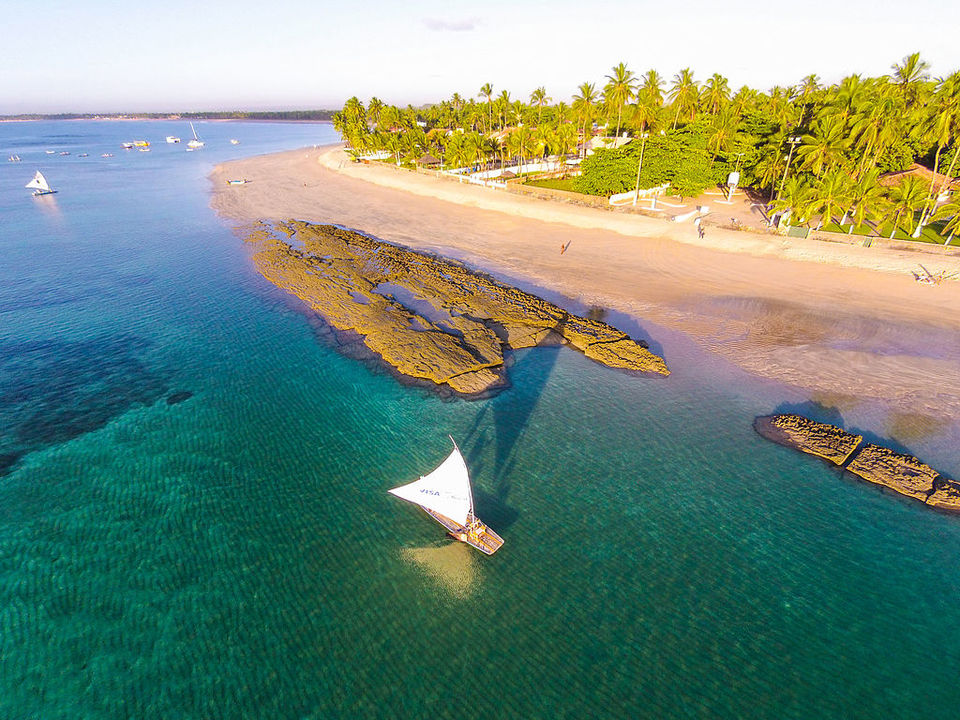
Porto de Galinhas is located on the coast of the state of Pernambuco, approximately 30 km south of the city of Recife. The place is one of the top tourist destinations of Brazil.
It attracts tourists with its fabulous beaches, shallow turquoise waters, and year round great weather with temperatures between 27°C in July and 30°C in January.
It is one of the most important places to consider if you are planning a vacation in Brazil.
This place is known as an important yachting hot spot.
Snorkeling is another activity you can practice here.
It won’t be difficult even if you have no any experience because the reefs are just a few steps of the golden sandy beach.
In addition, the level of services in the local hotels and restaurants in this popular tourist destination is known as one of the highest in Brazil and South America as a whole.
You might also like

7 Best Things to Do in Wildhorse Lake (Oregon)

20 Best Things to Do in Fernando de Noronha (Brazil)

23 Best Things to Do in Parga (Greece)
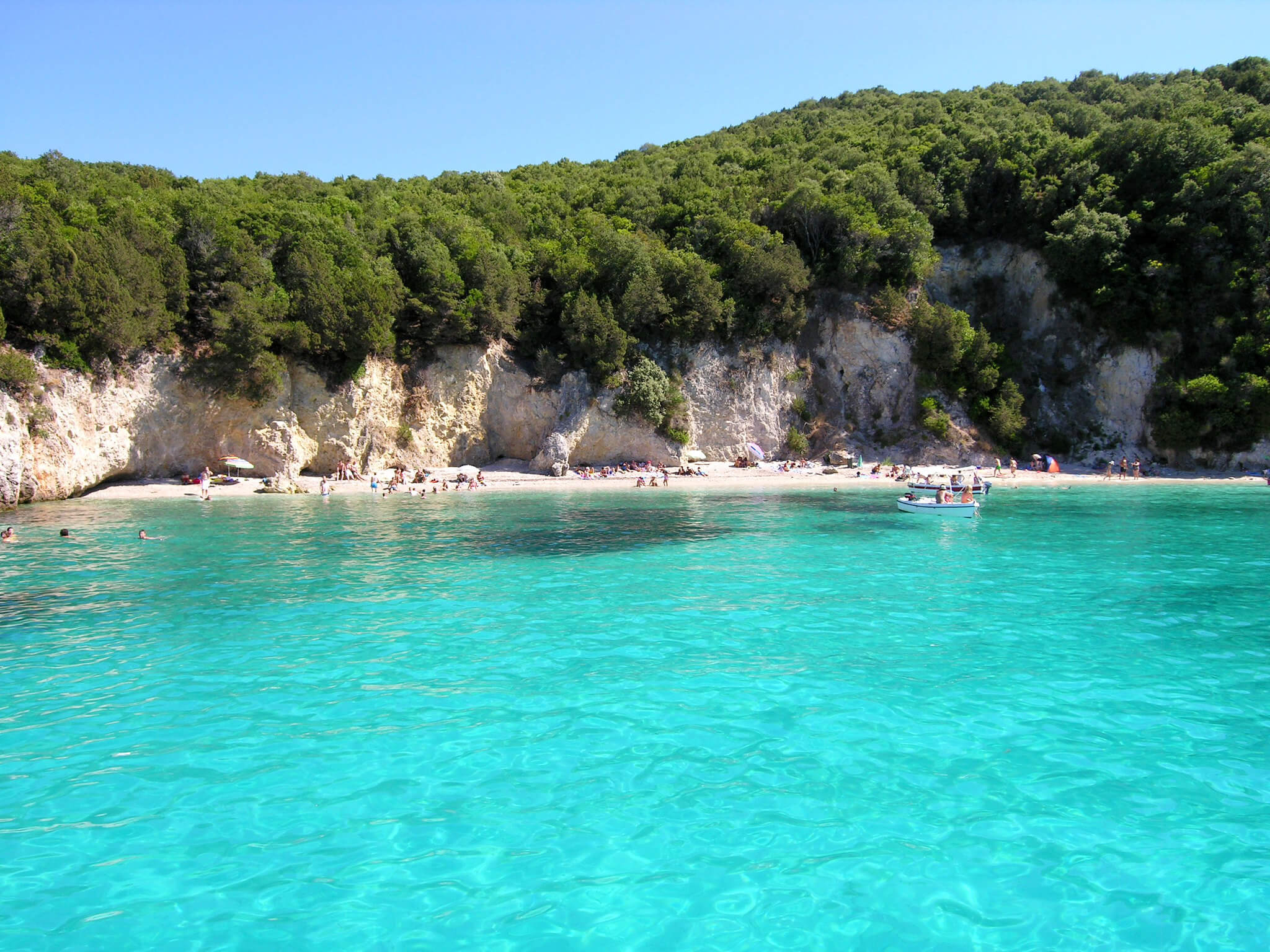
10 Best Things to Do in Sivota (Greece)

25 Best Places to Visit in Russia
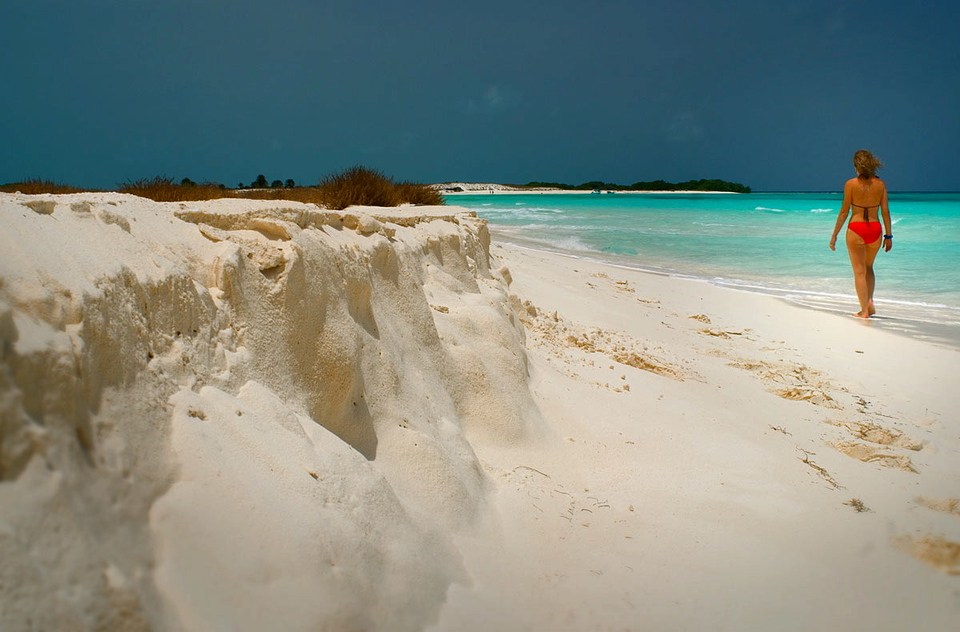
Atolls in the Atlantic

8 Best Languages to Learn (Proven Tips)

8 Best Things to Do in Giethoorn (The Netherlands)

10 Best Black Sea Cities

If we only had 2 weeks: North Brazil itinerary

Sometimes, I use affiliate/sponsored links with my recommendations, which if bought through might earn me a few pennies at absolutely no extra cost to you . This helps with the cost of keeping this site alive so I can continue to guide you on your travels. Please remember that I would never ever ever recommend anything I don’t or wouldn’t use myself. Big thanks to each and every one of you who have trusted my recommendations so far! Lozzy x
We’re lucky enough that our location independent business means that we can travel extra slow. If this is an option to you, we strongly recommend that you take your time, really getting to know and appreciate each country you’re in rather than try to cram as many passport stamps as you can into a few months. We would advise at least one month in each country in Latin America , perhaps with the exception of Panama and Belize, which have less going on.
However, that’s not always possible, as we are often asked by people who only have a 2 week holiday from their jobs where we would prioritise in the given time.
After this ideal 2 weeks North Brazil itinerary, I recommend also reading:
- 32 tips for safe travel in South America
- The 15 best Brazilian films and TV series
- Bank ATMs for free cash withdrawals in Latin America
So behold! Here is our 2 weeks North Brazil itinerary for anyone who is tight on time but still wants to soak up the best that this incredible country has to offer. Most visitors flock to the coastlines and landmarks of the South of the country, so by choosing to spend your in the North you’ll definitely being seeing some different spots to the usual Brazil itinerary.
This 2 weeks North Brazil itinerary will have you alternating from colonial cities to beaches in a whirlwind tour of the coastline, ending in an awe-inspiring trip to see the out-of-this-world sand dune lagoons of Lençóis Maranhenses in Maranhão. Even though I’ve been there, I’m still jealous that you’ll go!

Things to consider when planning a trip to North Brazil
Remember, Brazil is GINORMOUS, like almost the size of Europe, and plane or bus transport internally tends to be both long and relatively expensive compared to the Latin American average. It’s not unusual to see 20, 30 and 40-hour buses running up and down the country, but luckily we have guides for you on what to look for in a night bus in South America and how to stay safe and comfortable on night buses .
When planning your 2 weeks North Brazil itinerary, you need to factor in these increased travel times, as well as the fact that routes between cities can’t always be assumed to exist, even if they are both major or they look close on the map. Brazil needs a bit more travel prep than other countries in Latin America, in our experience!

As you only have a fortnight in North Brazil, we highly recommend you fly as much as you can afford so as to save time – for the below 2 weeks North Brazil itinerary, this would mean flying from Porto Seguro to Salvador, then Recife to São Luis , and onto Rio de Janeiro to fly back home.
However, if you’re on a budget you can save money on accommodation but taking some of the journeys via night bus – you just may feel a bit groggy the next day!
Even though this is a 2 weeks North Brazil itinerary, we’ll start you off from the most southerly point of the trip, but it’ll probably be in your best interest to connect through Rio de Janeiro as this tends to offer the cheapest flights from Europe or North America. If you’d rather stay around the Rio area, don’t miss out on our 2 weeks South Brazil itinerary , too.
2 weeks North Brazil itinerary:
Here’s a quick run-down of my suggested 2 weeks North Brazil itinerary with recommended places to stay; below I’ll tell you more about what to do in each of these destinations.
What not to miss in your 2 weeks North Brazil itinerary
Days 1 to 4: porto seguro.
Kick off your 2 weeks North Brazil itinerary with a stroll along the port edge to see all the beautiful houses. Take a bus or rent a car to visit the hilltop church of Santa Cruz Cabrália and then join the beach parties at Axé Moi and Tôa Tôa. on your way back.
The next day, hop on the ferry to Arraial d’Ajuda and add a ribbon of Bonfim (Bahia wish bracelet) to the wall of the Matriz Nossa Senhora D’Ajuda church for good luck before spending an afternoon on the beach. Grab cocktails from one of the stalls on the Passarela do Álcool (alcohol catwalk).
Click here to read my full Porto Seguro guide.

Days 5 to 7: Salvador
Eat grilled cheese as you catch a sunset sitting under the lighthouse in the Barra district, browse Pelourinho in the daytime, have lunch on the balcony of Cafélier (you need to reserve a table in advance!), chill on the beaches of the Rio Vermelho district.
This is the best point in your 2 weeks North Brazil itinerary to soak up some spicy city nightlife; the area around Rio Vermelho is a good place to be for it!

Days 8 to 9: Maragogi
Get a tour to Praia dos Carneiros to see some gorgeous beaches and check out the famous green chapel at the water’s edge.
Back in Maragogi, swim in the Gales natural pools and walk the La Barra sand bar out into the sea.
Click here to read my full Maragogi guide.

Days 10 to 13: Barreirinhas (for Lençóis Maranheses)
With absolutely zero doubts in my mind, this will be the highlight of any 2 weeks North Brazil itinerary.
You have a few days here not only to get through the cumbersome transport necessities (like a flight to São Luis via Recife) but also to have a chance to really appreciate the natural wonder of Lençóis Maranhenses. You can also grab some downtime on the sandbacks of Atins.
Click here to read my full Lençóis Maranhenses guide.

Day 14: Rio de Janeiro
Ok, so depending on your flight times this will likely be a fleeting visit, but it’s a perfect way to sign off your 2 weeks North Brazil itinerary. Rio is an absolute hub of vibrance, and there’s a lot you can cram in during a one day stop-over before heading home.
My parents actually hired a taxi driver during their 12-hour connection in the city and ticked off 4 or 5 activities from the list of fantastic things to do in Rio de Janeiro .

Got 3 weeks in North Brazil?
Even better! Definitely add in a trip to Natal (below) and Pipa in between Maragogi and São Luis, though note that the transport between those places isn’t great so your cheapest option afterwards may be to get to Recife to catch a flight or 27-hour (gulp) bus to São Luis. Recife itself is a cool place to spend a couple of days, too.
An easier beachy alternative is to extend your time in the vibrant city of Salvador, getting the ferry over to Morro de São Paolo for a couple of days. If you’re done with the beach life, catch a flight up to Manaus and take some tours down the Amazon river to explore the rainforest.

If you haven’t yet decided where in Latin America to spend your 2 weeks holiday, you might also want to check these out before booking those flights!
- 2 weeks South Brazil itinerary
- 2 weeks Uruguay itinerary
- 2 weeks Peru itinerary
- 2 weeks Colombia itinerary
- 2 weeks Ecuador itinerary
- 2 weeks Belize itinerary
- 2 weeks Nicaragua itinerary
- 2 weeks Guatemala itinerary
- Which country to visit in Latin America?

Liked this 2 weeks North Brazil itinerary?
Give it a cheeky save as a pin on Pinterest to be able to find again later!

Last Updated on 17 October 2022 by Cuppa to Copa Travels
Read these posts next!

If we only had 2 weeks: Peru itinerary

If we only had 2 weeks: Ecuador itinerary

If we only had 2 weeks: Guatemala itinerary
Leave a comment :) cancel reply.
Visit These Incredible Beaches In Northeast Brazil Instead Of Rio

Your changes have been saved
Email Is sent
Please verify your email address.
You’ve reached your account maximum for followed topics.
Texas' Best Swimming Hole Is Also One Of America's Deadliest Dive Spots
This banff lake hides an unsuspecting secret under the surface, 7 colorado towns with the best quality of life in the rockies.
It's impossible to talk about Brazil and don't think about its beaches and great weather. Although Rio de Janeiro is the most popular destination — especially during Carnaval — the country has other incredible places for beach lovers.
The Brazilian Northeast has a coastline that stretches over 1,800 miles, featuring secluded beaches with calm waters and palm trees. Another great thing about the Northeast is that the sun shines most days in this region and can be visited year-round.
10 Coqueirinho, Paraíba
Travelers can easily spend a couple of days exploring Paraiba's south coast as its home to paradisiac beaches. Coqueirinho, Conde, holds the reputation of being the most beautiful beach in the region, and it lives up to the hype.
The place is full of palm trees and red cliffs, contrasting with its turquoise water. Visitors can walk until Tabatinga, another incredible beach, when the tide is low.
Coqueirinho tends to be crowded during the Brazilian summer (from October to February), and the best way to avoid crowds is by visiting it on the weekdays.
Most travelers stay in João Pessoa, 27 miles from Coqueirinho, and schedule a day tour with an official buggy drive to visit Coqueirinho and other famous beaches in Conde.
RELATED: 10 Most Beautiful Beaches On Earth, According To TripAdvisor
9 Baía do Sancho, Pernambuco
Baía do Sancho (Sancho Bay) has been voted the most beautiful beach in the world multiple times. This remote beach can only be reached through narrow stairs carved on rocks, but the efforts are worth it.
Sancho is a secluded beach, and its water features shades of blue and emerald green. There are no restaurants or vendors around, so bringing water and some snacks is recommended.
This beach is located on Fernando de Noronha, a small archipelago about one hour and a half from the mainland in Brazil.
The island is a privileged diving spot, home to diverse marine life and other incredible beaches.
8 Jericoacoara, Ceará
When tourists discovered Jericoacoara — or just Jeri — the place used to be a fishing village without electricity, but things have changed dramatically.
Jeri is now one of the leading touristic destinations in Brazil with boutique hotels, busy nightlife and many restaurants.
The perfect winds attract kitesurfers from different countries, and the beaches surrounded by dunes create a unique scenario.
During the day, travelers go on day trips to explore the lagoons nestled between the dunes famous for having hammocks inside the water, and the day often ends at Praia do Centro, where tourists wait for the sunset.
7 Madeiro, Rio Grande do Norte
Pipa is a popular beach destination in the Brazilian Northeast and home to some heavenly beaches — but there is one that stands out among all of them.
The Madeiro beach is surrounded by palm trees, and it's the favorite spot for surfers. If visitors are lucky, they can see dolphins jumping on the water early in the morning and find some protected turtle nests between November and May.
There are many kiosks along the beach, so it's possible to spend the whole day there.
RELATED: Guide: The Best Cities To Enjoy The Brazilian Carnival
6 Antunes, Alagoas
When visiting the Brazilian Northeast, it's essential to check the sea tide to understand what to expect from each beach.
Traveling during the low tide allows visitors to enjoy natural pools and walks between different beaches. Antunes, for example, is a heavenly beach with white sand, clear water and full of palm trees.
Another great place to visit nearby is Barra Grande, famous for its Caminho de Moises (Moses Path), a sand path inside the water that only appears during the low tide.
5 Taipu de Fora, Bahia
Travelers can't go wrong when deciding to spend some days in Bahia, home to an incredible coastline. Taipu de Fora is an excellent example of what travelers can expect when visiting the region.
This 4.5-mile beach features tall palm trees and coral reefs.
The main attraction in Taipu de Fora is a giant natural pool that appears during the low tide and is filled with colorful fishes, making it an excellent place to go snorkeling, and the best period to visit is during the full moon when the tides are lower.
After a long day at the beach, visitors can go to the Lagoa Azul (Blue Lagoon) and enjoy its fresh water.
4 Genipabu, Rio Grande do Norte
The dunes and freshwater lagoons are the main attractions at Genipabu. The best way to explore the beach is by hiring a buggy tour consisting of going up and down the dunes and stopping in famous lagoons.
Travelers can try skibunda , an activity where they slide from the top of the dune until the water, and have fun on the zip lines and dromedary rides.
Genipabu is located in Natal, a city with other great beaches such as Ponta Negra. It's also easy to combine Natal and Pipa in the same itinerary.
RELATED: Hi, Haiti! 10 Reasons To Visit This Caribbean Destination
3 Moreré, Bahia
Travelers looking for a secluded place should add Boipeba to their bucket list. The small island in Bahia is surrounded by calm waters and has a vast rainforest.
Of course, visitors can expect to find lots of palm trees along its heavenly beaches. Moreré is the most famous spot on the island, and it has some small restaurants where tourists can try incredible seafood dishes.
Boipeba is the perfect island for travelers looking for some quiet days. It's also possible to visit it on a day trip leaving Morro de São Paulo, a more touristy and vibrant place.
2 Carneiros, Pernambuco
Carneiros became famous thanks to a chapel built on the beach surrounded by palm trees. It's not only a popular tourist attraction but a popular wedding destination.
The place tends to be crowded during summer and public holidays, and the best time to visit is during the weekdays.
When the beach is empty, visitors can walk along the coast and lay down on the sand for hours. Another popular activity is going on a boat or buggy tour to other beaches nearby.
1 Lençóis Maranhenses, Maranhão
Technically, the Lençóis Maranhenses isn't a beach but a National Park, where more than 36 thousand lagoons are formed thanks to the rain.
Although the park is open year-round, the best period to visit is between June and late August, when the lagoons have more water.
To visit the Lençóis, tourists must stay a few days in Barreirinhas, Atins or Santo Amaro. It's also possible to go on trekking that lasts up to five days and sleep in the house of locals.
- Guest Blogger
- Fearless Flying
- Iberia Destinations
- Ronda Magazine
- Not to Miss
- Tips on Flying
- Iberia Around the World
7 of Brazil’s Best Beach Destinations, in its Northeast
Thiago santos.
With a staggering nearly 7,500 kilometres (4,660 miles) of Atlantic Ocean coastline, of course my country has no shortage of lovely beaches. Rio de Janeiro strands like Copacabana and Ipanema may be the world’s most reknowned, but many of the country’s most stunning strands and coolest beach towns are actually to be found farther north, along Brazil ‘s northeastern coast. So consider an onward flight from Rio or São Paulo to one of these dreamy destinations for a tropical getaway on silky sands this winter, from south to north:
Arraial D’Ajuda, Bahia State
We start off in the state whose atmospheric capital, Salvador , is one of the Americas ‘ oldest cities (founded in 1549). An hour’s flight south from Salvador, the coastal resort town of Porto Seguro (actually where the Portuguese first made landfall, 15 years earlier than the founding of Salvador) boasts some 90km (56 mi.) of shimmering sands and small beach towns. One of the most appealing is Arraial D’Ajuda , a charming and mellow village a 45-minute drive south. Attracting a mix of well heeled South Americans and international backpackers, Arraial boasts a picture-postcard colonial old quarter along with a half dozen pretty beaches offer calm, warm waters; beach stands for food and drink; and water sport options. And at night there’s a lively bar and restaurant scene. What’s not to like?
Marcos Mello
Praia do francês, alagoas state.
North of Bahia, Brazil’s second smallest state has as its capital the small, laid back city of Maceió (reachable by air from Rio in five hours). There aren’t a lot of “sights” here per se, but it does boast a truly beautiful beachfront and idyllic shorelines to its north and south. On the latter, the town of Marechal Deodoro , a half hour from Maceió, is home to its own 17th-century colonial old quarter as well as “Frenchman’s Beach” (a legacy of back in the day when Gallic pirates used to come a-calling), another appealing stretch with plenty of beach stands and water sports. Furthermore, it’s got a little something for all tastes – on the left side you’ll find calm, shallow, reef-sheltered waters and natural pools (perfect for families), while to the right the waves kick up a bit, attracting plenty of surfers.
André Lage Freitas
Praia do gunga, alagoas state.
A little farther down the coast (a half hour from Marechal Deodoro and just under an hour from Maceió) this also calm white-sand beach – considered firmly among Brazil’s most beautiful – backs up not against the nearest town of Roteiro , 20 minutes away, but rather a coconut-tree forest and a saltwater lagoon which is also wonderful for swimming and kayaking. There are also plenty of facilities, water sports, and adventure activities here such as ultralight flights (and even a crafts market), and if you’re so inclined, you can also take an ATV tour to the nearby cliffs; they’re not all that high, and pretty easy to climb.
Porto de Galinhas, Pernambuco State
Moving up the coast from Alagoas, Pernambuco is especially known for its sertão (outback, with its own distinct cowboy culture), its dynamic capital Recife , and nearby colonial gem Olinda (whose old town is a UNESCO World Heritage Site ). But while much of Recife does exude a pretty beachy vibe, its in-town strand tends to be overcrowded and not particularly appealing to some. Instead, many locals and visitors alike make tracks an hour south to Porto Galinhas , a fetching resort town amid lush greenery and centred around beautiful bright-water beaches that consistently get voted among Brazil’s top of the top thanks to their soft sands, gentle surf, natural pools, nearby hiking trails, and a big choice of accommodation, dining, and nightlife.
Areia Vermelha, Paraíba State
The next state up is known for its artisanry and Portuguese colonial heritage, especially in places like Paraíba’s seaside capital João Pessoa (at 435 years, the country’s third oldest city), with one of the world’s highest proportions of parks and green spaces and a UNESCO designation as Brazil’s “creative city” of handicrafts. JP has a nice city beach, Praia Bessa , but there are many other fantastic choices lining the lush tropical coast nearby. One of the coolest and most unusual is right next door in the town of Cabadelo : Areia Vermelha (“Red Sandbar”) is a sand bank out in the bay – and yes, dark reddish in colour – which emerges only during the mornings’ low tide, at which time take ferries out here from Praia do Poço to splash around, sunbathe, and partake of pop-up refreshment stands. Most definitely a very different kind of beach experience!
Bjørn Christian Tørrissen
Praia da pipa, rio grande do norte state.
Perched on South America ‘s northeasternmost tip, this state relies heavily on tourism, and much of that has to do with its 410km (254 mi.) of coastline lines with coconut palms, lagoons, and of course beaches. And one of the best is Pipa , an hour and a half south of state capital Natal , famed throughout (with some fine culture and a historic 17th-century old quarter) the country for its beauty and its crystal-clear sea, along with the cosmopolitan town’s lively nightlife and high-quality restaurants (many of them run by foreign expats). Just be aware that if it’s peace and quiet you’re after, this may not be the place! ?
Jijoca de Jericoacoara, Ceará State
Yep, this one’s a mouthful, all right (it means “lair of the sea turtles” in the language of the pre-Columbian Tupi people, and in fact many just shorten it to Jeri ). But especially if you are searching for a bit of the aforementioned peace and quiet, this is surely worth a flight to Ceará ‘s vibrant state capital Fortaleza (where if you like nightlife, by the way, you’ll want to spend a couple of nights), then a four-hour drive along the coast to this fishing village – where the streets are still of sand and there are no street lights – turned hip getaway with a hippie-ish vibe as well as a following these days with windsurfers and kitesurfers thanks to the stiff local breezes. The lovely beach here is protected within a national park, and you get here on paths between the sand dunes (jeep tours of the dunes are also available); also don’t miss the local icon Pedra Furada (above), a rocky archway which is especially impressive in July and August when you can watch the sun set right through the opening.
That all whet your appetite for a tropical sun-and-sand getaway in Brazil this winter? Check out Iberia’s great fares (from just 418 euros round trip!) to our Brazilian gateways Rio de Janeiro and São Paulo – see you on the beach! ☀️???️?
Rodrigo Vinagre is a São Paulo-based freelance journalist and social-media manager who loves travel, cats – and of course beaches.
Related: Brazil’s Big Eco Isle: Ilha Grande
Subscribe to our newsletter
Podrás darte de baja de nuestro boletín en cualquier momento. Para ello bastará con que pinches en el enlace que encontrarás en el pie de cualquieda de nuestros correos electrónicos. Para información sobre nuestra política de privacidad, por favor, visita nuestra página web.
Utilizamos Mailchimp como nuestra plataforma de marketing. Al pinchar en el botón "Suscríbete" que encontrarás aquí debajo, aceptas que la información que te solicitamos sea transferida a Mailchimp para su procesamiento. Descubre más acerca de la política de privacidad de Mailchimp aquí.
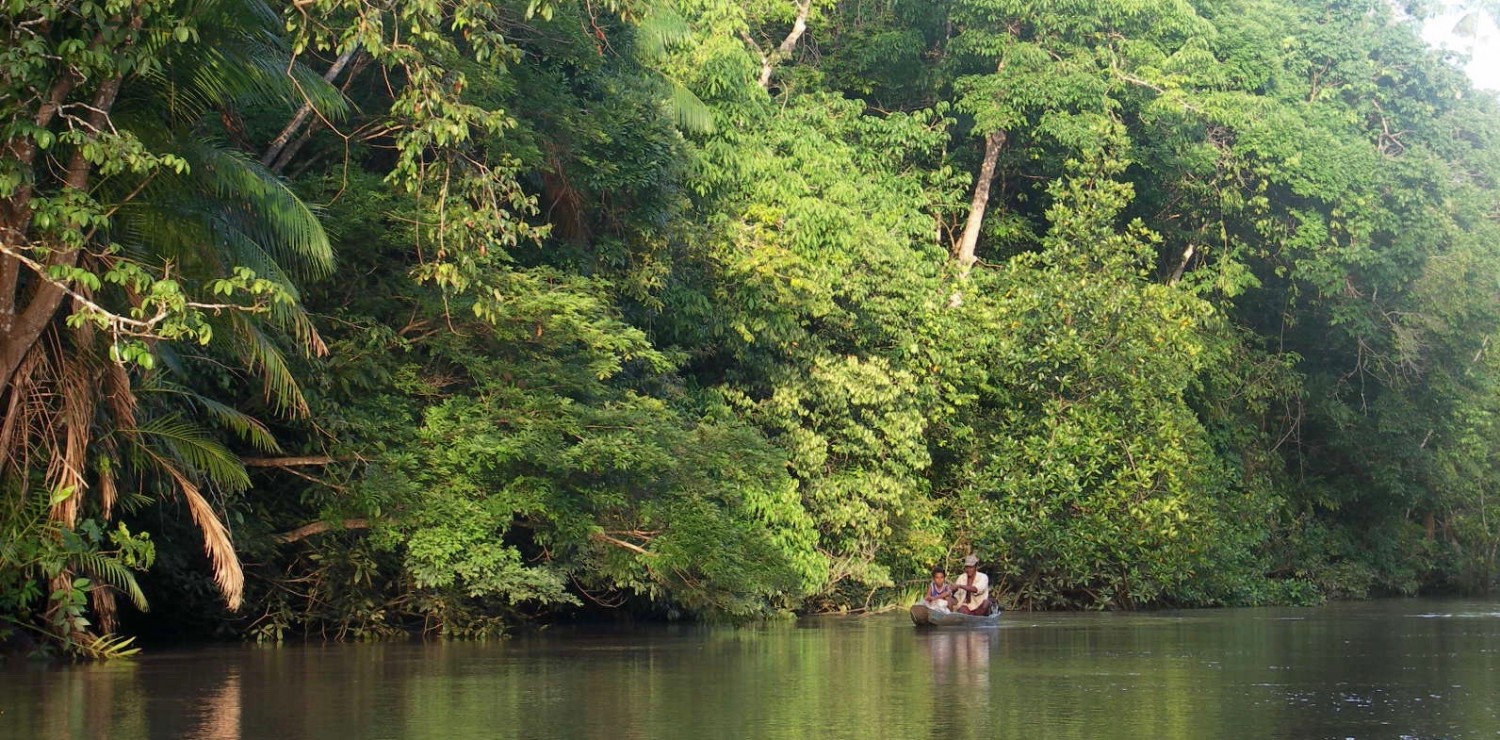
Belèm, the off-the-beaten-track destination in northern Brazil
Belém, Santarém, Marajó … these exotic sounding names are synonymous with adventure and mystery amidst exuberant jungle. Who has not dreamed as a child of being an adventurer, or an explorer, landing at the mouth of the Amazon in search of some lost treasure or forgotten tribes? This dream can become a reality with a trip to the state of Pará. As one of our more authentic Brazil vacation packages , the state of Pará is not one of the traditional destinations in terms of tourists coming to see the jungle in Brazil. Tourists are normally directed more inland, to the state of Amazonas. To take in Pará, the other region bathed by the biggest river in the world, means to go off the beaten track. Moreover, although this region is still relatively unknown to travelers, it has many centers of interest giving it status as a top choice destination for a trip to Brazil.

Come face to face with Belém, the gateway to the Amazon!
Our tours in belém : discover the northern region of brazil.
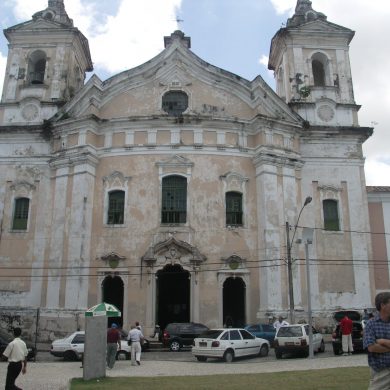
Belém
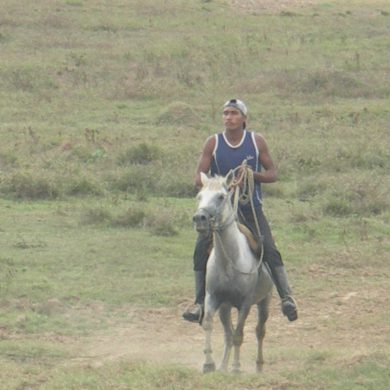
Island of Marajó
Ask for a quote
A vacation in Northern Brazil – a little known region full of surprises!
The relatively low level of tourism in Pará can be partly explained by the fact that it is a region that has long been valued primarily for its economic resources rather than for its extraordinary landscapes.
It was also a difficult area to access as soon as one moved away from the regional capital, Belém, which had mysteriously specific climatic conditions such as the famous daily rainfall at 17:00.
However, modern communication, Internet and regular flights at reasonable costs have considerably accelerated the development of the region and facilitated its openness to travelers.
Infrastructures adapted to international tourism appeared at the end of the last century allowing visitors to travel freely and easily in this part of Brazil. We now have the pleasure of offering you stays where comfort, pleasure and wonder are the fundamental elements in the most interesting and undiscovered parts of the country.
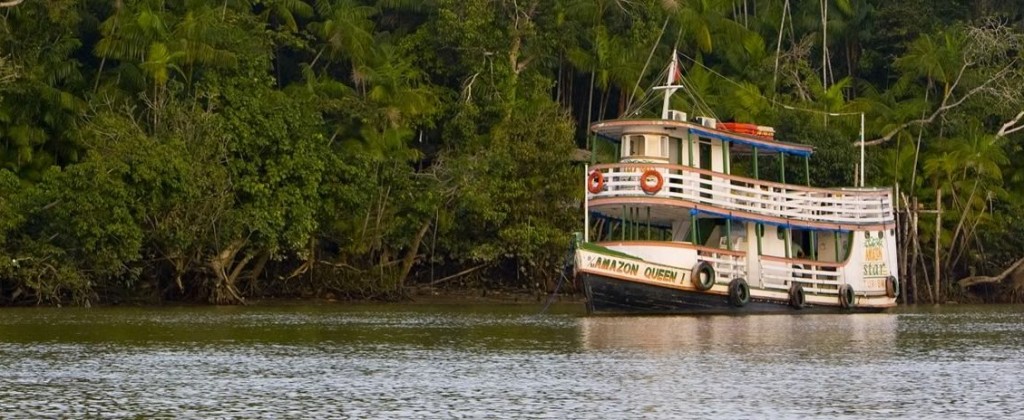
Pará, the perfect destination for exotic tourism
Amongst our offers are three very different and exotic stages that will allow an authentic immersion in the universe that is North Brazil.
Travelers with a fondness for history and art in general will enjoy a region occupied by indigenous peoples for millennia, then by European settlers from the sixteenth century onwards. Among its many parks, monuments, museums and public gardens, there is plenty to see and do!
If you appreciate being able to discover the way of life and customs of the locals, the port of Belém and its constantly active market, where everything is, sells and is bought, is an essential stop.
A whirlwind of flavors, colors and smells, it will flatter the senses and arouse the curiosity of the visitor eager for novelty. Do not miss out on tasting the many fish from the largest river in the world such as Tambaqui, or the largest freshwater fish in South America, the Pirarucu , up to 300 kg and 3 m long. A real treat !
Starting from the place called ” The Paris of the Americas ” (at the beginning of the twentieth century), you can also enjoy beautiful boat trips in the area. This is an opportunity to discover all the riches of the mouth of the Amazon and its islands. It is also possible to stay on the huge island of Marajó: planted in the middle of the estuary of the largest river in the world, it is the size of Switzerland!
If you like adventure, then we will meet you on the waves in the middle of the Amazon forest, in the city of Santarem. You can take a cruise between the islets that dot the confluence between the Amazon and Rio Tapajos, offering dozens of sandy beaches that are as much an invitation to bathe as any other thing.
The North of Brazil is therefore a region where all traveler profiles will be satisfied. With family, friends or lovers, Pará awaits you to share its wonderful wealth. A small warning however: it is advisable to visit this region between June and December, because the rains can be heavy during the other half of the year!
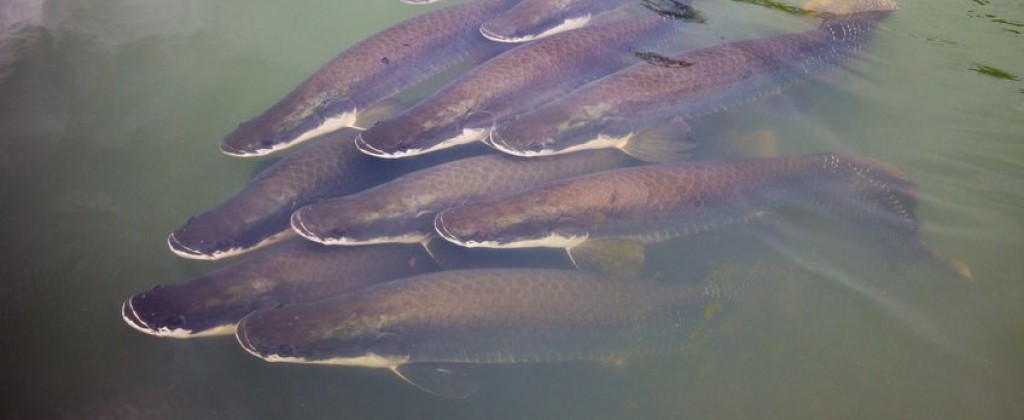
Belém, go through the gates of the Amazon!
Belém is a regional capital with a long history that began in 1616 with its first colonial founding. Prosperous at a time thanks to the export of rubber in the nineteenth century, its economic situation changed drastically with the appearance of Asian production of the famous latex in the early twentieth century.
It is a city where pioneers, merchants, adventurers and other explorers from all ages and nationalities have landed to storm the world’s largest equatorial forest. For a long time it was the obligatory passage for those wishing to sink into the depths of the Amazon and enjoy a vacation in Northern Brazil.
This was also valid for those who came back, loaded with a thousand unknown and strange treasures gleaned throughout their journeys within what many have called the “green hell” (in reference to the film by James Whale).
From there, all these products went to supply the markets of Europe, North America and Asia. It is therefore primarily a trading town whose growth is closely linked to the value of products extracted from the forest and its subsoil, destined for foreign markets.
Also called ” the city of mango trees ” (because of the many specimens of the fruit that exist there), visitors have the pleasure of discovering a remarkable architectural heritage. A striking example is the “Ver-o-peso,” literally “see the weight.” Located at the port, it is the largest indoor market in South America.
Next door, you will find the Mercado de Ferro , a large market hall made from wrought iron and canopies imported from Europe. Not to be missed either, is the magnificent Peace Theater, symbolic of the prosperous era of the rubber industry.
One of the great events of the city is the Ciro de Nazaré . The most important religious festival in Brazil and one of the most important in the Christian world, it brings together nearly 3,000,000 faithful each year for a morning! It takes place in October in Belém; during a great procession, Catholics have the whole city covered with an effigy of our Lady of Nazaré.
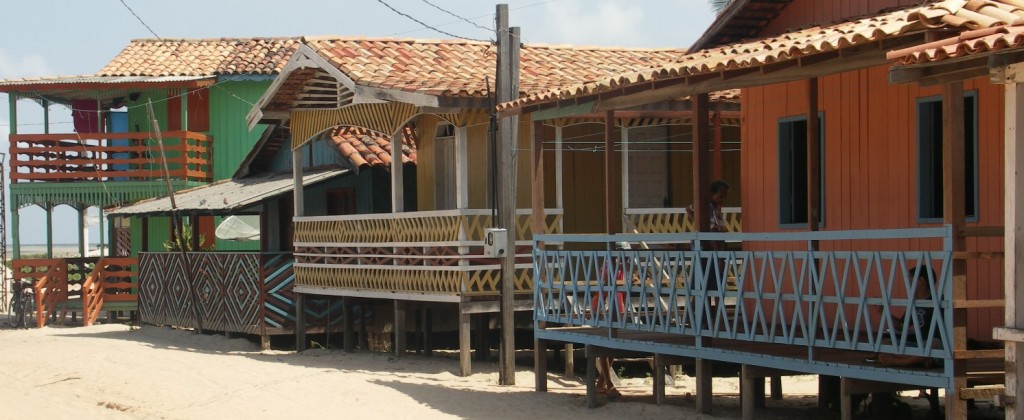
Marajó, the largest freshwater island in the world
Pará is also home to the largest estuary island in the world, the island of Marajó , located in front of Belém. The eastern half of the island is occupied by man, the other has remained in the wild because it is practically submerged a good part of the year.
People mostly go on this vacation in northern Brazil to discover its exceptionally rich wildlife but also to discover the human agricultural activities such as the breeding of buffaloes and horses. A good opportunity for an excursion, go by boat, or for a more unique experience, on the back of a buffalo!
Fans of history and archaeology can go in search of “ Tesos” , semi-artificial hills enlarged by indigenous “ Marajoarenses” now disappeared to serve as a deposit for beautiful urns and funerary vessels. For over a century they have been the subject of important archaeological research to try to better understand the settlement of the Amazon basin before colonization. An exciting story to delve into!
A stay on a farm on the huge island of Marajó , a real animal sanctuary, will leave you with unforgettable memories.
We offer simple but comfortable and pleasant accommodation to discover the daily life of the inhabitants of this island, share a little of their way of life and walk the surrounding land in search of wild animals.
Top Belém and the North of Brazil FAQs
When is the best time to travel to Belém and the North of Brazil?
What do you need to travel to belém and the north of brazil, what are the top places to see in belém and the north of brazil.
Some of the main attractions in the city include the Carmo church, the Sé Cathedral, the Teatro da Paz and the old town. “Círio de nossa Senhora de Nazaré” is a huge annual Catholic event in Belém with millions of visitors every year. “Ver – o -Peso” is one of the biggest markets in Brazil and it is crammed full of mysterious forest produce, definitely worth a visit!
From Belém, you can also visit the island of Marajó – this is the largest delta island in Pará. The island of Marajó is the size of Switzerland and has a very interesting history. It is home to cowboys who farm buffalo, which also are one of the main modes of transport on the island! Also on the island, you can get your very own piece of authentic Marajó pottery.
Browse our other destinations
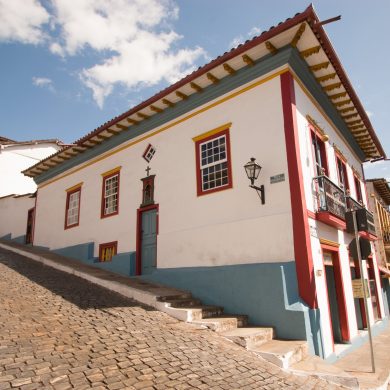
Minas Gerais
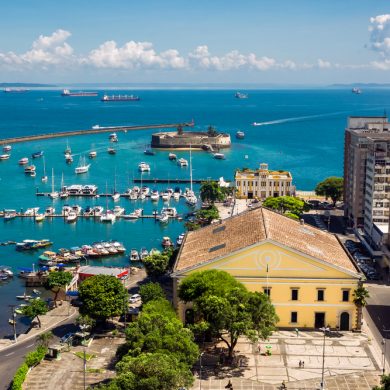
Brasília
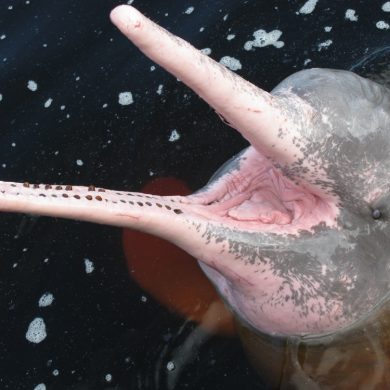
Rio de Janeiro region
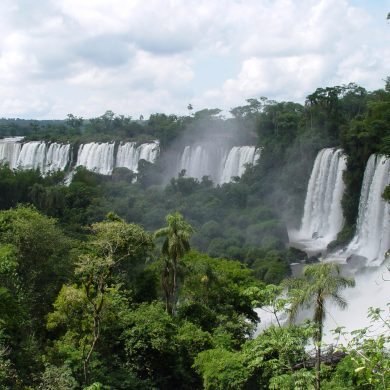
Iguaçu
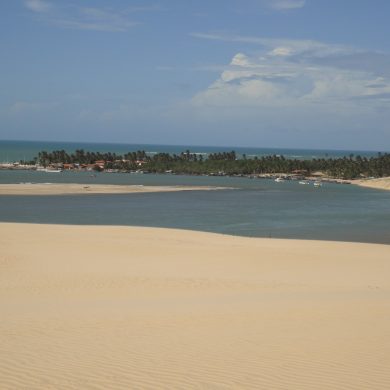
São Paulo

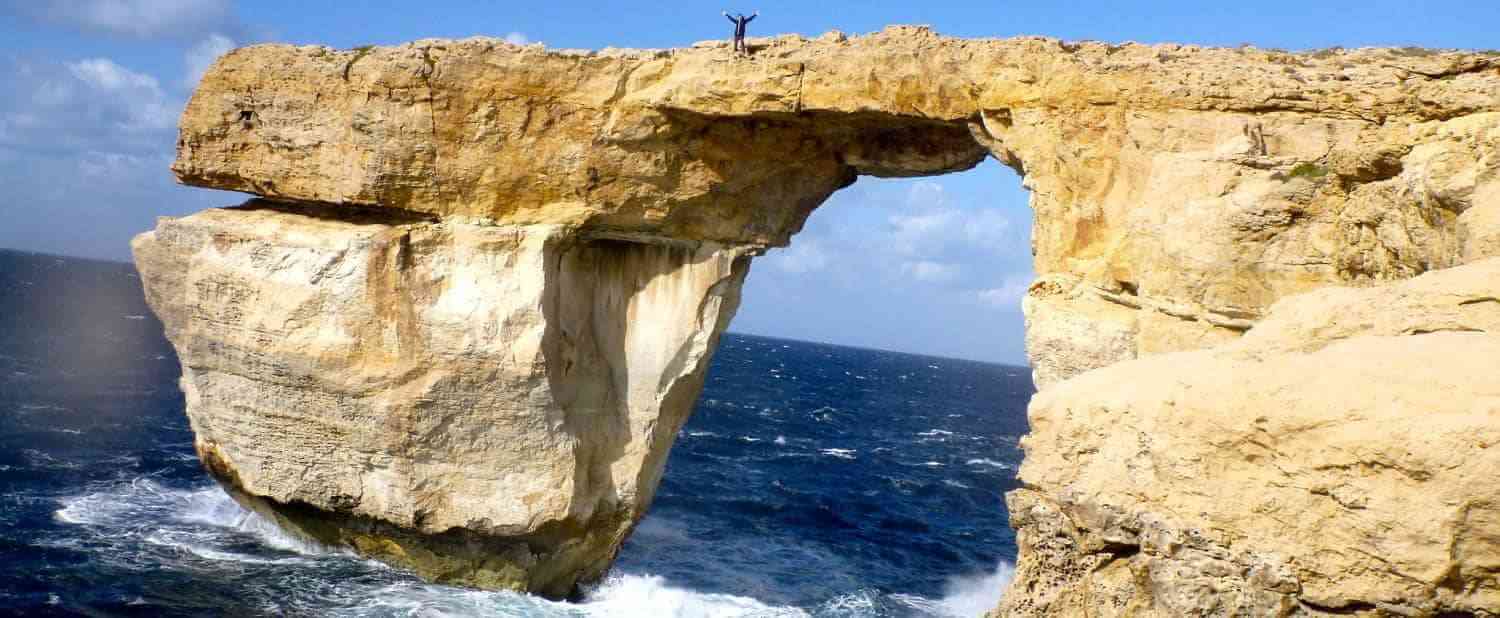
Out of Your Comfort Zone
The art of backpacking & adventures to get out of your comfort zone – tips and advice, 20 best & most beautiful beaches in the brazilian northeast.
Last Updated on May 24, 2024 by Talita
Brazil has a claim to a coastline that stretches 7,000 kilometers in length and full of beautiful beaches from north to south. However, the majority of these beaches are actually located in the northeast of the country, a region in which each state has beaches and coastline, giving you an abundance of beaches to choose from!
This means that the Brazilian northeast has beaches for all tastes and ages, from those with calm, paradisical settings to those wild ones with great waves for surfing .
So if you’re planning your next getaway or have ever wondered what beach to visit in Brazil northeast, check out this list to find one to add to your itinerary!
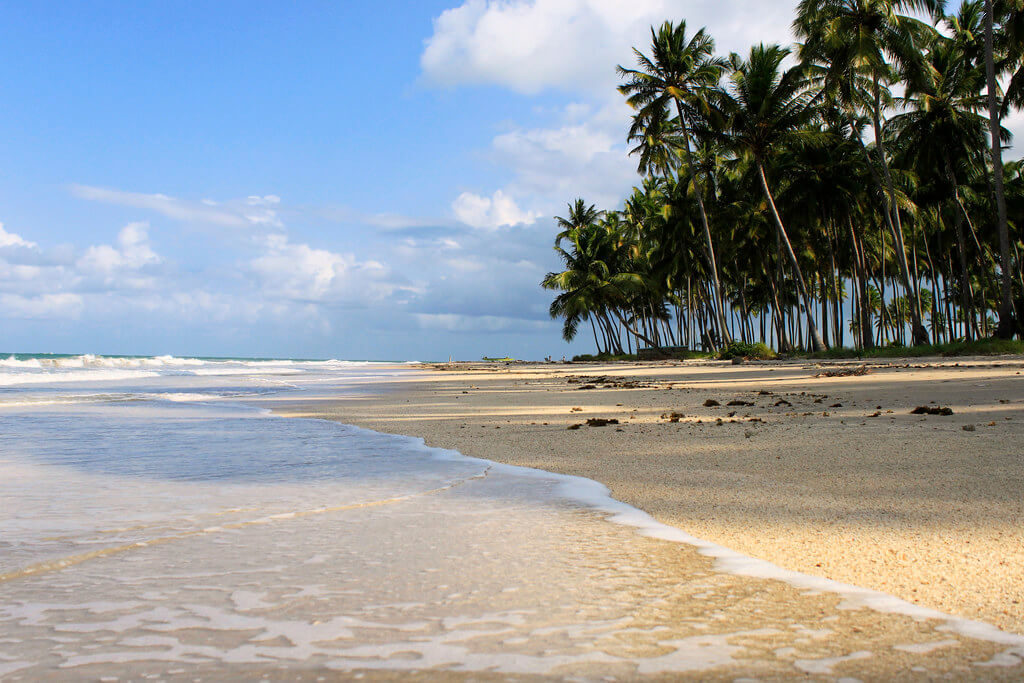
Table of Contents
- 1.1 1. Praia dos Carneiros (“Ram Beach”) – Tamandaré, Pernambuco
- 1.2 2. Cabo Branco (“White Cape”) – João Pessoa, Paraíba
- 1.3 3. Jericoacoara – Jijoca de Jericoacoara, Ceará
- 1.4 4. Pontal de Maracaípe – Ipojuca, Pernambuco
- 1.5 5. Praia de Canoa Quebrada (“Broken Canoe Beach”) – Aracati, Ceará
- 1.6 6. Praia do Gunga (“Swing Beach”) – Roteiro, Alagoas
- 1.7 7. Praia de Macapá – Luís Correia, Piauí
- 1.8 8. Praia do Forte (“Fort Beach”) – Mata de São João, Bahia
- 1.9 9. Praia do Saco – Estância, Sergipe
- 1.10 10. Praia de Muro Alto (“High Wall Beach”) – Ipojuca, Pernambuco
- 1.11 11. Praia do Panaquatira – São José de Ribamar, Maranhão
- 1.12 12. Praia de Genipabu – Extremuz, Rio Grande do Norte
- 1.13 13. Porto de Galinhas (“Hen Port”) – Ipojuca, Pernambuco
- 1.14 14. Praia de Igarapé Grande (“Big Stream Beach”) – Turiaçu, Maranhão
- 1.15 15. Praia de Maragogi – Maragogi, Alagoas
- 1.16 16. Tambaba – Conde, Paraíba
- 1.17 17. Praia das Dunas (“Dune Beach”) – Estância, Sergipe
- 1.18 18. Praia do Francês (“The Frenchman’s Beach”) – Marechal Deodoro, Alagoas
- 1.19 19. Praia do Coqueiro (“Coconut Palm Beach”) – Luís Correia, Piauí
- 1.20 20. Baía dos Porcos (“Bay of Pigs”) – Fernando de Noronha, Pernambuco
- 2 Tip of tours, attractions and activities to enjoy in northeastern Brazil
- 3 In conclusion…
- 4 Planning your next trip?
What are the 20 best & most beautiful beaches in Northeast Brazil?
- Praia dos Carneiros – Tamandaré, Pernambuco
- Cabo Branco – João Pessoa, Paraíba
- Jericoacoara – Jijoca de Jericoacoara Ceará
- Pontal de Maracaípe – Ipojuca, Pernambuco
- Praia de Canoa Quebrada – Aracati, Ceará
- Praia do Gunga – Roteiro, Alagoas
- Praia de Macapá – Luís Correia, Piauí
- Praia do Forte – Mata de São João, Bahia
- Praia do Saco – Estância, Sergipe
- Praia de Muro Alto – Ipojuca, Pernambuco
- Praia do Panaquatira, São José de Ribamar, Maranhão
- Praia de Genipabu – Extremuz, Rio Grande do Norte
- Porto de Galinhas – Ipojuca, Pernambuco
- Praia de Igarapé Grande – Turiaçu, Maranhão
- Praia de Maragogi – Maragogi Alagoas
- Tambaba – Conde, Paraíba
- Praia das Dunas – Estância, Sergipe
- Praia do Francês – Marechal Deodoro, Alagoas
- Praia do Coqueiro – Luís Correia, Piauí
- Baía dos Porcos – Fernando de Noronha, Pernambuco
And before we get into more detail about each of these beaches, here’s a map of where all the beaches are ( click to zoom in ).

1. Praia dos Carneiros (“Ram Beach”) – Tamandaré, Pernambuco
Praia dos Carneiros, aside from being one of the most lovely beaches of the region, may also be one of the most popular. It’s located in the municipality of Tamandaré, approximately 100 kilometers from the Pernambuco capital of Recife.
Without a doubt, the major landmark of Praia dos Carneiros is the Chapel of São Benedito, built along the seashore at the end of the 18th century.
But of course, this isn’t the only attraction. This spot is also ideal for anyone who likes small beaches complete with aquamarine and emerald water, white sand, and coconut palms.
2. Cabo Branco (“White Cape”) – João Pessoa, Paraíba
Cabo Branco is a great option for anyone in search of a beach near the large northeastern capitals. Located just a few kilometers from João Pessoa, the region of Cabo Branco is full of great hotels and a coastline ready to welcome visitors and locals alike. Here, you’ll also find plenty of good bars and restaurants just meters from the sea. Overall, it’s a pleasant area and the sea, though cloudy, is very calm.
In sum, the location, infrastructure, and magnificent landscape make Cabo Branco one of the best beaches of the state of Paraíba.
3. Jericoacoara – Jijoca de Jericoacoara, Ceará
The beach of Jericoacoara (pronounced “jeri-qwa-qwa-ra”) has increased in popularity a lot over the past years, attracting not only Brazilians, but also visitors from around the world.
This shouldn’t come as much of a surprise, given that it was chosen as one of the most beautiful beaches in the world! With the increase in tourism, one of the solutions was the construction of a regional airport. However, if you’re looking to save money, you can still fly into Fortaleza and then take the bus here .
White sand dunes and turquoise sea make up the Jeri landscape. During your trip, you can make the most of your time and relax in a hammock hanging over the sea, or perhaps take a dune buggy out for a swing.
Another major attraction of the region is windsurfing and kitesurfing , perfect for anyone in search of some adventure.
4. Pontal de Maracaípe – Ipojuca, Pernambuco
Pontal de Maracaípe may be very close to the famous Porto de Galinhas, yet it is still an area that is well-preserved, calm, and only has minimal facilities. Truthfully, you can expect just the basics if you spend the day there.
Yet, you can also expect waves perfect for surfing alongside stretches of sea calm enough for children. And for any marine animal lovers, you can make a stop at the headquarters of Projecto Hippocampus, a conservation center for seahorses, which is located nearby.
You can easily combine a visit to Porto de Galinhas with a trip to Pontal de Maracaípe, or you can spend all your time in this incredible place.
5. Praia de Canoa Quebrada (“Broken Canoe Beach”) – Aracati, Ceará
The 5th on our list of the 20 best beaches in Northeast Brazil is Praia de Canoa Quebrada. Despite its funny name, it is without a doubt one of the most beautiful beaches in the state of Ceará.
Likely, you’ve already seen a photo of Canoe Quebrada with its red-toned cliffs, and this scenery alone makes it worth the trip. But when combined with the bright blue sea, it’s all the more beautiful.
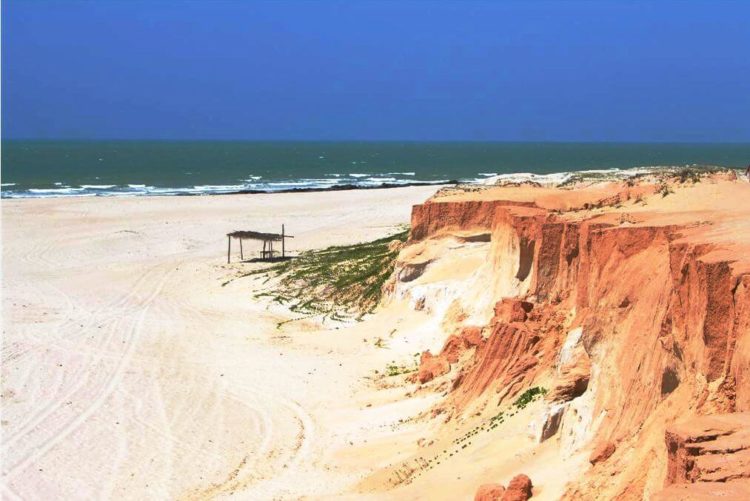
If you want to relax, practice water sports, or find some good nightlife, Canoa Quebrada is the place for you!
6. Praia do Gunga (“Swing Beach”) – Roteiro, Alagoas
Praia do Gunga is perfect for anyone looking for something a little different. Located some 40 kilometers from Maceió, this beach stands out as it is the spot where the Retiro Lagoon meets with the sea. Like Canoa Quebrada, its also surrounded by cliffs, making a buggy ride a fun option!
This destination has simple facilities, but there should be enough to cover all your basic needs.
7. Praia de Macapá – Luís Correia, Piauí
Although it may not have much to offer in the way of infrastructure, Macapá Beach is still worth a visit. Thanks to its strong winds, this is one of the best places to learn to surf or practice any other water sport.
Seahorses are common around here, which is why the region is home to several conservation-focused NGOs. In other words, it’s a great place to see nature up-close!
8. Praia do Forte (“Fort Beach”) – Mata de São João, Bahia
Bahia’s Praia do Forte is one of the most “complete” beach destinations you can visit in the northeast. Since it’s a well-visited spot, the infrastructure and facilities available are impeccable, and you’ll find many options for accommodation and restaurants. You’ll also find a museum for Project Tamar, a sea turtle conversation center, right on the beach.
And we haven’t even gotten into the natural beauties of the area! A lovely mixture of blue sea surrounded by the Atlantic Forest where you can also enjoy a trail walk through the Sapiranga Reserve.
In other words, incredible landscapes, activities, and facilities are waiting for you on Praia do Forte.
9. Praia do Saco – Estância, Sergipe
Another option for anyone who wants to escape the crowds is Praia do Saco, one of the most beautiful beaches in the state of Sergipe! Located in Estância municipality, Praia do Saco borders the state of Bahia. Although it may not be a very well-known spot, it has plenty of attractions , like buggy rides and Saco Point.
And with its calm, clear sea, white sand, and lines of coconut trees, it really is the ideal destination for anyone who wants to embrace the natural marvels of Sergipe.
10. Praia de Muro Alto (“High Wall Beach”) – Ipojuca, Pernambuco
Muro Alto is, without a doubt, one of the best beaches in the entire northeast. Located near Porto de Galinhas in Ipojuca, the name of this beach is fitting – here, you’ll find a sea wall, or a reef, approximately 3 kilometers long. This forms a huge natural pool, making the views of this beach unlike anything you’ve ever seen!
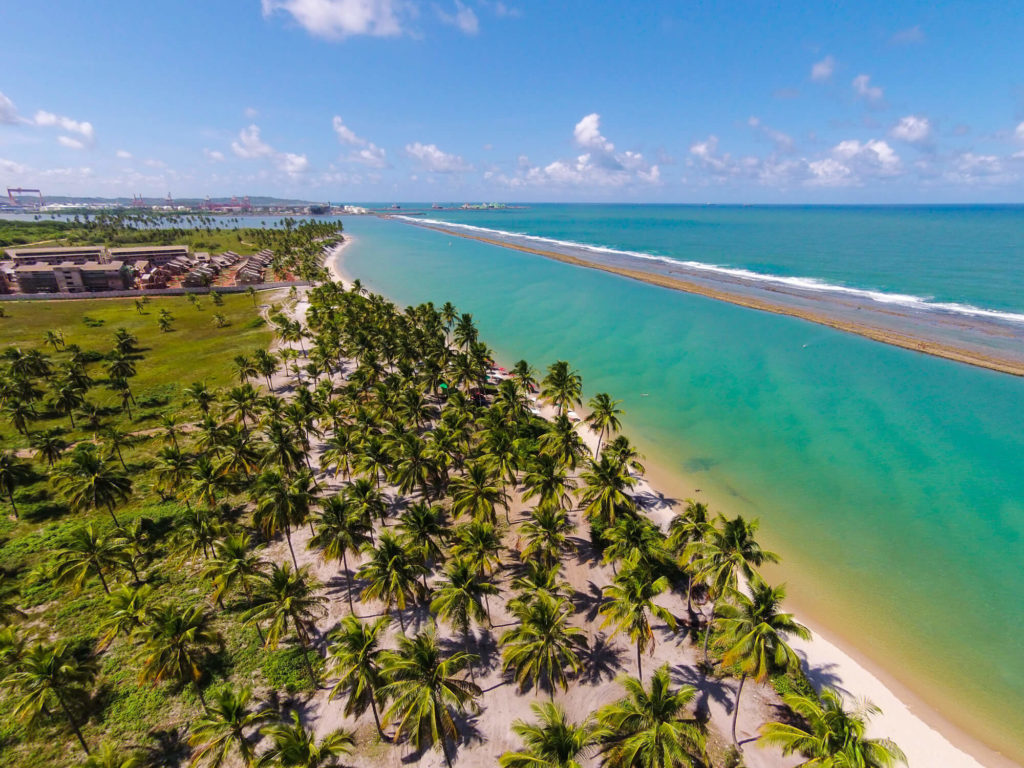
The water of the sea is warm and calm, perfect for children as well as adults. You can also head out on stable kayaks or jangadas (traditional Brazilian rafts) for more fun!
11. Praia do Panaquatira – São José de Ribamar, Maranhão
Praia do Panaquatire was great for anyone looking for calm waters. Even during high tide, the sea is shallow and still.
But the best of all is the location, which is close to the Maranhão capital of São Luis, making it easy to get to and not far from plenty of other beautiful beaches you can also visit.
12. Praia de Genipabu – Extremuz, Rio Grande do Norte
Natal, the capital of Rio Grande do Norte, is well-known for its dunes…which means we can’t forget to include the beach right in the midst of this little paradise!
Praia de Genipabu is an easy 25-minute trip from this capital city. So even if you’re not staying on the beach, it’s still worth visiting if you are in Natal.
Here, you’ll find a calm, bright blue sea, sand dunes, and good facilities like accommodation, outdoor vendors, and restaurants. Beyond this, you can make the most of the area’s coolest attractions like esquibunda (sand sledding) and the aerobunda (a zip line that takes you over the water) .
13. Porto de Galinhas (“Hen Port”) – Ipojuca, Pernambuco
Porto de Galinhas, as we’ve mentioned above, is well-loved by Brazilians and international tourists alike. Located in the Ipojuca municipality, it’s close to a number of other beaches you’ll find on this list.
Porto de Galinhas has many attractions, including turquoise sea with colorful fish, great diving, excellent facilities, and a vibrant nightlife. Beyond the beach, you can also enjoy the city center, which is has a wide variety of restaurants, shops, and local artisans.
14. Praia de Igarapé Grande (“Big Stream Beach”) – Turiaçu, Maranhão
If you’re looking for a stunning and natural paradise, then Praia de Igarapé Grande is for you. In fact, according to the locals of Maranhão, this is the most beautiful beach in the state!
Located on the Atol dos Atins archipelago, this beach receives few tourists and has few facilities. During low tide, you’ll find a calm sea. However, during high tide, the waves regularly reach 2 meters or taller.
In other words, be sure to check out a tide chart before you plan your visit.
15. Praia de Maragogi – Maragogi, Alagoas
Praia de Maragogi isn’t just one of the best beaches in Northeast Brazil, but in the entire world! Known primarily for its clear water and natural pools, this beach also has excellent facilities and many activities for you to take part in .
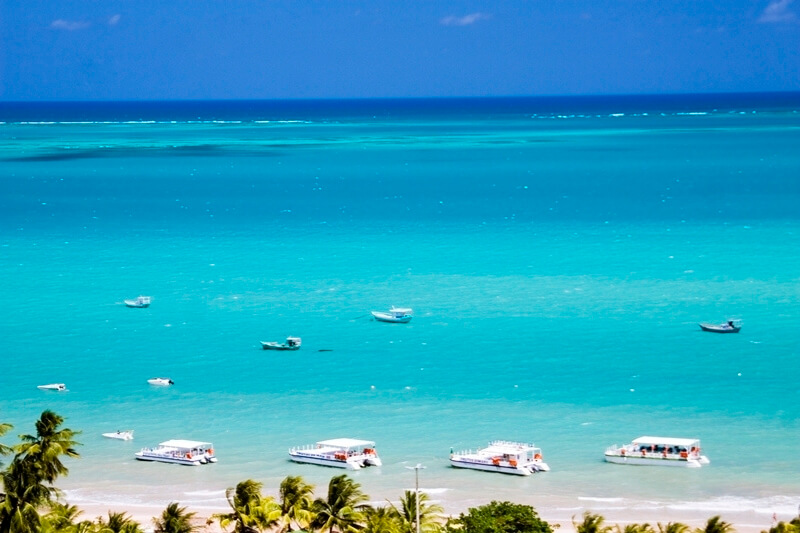
Beyond a classic visit to the pools, you can also go diving or head out on a party boat trip. A buggy ride is also a great option if you want to check out the neighboring beaches.
16. Tambaba – Conde, Paraíba
Given that it’s considered to be the first nude beach in Brazil, Tambaba had to make this list.
On Tambaba, you’ll find two distinct areas for tourists. In the first area, where you’ll find a small natural pool, only dressed visitors are allowed. But in the second area, only accessible via a security gate , you’ll find the nude visitors. And truthfully, this is the section with the most beautiful parts of Tambaba beach, complete with cliffs just 300 meters from the water.
17. Praia das Dunas (“Dune Beach”) – Estância, Sergipe
Praia das Dunas isn’t a big tourist spot. It’s calm and the majority of visitors are locals. Which means that it’s a great option for anyone who likes quiet and typical Northeast coastline scenery.
Beyond sand dunes, you’ll also find a lightly rippling sea perfect for practicing some water sports .
18. Praia do Francês (“The Frenchman’s Beach”) – Marechal Deodoro, Alagoas
Located some 40 minutes from the state capital of Maceió, Praia do Francês is another lovely highlight of the Alagoan coast.
As with Praia do Muro Alto, this beach is also surrounded by reefs that form natural pools. And it’s right at this point, called “canto esquerdo” (“left corner”), where you’ll find most of the tourists, as well as the boats and outdoor vendors. But in the “canto direito” (“right corner”), outside of the natural pools, you’ll find rougher waters with big waves perfect for surfing.
19. Praia do Coqueiro (“Coconut Palm Beach”) – Luís Correia, Piauí
Praia do Coqueiro is located just over 10 kilometers for the Piauí state capital of Luís Correia. This beach has great kitesurfing year-round.
However, during holidays (especially those at the end of the year), the beach can get packed. Luckily, to accommodate the number of tourists, you’ll find plenty of lodging and restaurant options right next to the sea.
20. Baía dos Porcos (“Bay of Pigs”) – Fernando de Noronha, Pernambuco
And to finish off our list here with the best beaches in Northeast Brazil, we have the famous Fernando de Noronha island (located some 350 kilometers east of the Brazilian coast). Baía dos Porcos has already been selected as the most beautiful beach in all of Brazil many times. And that title is well-deserved!
This small, 100-meter strip of sand is surrounded by cliffs, emerald-green rainforest, and turquoise water. However, do keep your eye on the tide charts to choose the right day for your visit. During low tide, natural pools, fish, and even turtles will appear. But when it’s high tide, this small beach is completely covered with water and inaccessible.
And if you are visiting the rest of Brazil, why not check out this great article with 37 Tourist Attractions in Brazil You Need to Visit .
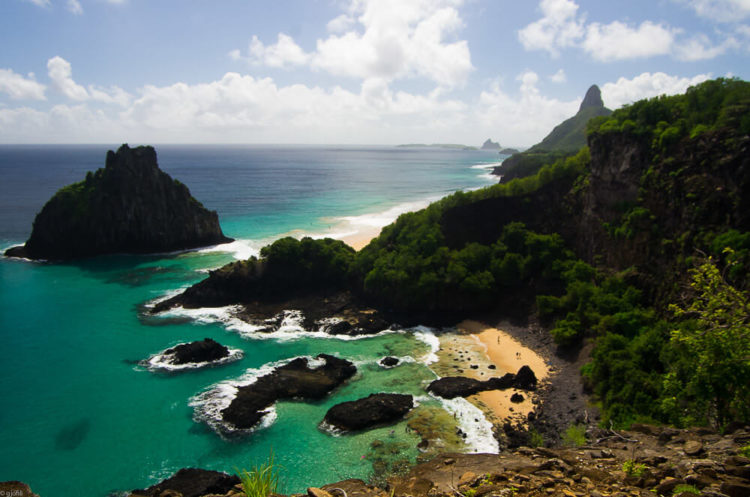
Tip of tours, attractions and activities to enjoy in northeastern Brazil
Here is a tip that can help a lot when planning your trip. The Civitatis and Viator sites are great tools for finding attractions and activities in the most diverse destinations! On these sites you can find classic attractions of the city that you will visit, private tours and differentiated tours. There are options for all styles of travelers, check below some of the attractions offered.
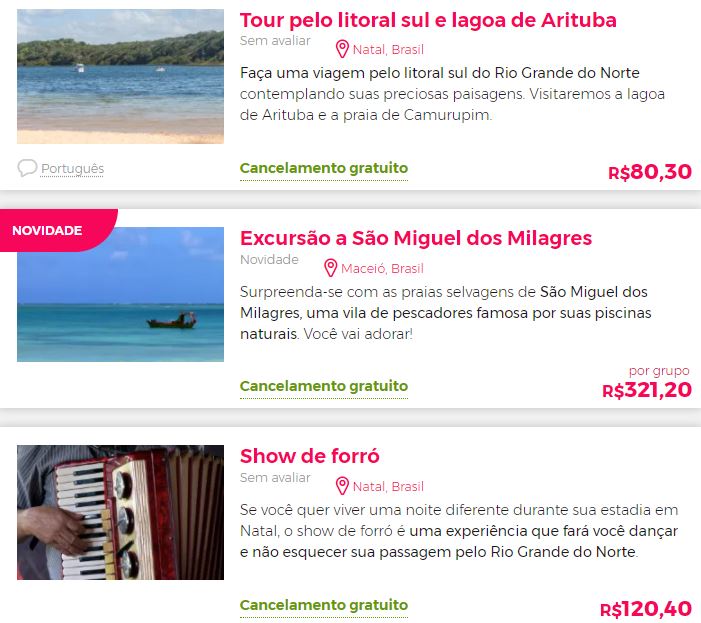
In conclusion…
Brazilians and tourists from around the world come to enjoy and spend time on our breathtaking coast. But beyond the beaches, the Northeast as a whole should be on any traveler’s itinerary! Beyond natural beauties, the entire area is rich in culture…from traditional festivals, typical music, and a full-flavored cuisine that gives each state of the Northeast its own individual flair.
So, what do you think of this list of the 20 best beaches of the Brazilian Northeast? Have you ever been to any? Or which one would you choose for your next trip? Let me know your thoughts (and any questions) you might have in the comments area below!
Planning your next trip?

Already reserved your hotel or hostel? If not, our article with The 6 Best and Cheapest Websites to Find & Reserve Accommodation can help you out. You’ll also find some promotions and discount codes .

Still haven’t booked your plane ticket and want to save big? Take a look at our page with 16 Tips to Save on Flights where you’ll also find the 4 best websites to buy your plane tickets.

And finally, will you need to rent a car during your trip? Then surely our page with The 5 Best and Cheapest Websites to Compare and Rent Cars Around the World will help you choose the best rental car and find a good deal.
4 Responses
[…] beautiful white sand and clear blue water, it’s a must see if you ever find yourself in the visiting south east Queensland. In town, […]
[…] best part about Costa Rica having so many great beaches is that they all have something totally unique to offer. This means no matter what it is that you […]
[…] allure of a beach holiday can be hard to resist. Pristine beaches and crystal-clear waters beckon us. The feeling of the sun […]
[…] breathtaking canyons and the region’s largest and most beautiful lakes to charming sand and cobble beaches, quaint historic towns, as well as some of the most luxurious Mediterranean destinations to live […]
Leave a Reply Cancel reply
This site uses Akismet to reduce spam. Learn how your comment data is processed .
Next stop….The DMZ, South Korea
The Northeast Travel Guide
Book your individual trip , stress-free with local travel experts
Select Month
- roughguides.com
- South America
- Travel guide
- Itineraries
- Local Experts
- Travel Advice
- Accommodation
Plan your tailor-made trip with a local expert
Book securely with money-back guarantee
Travel stress-free with local assistance and 24/7 support
Just wanted to say that it was incredible. Trip Provider was also incredibly good, and really made their best effort to solve any problems. We were very im...
The Northeast is one of Brazil’s poorest areas, but has perhaps the most stunning coastline in South America. Despite its thriving beach scene, the area, divided politically into eight separate states, has not been spoilt by tourism. There are major cities along the coast: some, such as Recife, Olinda, São Luís and Fortaleza, have deep colonial heritage; others, such as Maceió and Natal, have developed mostly in recent decades. All have their own city beaches plus more idyllic and deserted resorts hidden up and down the coast (though generally accessible by bus or taxi). The Ilha de Fernando de Noronha , hundreds of kilometres off the coast from Natal, is one of the finest oceanic wildlife reserves in the world, an expensive destination but idyllic for ecotourism.
The semi-arid region inland, with sparse leafy vegetation but abundant cacti, is known as the sertão. It suffers periods of intense drought yet in the wet season is transformed for a few glorious months to a verdant green. Few people traverse the interior, except perhaps en route to Belém at the mouth of the Amazon; but if you do visit the region, there are a number of quite isolated and windswept market towns – such as Campina Grande in Paraíba state – that are worth stopping off at. Piauí boasts more than one stunningly beautiful national park, while the coast of Maranhão is known for its reggae, blisteringly hot beaches and superb cuisine.
Top image: Porcos Bay © Rodrigo S Coelho/Shutterstock
Travel ideas for Brazil, created by local experts

Brazilian Beaches: Copacabana, Botafogo and more
Begin at Foz do Iguaçu, where you will stand in awe of the huge Iguaçu Falls. Next up, we'll head to the lively city of Rio de Janeiro, home of the legendary Copacabana, Botafogo and Flamengo beaches, and of course, Sugar Loaf Mountain and the iconic Christ the Redeemer statue.

Blissful Brazil
Welcome to a lavish journey that marries adventure with style, featuring stays in carefully chosen four-star hotels. This reinvigorating trip will have you sightseeing in São Paulo, gazing at the spectacular Foz do Iguaçu falls and relaxing on Rio's finest beaches before you know it.

Breathtaking Brazil: Rio, Beaches and Waterfalls
Explore the lively city of Rio de Janeiro, home to Ipanema and Copacabana beaches; experience the stunning Foz do Iguaçu National Park and see the world’s largest waterfalls system; immerse yourself in cultural Salvador, the magnificent former capital of Portugal’s New World colony.

Extraordinary Brazil - Paraty & Iguaçu
Combine adventure and nature in Paraty with the stunning Iguaçu waterfalls. Your trip starts in the colonial town Paraty, Costa Verde's main attraction. Jeep rides, beaches, and a lot of culture are part of the program. Afterwards, fly to Foz do Iguaçu and see the falls from both Argentina & Brazil.

Jaguars in North Pantanal
Spend a week in a lodge in North Pantanal with boat tours, walking trails, horseback riding and an unforgettable Jaguar expedition. Experienced wildlife guides are available in the lodge to explain more of the fascinating fauna and flora around you.

Pure Wildlife - North Pantanal & Amazonia
Discover the world's largest continental flood area - the Pantanal, one of the richest places in biodiversity. Continue your wildlife trip to the Amazon River. Your lodges throughout the trip are located right in nature, with easy access to lodge trails around.
Discover more places in Brazil
- Alagoas and Sergipe
- Fernando de Noronha
- Jericoacoara
- Rio Grande do Norte
The Rough Guides to Brazil and related travel guides
In-depth, easy-to-use travel guides filled with expert advice.

Find even more inspiration here

Planning your own trip? Prepare for your trip
Use Rough Guides' trusted partners for great rates
written by Rough Guides Editors
updated 26.04.2021
Ready to travel and discover Brazil?
Get support from our local experts for stress-free planning & worry-free travels.
- Where to stay
- Travel advice

18 Top-Rated Tourist Attractions in Brazil
Written by Michael Law , Lana Law , and Barbara Radcliffe Rogers Updated Mar 29, 2024 We may earn a commission from affiliate links ( )
The largest country in South America, Brazil occupies almost half the continent. Nearly all of it is in the Southern Hemisphere, and much of it is tropical, with vast stretches of rainforest filled with exotic plants and wildlife.
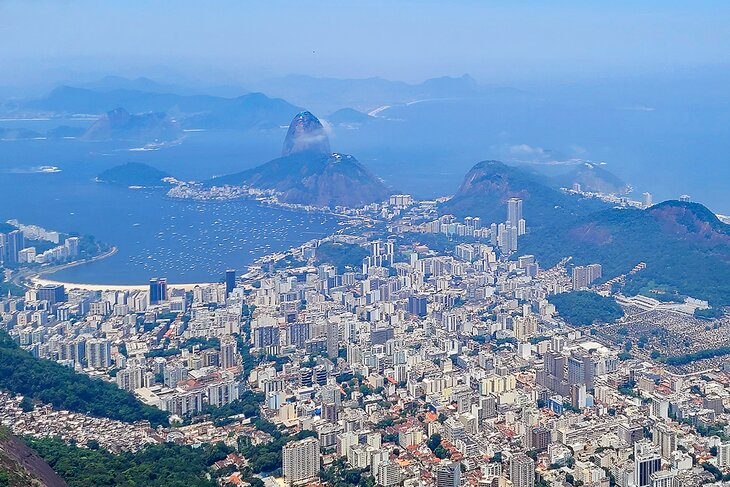
Brazil's 7,400-kilometer Atlantic coast is lined with golden-sand beaches , and its interior is filled with mineral resources. Gold from Brazil's mines still lines the churches of Portugal, the colonial power that ruled Brazil until 1822. This strong Portuguese influence is evident in Brazil's colonial architecture , in decorative arts such as the glazed tiles in its churches and convents, and in the language.
For tourists, Brazil is both a tropical paradise and an exciting cultural destination with attractions for all tastes, from idyllic beach holidays and jungle explorations to world-class art museums and the pulsing rhythms of Rio's Carnival.
To discover the best places to visit and things to do, use this handy list of the top tourist attractions in Brazil.
1. Cristo Redentor and Corcovado, Rio de Janeiro
2. sugar loaf, rio de janeiro, 3. iguaçu falls, 4. copacabana, rio de janeiro, 5. amazon rainforests, 6. carnaval, rio de janeiro, 7. brasília's modernist architecture, 8. jericoacoara, 10. salvador's pelourinho, 11. ouro preto, 12. museu do amanhã (museum of tomorrow), 13. ibirapuera park, são paulo, 14. museu oscar niemeyer, curitiba, 15. botanical garden of curitiba, 16. porto de galinhas & pernambuco beaches, 17. art museums of sao paulo, 18. belo horizonte.
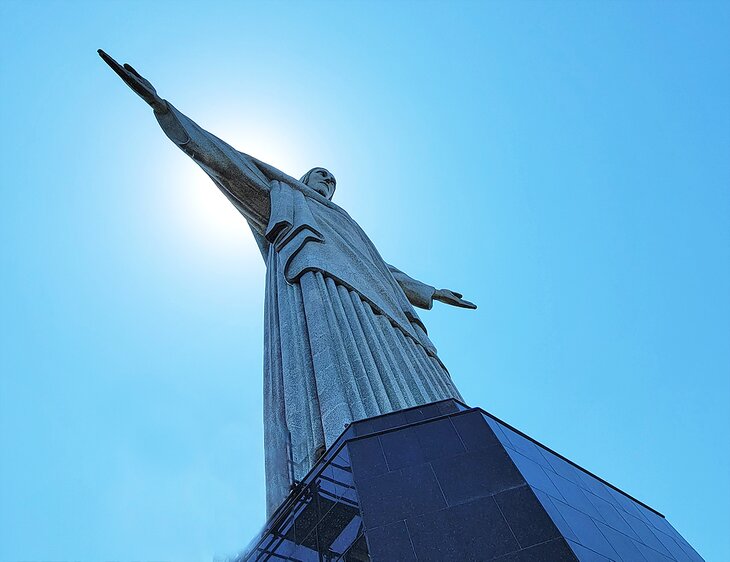
With arms outstretched 28 meters, as if to encompass all of humanity, the colossal Art Deco statue of Christ, called Cristo Redentor (Christ the Redeemer), gazes out over Rio de Janeiro, Sugar Loaf, and the bay from the summit of Corcovado. From here, you have possibly the best view in the city .
The 709-meter height on which it stands is part of the Tijuca National Park, and a railway climbs 3.5 kilometers to the top , where a broad plaza surrounds the statue. Completed in 1931, the 30-meter statue was the work of Polish-French sculptor Paul Landowski and Brazilian engineer Heitor da Silva Costa, and is constructed of reinforced concrete and soapstone.
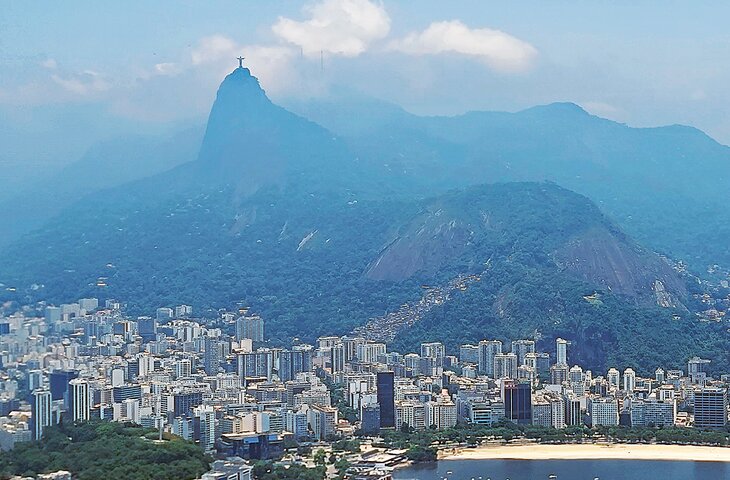
The steep ride up to the statue on the railway is part of the attraction as it passes through a lush forest, home to a wide variety of tropical birds, butterflies, and plants.
- Read More: Top Attractions & Things to Do in Rio de Janeiro
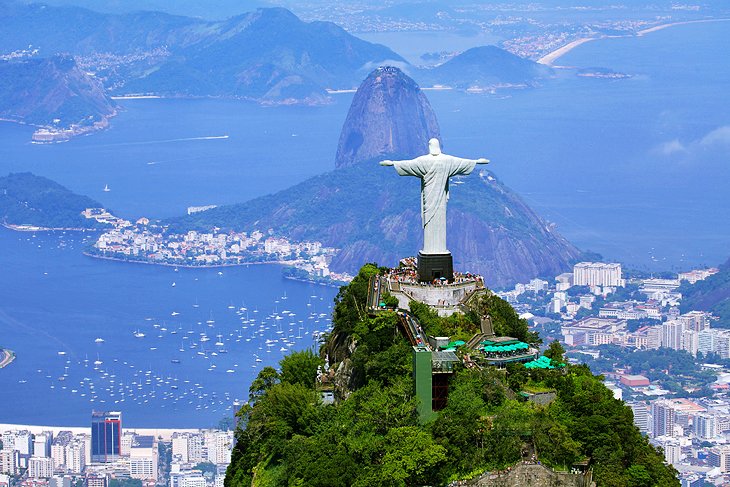
The easily recognized emblem of Rio de Janeiro, the rounded rock peak of Sugar Loaf juts out of a tree-covered promontory, rising 394 meters above the beaches and city. From the summit are outstanding views of Rio and the harbor , as well as a stunning view of Christ the Redeemer. This is an absolute must-do when visiting the city but plan to do this on a clear day and preferably in the morning.
Part of the attraction is the thrill of riding the cable car between Sugar Loaf and the Morro da Urca , a lower peak from which a second cableway connects to the city.
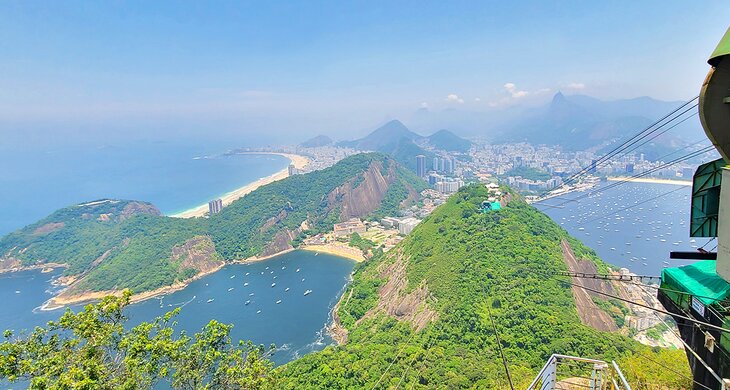
Rio's first settlement began below these peaks, near the long Praia da Urca beach, and you can tour one of the three early forts there, the star-shaped Fort São João .
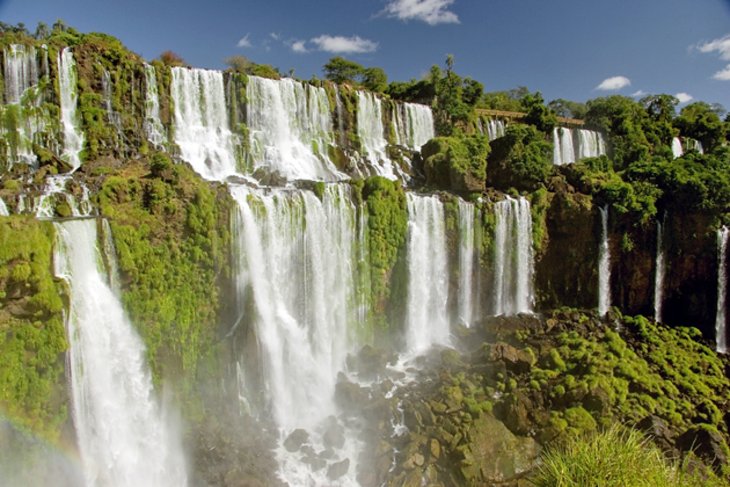
Iguaçu Falls is one of the most spectacular waterfalls in the world. At the point where Brazil, Paraguay, and Argentina meet, the Iguaçu river drops spectacularly in a semicircle of 247 waterfalls that thunder down into the gorge below. Just above the falls, the river is constricted to one-fourth of its usual width, making the force of the water even stronger.
Some of the falls are more than 100 meters high and they cover such a broad area that you'll never see all of them at once, but you do get the broadest panorama from the Brazilian side. Catwalks and a tower give you different perspectives, and one bridge reaches all the way to one of the largest falls, known as the Garganta do Diabo (Devil's Throat).
You can cross to the Argentinian side for closer views from catwalks that extend farther into the center of the falls. The two sides offer different perspectives and views, so most tourists plan to see both.
The falls are protected by the UNESCO-acclaimed Iguaçu National Park , where subtropical rainforests are home to more than 1,000 species of birds and mammals, including deer, otters, ocelots, and capybaras.
In early November 2023, water flows that were ten times normal levels caused significant damage to many of the walkways in and around the falls. The most famous, the Devil's Throat, has reopened but the Garganta del Diablo will be closed for quite some time with no reopening date announced as of writing.
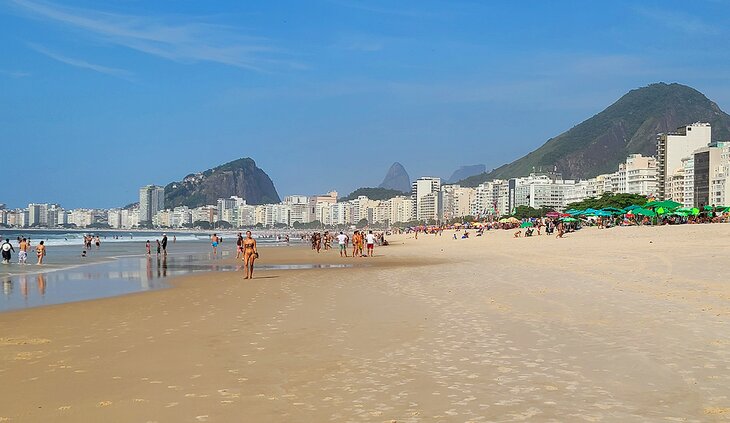
It's hard to think of Rio without conjuring up an image of Copacabana. This is Rio's playground, a popular escape from the heat filled with sun-worshipers, swimmers, and kids building sand castles. A seemingly endless assortment of beach shacks offer chair and umbrella rentals, snacks, drinks, and even free showers.
Downtown Rio's most famous section follows Avenida Nossa Senhora de Copacabana and is bordered all along one side by four kilometers of white sand and breaking surf .
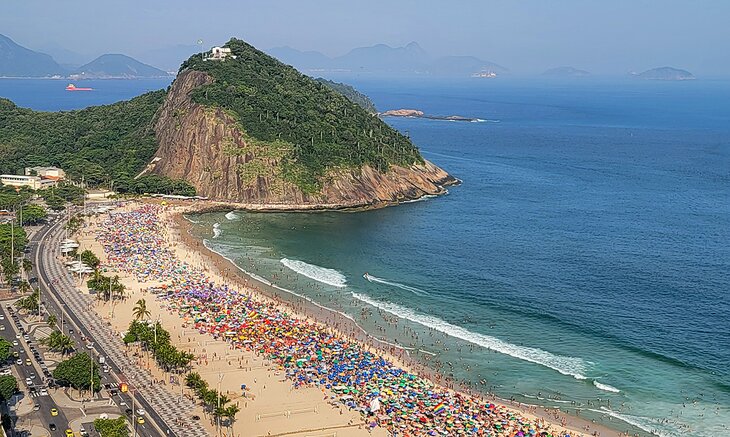
The beach is separated from the buildings and traffic by a broad promenade paved in black and white mosaic in an undulating pattern reminiscent of streets in Lisbon, Portugal. Along this promenade, the famed Copacabana Palace is protected as a national monument. Inside this hotel's lobby, you can easily imagine seeing the royalty and film idols who have stayed here.
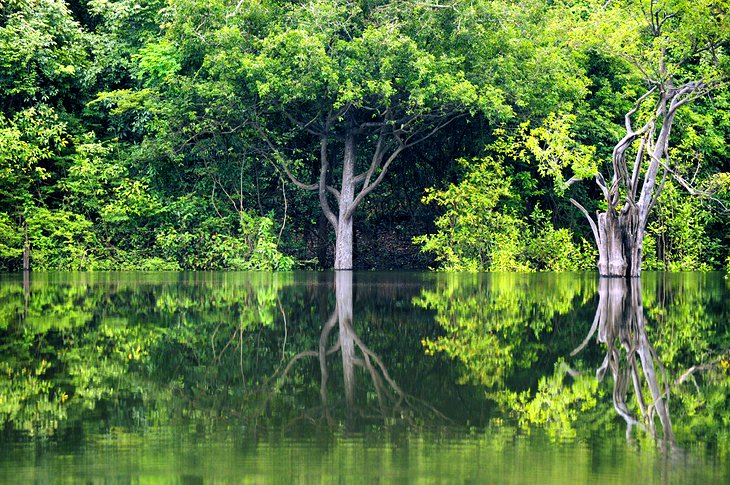
About 20 kilometers southeast of Manaus, the dark Rio Negro waters meet the light muddy water of the Rio Solimões, flowing side by side for about six kilometers before mixing as the Amazon. Boat trips from Manaus take you to this point, called Encontro das Aguas , meeting of the waters.
Other boat trips take you into the heart of the rainforests and the network of rivers, channels, and lakes formed by the three rivers. In the Rio Negro, the Anavilhanas Islands form an archipelago with lakes, streams, and flooded forests that offer a full cross-section of the Amazonian ecosystem.
You can see monkeys, sloths, parrots, toucans, caimans, turtles, and other wildlife on a boat trip here. Also close to Manaus, the 688-hectare Janauari Ecological Park has a number of different ecosystems that you can explore by boat along its narrow waterways.
An entire lake here is covered with giant water-lilies found only in the Amazon region. While in Manaus, be sure to see its famous Teatro Amazonas , the Italian Renaissance-style opera house, designed to put Manaus on the map as South America's great center of culture.
- Read More: Top-Rated Tourist Attractions in Manaus
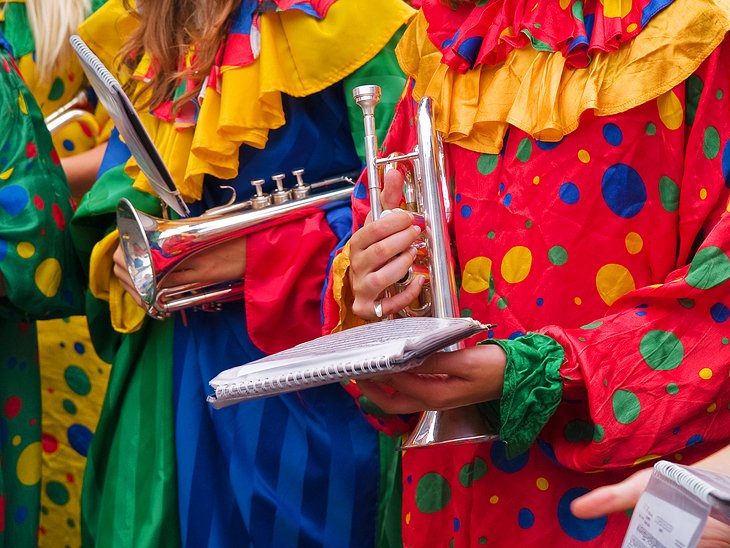
Few shows match Rio's pre-Lenten Carnaval (Carnival) extravaganza for color, sound, action, and exuberance. Make no mistake, this is not just another rowdy street party, but a carefully staged showpiece, where spectators can watch the parades of competing samba dancers from a purpose-built stadium designed by none other than Brazil's best-known architect, Oscar Niemeyer.
Called the Sambódromo , this long series of grandstand boxes provides ringside seats to a 700-meter parade route where dancers and musicians from the competing samba schools strut their stuff in a dazzling explosion of brilliant costumes.
If mob scenes are less appealing to you than more spontaneous celebrations (that are equally riotous and colorful), you'll also find Carnivals in Salvador , Bahia, Recife, and other Brazilian cities.
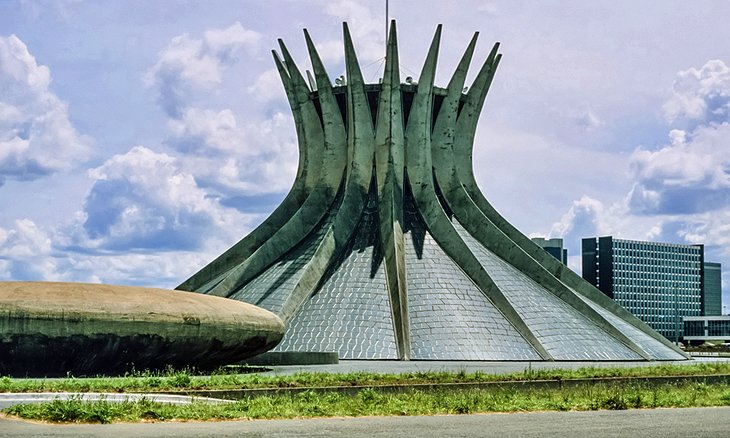
Brazil's new city of Brasília was carved out of the wilderness and completed in less than three years to replace Rio de Janeiro as the country's capital in 1960. The ambitious plan by Lúcio Costa and Oscar Niemeyer became a showpiece of city planning and avant-garde architecture, and it remains today as one of the world's few cities that represent a completed plan and a single architectural concept.
Without the normal mix of residential and business districts, the entire governmental section is composed of major architectural highlights, which are the city's main tourist attractions . Some of the most striking surround Praça dos Tràs Poderes : the presidential palace, supreme court, and the two sharply contrasting congress buildings, plus the Historical Museum of Brasília and the Panteão da Liberdade (Pantheon of Freedom), designed by Oscar Niemeyer.
That architect's best-known building in the city is the circular Catedral Metropolitana Nossa Senhora Aparecida , whose curved concrete columns rise to support a glass roof. Another of Niemeyer's landmark works is the Palácio dos Arcos , surrounded by beautiful gardens designed by Brazilian landscape architect Roberto Burle Marx, who worked with Niemeyer on several projects throughout Brazil.
The round Memorial dos Povos Indígenas (Museum of Indigenous People) is patterned after a traditional Yąnomamö round house. But many consider Niemeyer's finest work to be the Monumento JK , a memorial to President Juscelino Kubitschek, the founder of Brasilia. Brasilia has been named a UNESCO World Heritage city.
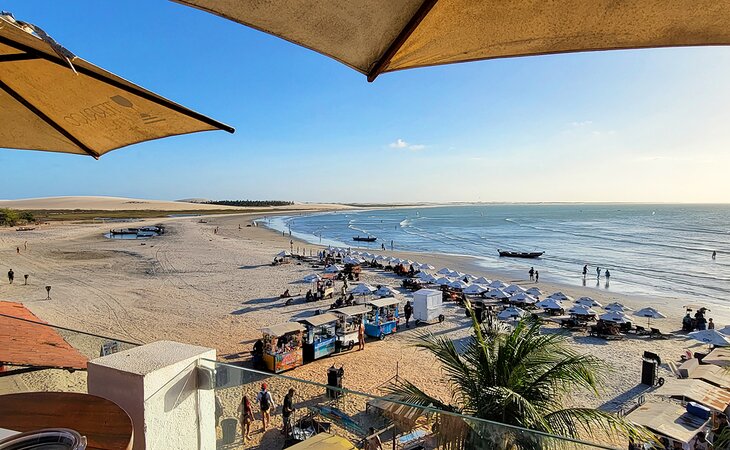
If you've ever dreamed of a beachside village where all the streets are sand and like with good restaurants, decent hotels, and the odd donkey wandering around, Jericoacoara is the place for you. Jeri, as it's commonly referred to is, located within the confines of the spectacular Jericoacoara National Park , access is only through a huge expanse of massive sand dunes in a 4WD vehicle or, for the more adventurous, on the back of a beach buggy.
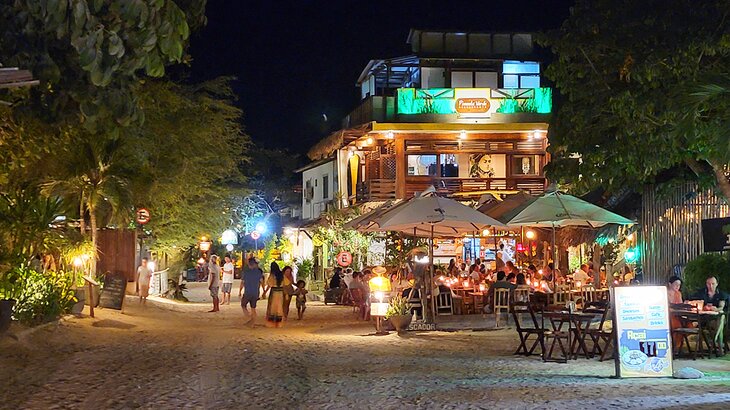
Each night the town comes alive when the mobile vendors set up shop on the sand and the band starts to play. Grab a bite from one of the small BBQ stands and catch the sunset as it sinks into the expanse of the Atlantic Ocean, or even better secure a rooftop patio seat. Later on wander the sandy, pedestrian-only streets and enjoy a dinner with your toes in the sand. After dinner, check out one of the many boutiques featuring a variety of beach and resort clothing.
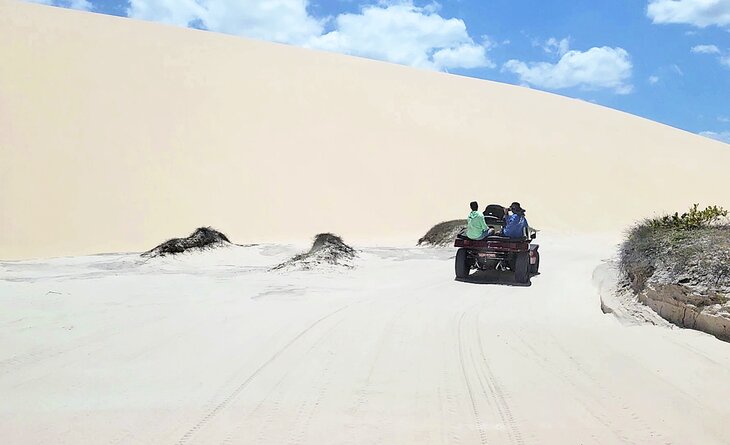
Windswept beaches run for hundreds of miles north and south of Jeri and this draws wind sport enthusiasts from around the world. Jeri is considered by many to be the best place in the world to go kiteboarding and as a result, draws a diverse set of participants from across the globe.
To experience the dunes or explore freshwater lagoons, where you can set up beachside at a restaurant and go for a swim, hire a buggy for the day , and go on an excursion. You can also head down towards Guiru or further along to Tatajuba to see or enjoy more kiteboarding. It's a fun trip that involves a river crossing on a small, flat barge.
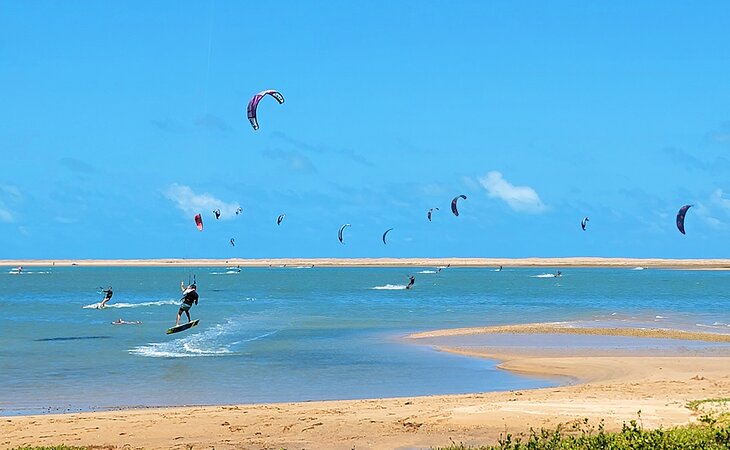
You can fly directly to Jericoacoara . As an alternative, you can fly into Fortaleza and hire a car and driver to run you up the coast, which is about a five-hour drive . The best option is to stop off for a night or two along the way in some of the other beach towns like Cumbuco or Guajiru , both of which are popular kiteboarding areas.
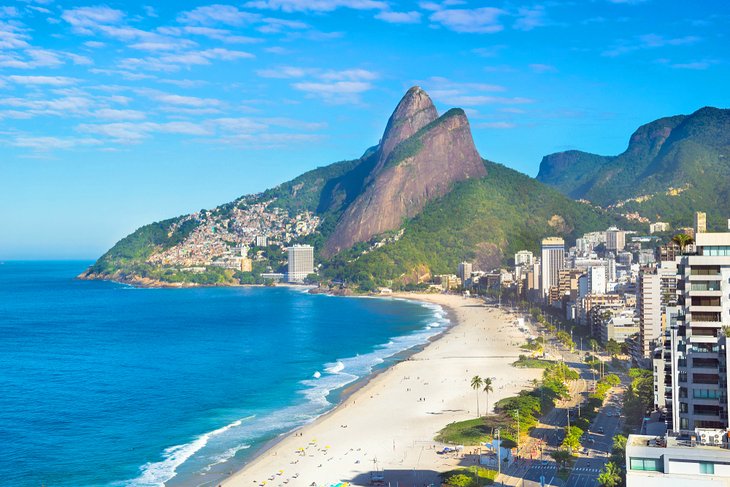
Beyond the beaches of Copacabana, the glorious white sands merge into the just-as-famous beaches of Ipanema. The same wave design of Copacabana's wide promenade continues here, separating the sand from the line of hotels, restaurants, cafés, art galleries, and cinemas that make this a popular social zone year-round.
Farther along, beyond the Jardim de Alá Canal, which drains Lagoa Rodrigo de Freitas lagoon, are the beaches of Leblon . With more locals and fewer tourists, these beaches are favorites for families. Sunday is especially busy, with an antiques market at Praça de Quentaland and the Feira de Artesanato de Ipanema , alive with music, art, handicrafts, and street food.
The waves at Ipanema and Leblon can be very strong and unpredictable, so be careful where you swim. Follow the locals and stay out of the water where you don't see others swimming. If surf is what you're looking for, head to the stretch between Copacabana and Ipanema, where the surfers hang out.
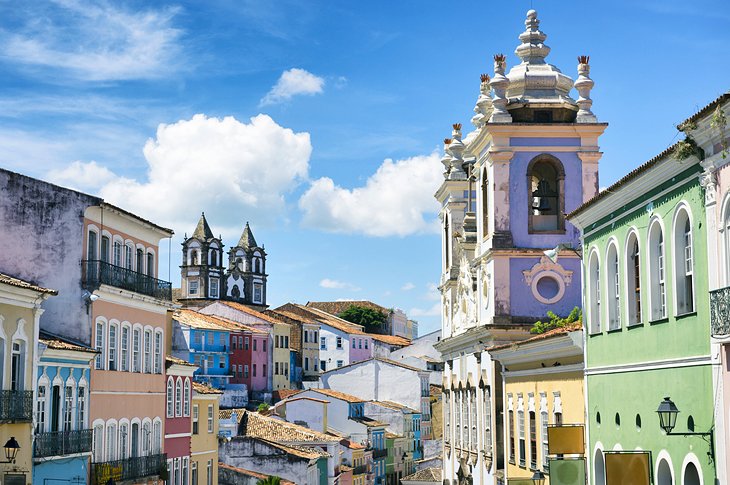
The Cidade Alta (Upper Town) of Brazil's former colonial capital has been named a UNESCO World Heritage site for its exceptional collection of 17th- and 18th-century colonial buildings, the finest such ensemble in South America.
Called the Pelourinho, this old quarter is where you'll find Salvador's most beautiful churches and monasteries, built at a time when Brazil was the source of Portugal's riches, and the plentiful gold was lavished on the colony's religious buildings.
The finest and most opulent of the city's churches is São Francisco , built in the early 1700s and filled with intricate carvings covered in gold. In the choir and cloister, you can see excellent examples of Portuguese tile panels, called azulejos.
This was the friary church, and next to it is the church of the Franciscan Third Order. It's impossible to miss the riotously carved façade covered in statues and intricate decoration. The interior is just as ornate, surpassing even the Portuguese Baroque in its opulent detail.
- Read More: Top-Rated Attractions & Things to Do in Salvador
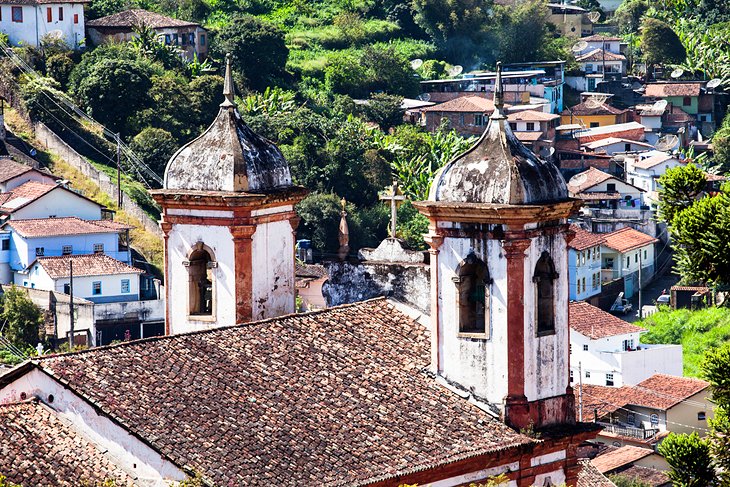
The wealth of Brazil's state of Minas Gerais in its glory days of the colonial period is easy to imagine from the interiors of the churches in its old capital, Ouro Preto. Entire walls are washed in gold that flowed – along with diamonds – from the mines surrounding the city in the 17th and 18th centuries.
Cascading down the sides of a steep valley and surrounded by mountains, Ouro Preto is a jewel of a colonial town, but its steep narrow streets and mountain setting – however captivating for tourists today – didn't meet the needs of a growing provincial capital. The government moved to the newly built capital of Belo Horizonte, leaving Ouro Preto in its time capsule.
The 17th-century Baroque and Rococo churches of São Francisco de Assis and Matriz de Nossa Senhora do Pilar are the best examples, but the entire town is so rich in colonial architecture that Ouro Preto has been named a UNESCO World Heritage Site. The steep streets, so precipitous in places that they become stairways, are lined by gracious colonial mansions, and white churches crown its hills with Baroque bell towers.
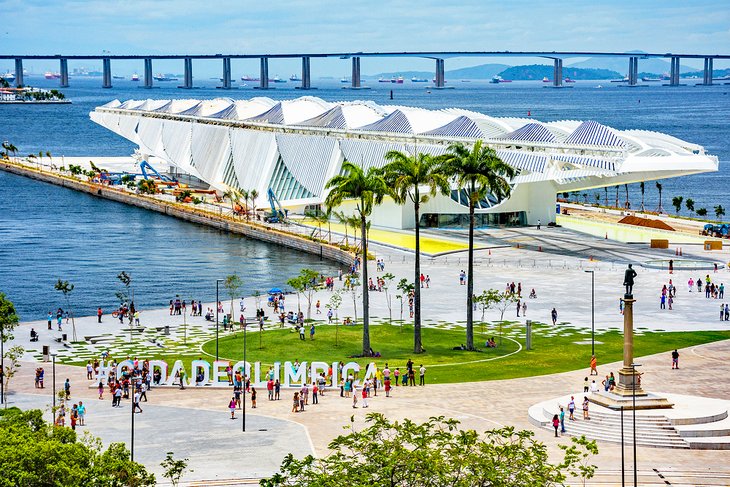
The futuristic architecture of the Museum of Tomorrow in Rio de Janeiro gives a clue about its contents. Thought-provoking exhibits invite visitors to think about what the world might be like in the future, exploring scenarios of how our planet may change in the next half-century.
Examining these times of fast-moving changes in society, technology, and the physical world, the museum prompts viewers to consider various paths into the future, and how each opens up based on the choices made every day as individuals and as a society.
This eye-catching science museum overlooking the waterfront was designed by Spanish architect and artist, Santiago Calatrava.
Address: Praça Mauá 1, Centro, Rio de Janeiro, Brazil
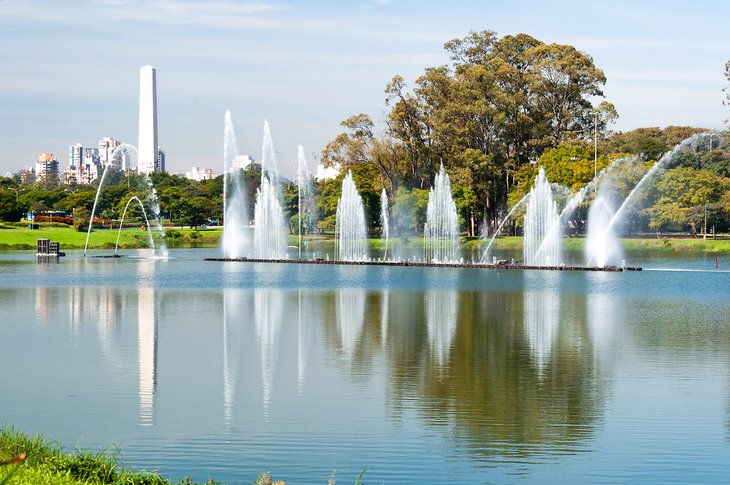
The most visited park in South America, Ibirapuera Park is a vast green space designed by Brazilian landscape architect Roberto Burle Marx, with buildings designed by Oscar Niemeyer. The park is a showcase for modern architecture and a center for Brazilian culture.
Amid its monuments, gardens, playgrounds, trails, and lakes are museums and performance spaces that include Oscar Niemeyer's Auditório Ibirapuera , one of São Paulo's best concert venues. A Japanese Pavilion with sculptures, clothing, and traditional crafts is set in rock gardens with a fishpond.
The Museu da Aeronáutica e do Folclore , the Aeronautics and Folk Art Museum , features thousands of examples of folk arts and exhibits on traditional cultures from across Brazil. The lower floor is devoted to aeronautical equipment and model airplanes. A separate museum, the large Museu Afro-Brasil , features the culture and history of Afro-Brazilians and their contributions.
Address: Avenida Pedro Alvares Cabral, São Paulo
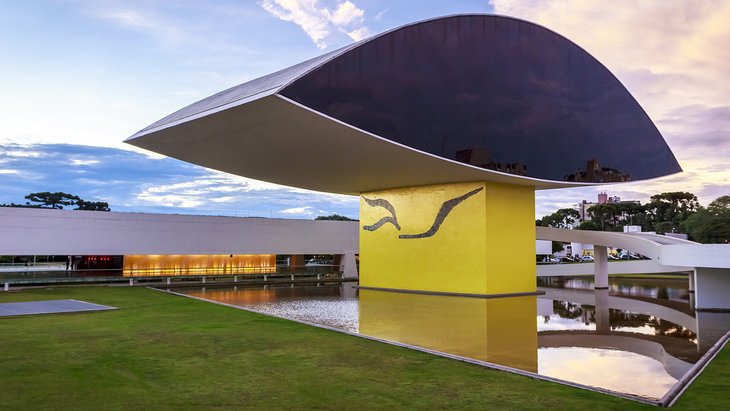
Paving the way for the unconventional building shapes created by later futurist architects such as Frank Gehry and Santiago Calatrava, Oscar Niemeyer left his native Brazil with a treasury of his most iconic buildings. One of these was built as the New Museum, completed in 2002 when Niemeyer was 95 years old, and renamed in tribute to him in 2003.
Balanced on a massive 60-foot pillar, the gallery is formed by a pair of joined arcs that resemble the shape of the human eye, hence its popular name, Museu do Olho – Eye Museum. Access to this raised structure is by a series of curved ramps. Inside the eye, the 2,000-square-foot gallery focuses on architecture, design, and the visual arts, and displays many of Niemeyer's works.
Niemeyer added a later rectangular gallery on the grounds to display changing exhibitions of works by contemporary Brazilian artists. In addition to visiting during its daytime open hours, try to see the Museu Oscar Niemeyer after dark, when it is spectacularly lighted.
Address: Rua Marechal Hermes 999, Curitiba
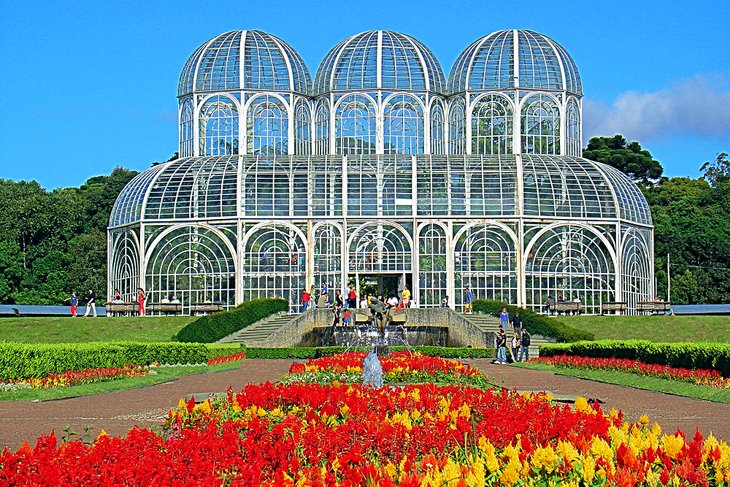
Reflecting the style of 17 th - and 18 th -century French palace gardens, Curitiba's Botanical Garden was opened in 1991. Formal beds are outlined by low sculpted hedges, in a geometric design inspired by the city's flag. The landscape is enlivened by fountains, waterfalls, and ponds, and in the park surrounding the gardens are forests of native trees, with walking paths.
The focal point of the botanical gardens is the main greenhouse, an Art Nouveau-style conservatory made of glass and white metal, reminiscent of the Crystal Palace in Victorian London. Its unusual shape includes three domes that merge into the rectangular base. Inside are plants native to the region.
Even the grass in the Garden of Native Plants of Curitiba is a native variety, and its flowers are especially attractive to butterflies and other pollinators. The Garden of the Senses (Jardim das Sensações) is a 200-yard path through a wisteria tunnel, where more than 70 plant species are chosen for their fragrance or tactile appeal. Visitors are invited to try walking through it blindfolded to fully appreciate the garden by using their other senses.
Behind the main greenhouse is the Frans Krajcberg Cultural Space, displaying more than 100 large sculptures created from the remains of trees that were burned or illegally cut, calling public attention to the destruction of Brazil's native forests.
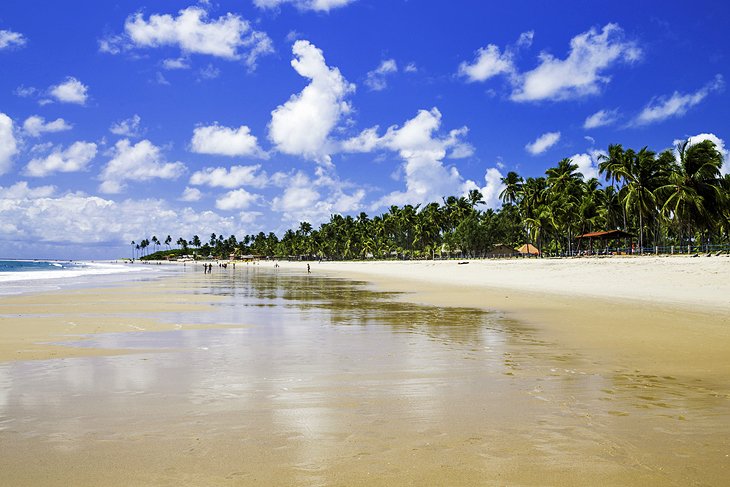
The crystal waters, tall palm trees, and broad stretches of silver sand are only a few of the reasons why Porto de Galinhas is frequently cited as Brazil's best beach. For a country with more than 7,000 kilometers of Atlantic coast, much of it sandy beaches, that's saying a lot.
The town stretching along the beach is laid-back, colorful, and just the right blend of old-fashioned beach town fun and chic boutiques. Its hotels and resorts lie close to the land instead of soaring in high-rise blocks.
Jangadas, picturesque sailboats, will take you out to reef-top pools where brilliant tropical fish swim around your feet in ankle-deep water. You can also take a boat to a lagoon where tiny seahorses swim, and you can scuba dive to explore impressive coral reefs or shipwrecks, kayak in the lagoons and estuary, or buy a fanciful kite from a beach kiosk to fly in the steady breeze. Nearby Maracaipe is popular with surfers.
Porto de Galinhas is just one of the beautiful beaches on Pernambuco's 187-kilometer coast. Closer to Recife, 17th-century Olinda is a UNESCO World Heritage Site overlooking a popular beach. The main beaches in Recife itself are Praia da Boa Viagem, São José da Coroa Grande, and the Carne De Vaca.
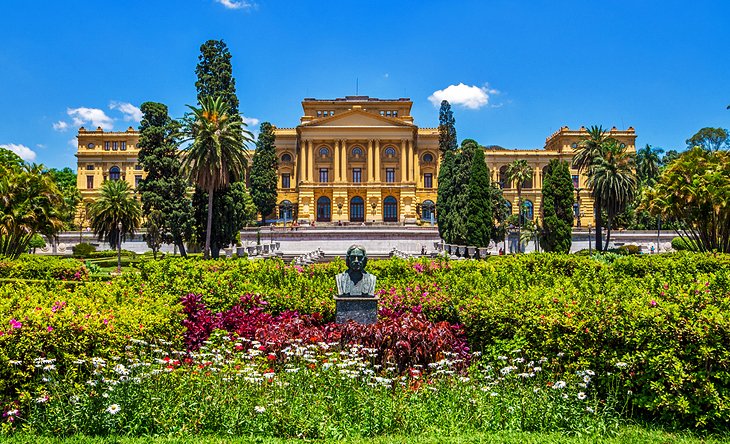
São Paulo holds some of the best collections of fine arts in Latin America, and the buildings in which they are housed are architectural landmarks as well. The Museu de Arte, MASP, displays the continent's most comprehensive collection of western art, with representative works by artists from the Renaissance through modern masters.
There are 73 bronze sculptures by Degas and works by Renoir, Manet, Van Gogh, Matisse, Picasso, and Miró. From its beginning, the museum has concentrated on works of mid- to late-20th-century artists, and the building designed by architect Lina Bo Bardi is a Modernist landmark.
Oscar Niemeyer designed the Pavilhão da Bienal de Artes in Ibirapuera Park , home to the Museu de Arte Contemporânea. More than 8,000 works of art - one of Latin America's largest collections of 20th-century Western artists - includes Picasso, Chagall, Kandinsky, Miró, and Modigliani along with major Brazilian painters.
Set above Versailles-inspired formal gardens, Museu do Ipiranga houses paintings and decorative arts.
For another kind of art, don't miss Batman's Alley , an open-air gallery of street art by local and international artists. It is in the bohemian Vila Madalena neighborhood, where you'll also find art galleries showing the works of well-known and rising Brazilian artists and craftspeople.
- Read More: Top-Rated Attractions & Things to Do in São Paulo
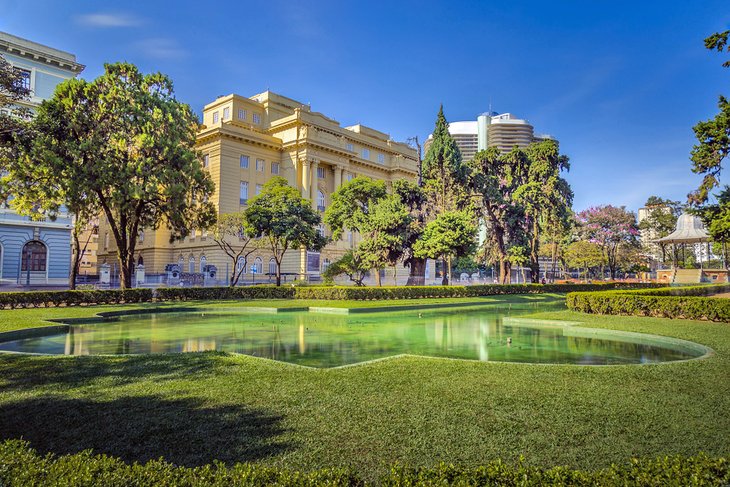
The capital of the state of Minas Gerais gave the pre-eminent Brazilian architect Oscar Niemeyer his first commissions, and today, these early Niemeyer buildings draw tourists and fans of Modernist architecture to the city.
His first major work, which immediately set him apart from conventional architects, was the parabolic-curved São Francisco de Assis church, beside a lake in the Pampulha neighborhood. On the hillside above it, and connected by gardens designed by landscape architect Roberto Burle Marx, is Niemeyer's earlier casino building, now an art museum.
Overlooking the large Praça da Liberdade in the city center is the sinuous apartment building, Edificio Niemeyer , one of his most famous early works. The clean geometric lines of his later Palácio das Artes mark the edge of the Municipal Park, housing the Minas Gerais Craft Center featuring works of contemporary craftsmen.
The postmodern Rainha da Sucata – Queen of Scrap Iron – is another landmark building in Belo Horizonte, this one the work of Éolo Maia and Sylvio Podestá. It now houses the mineralogy museum.
Read More: Top Attractions & Things to Do in Belo Horizonte & Easy Day Trips
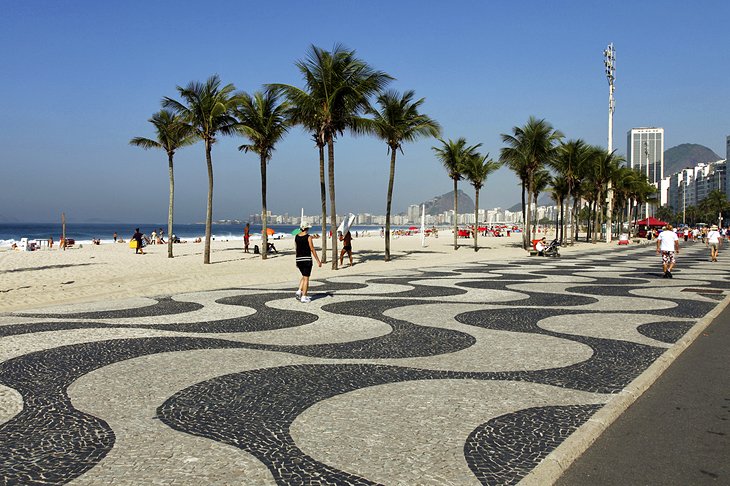
More on Brazil
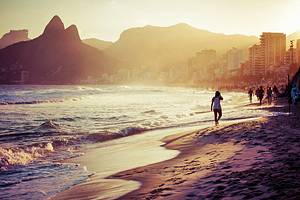
The 10 most incredible places to visit in Brazil

Mar 1, 2024 • 9 min read

The scale of Brazil can be overwhelming but we're here to help with picking the best parts of it to visit © MesquitaFMS / Getty Images
One of the world’s most dazzling destinations, Brazil is packed with steamy rainforests, tropical savannas, wetlands and exciting cities.
The ecosystems found in this giant of South America are home to the largest collection of plant and animal species found anywhere in the world.
But even if exploring the natural world is not top of your Brazil to-do list, plenty of life can be found in the country’s musical metropolises, too. When it comes to relaxing, Brazil has sand to spare: 2095 beaches, to be precise, dotting its 7242km (4500-mile) Atlantic coastline.
With such a massive footprint and a wide variety of things to do, planning an itinerary here can feel overwhelming. Let us help get you started with our 10 favorite places to visit in Brazil.
1. Ouro Preto and the towns of Minas Gerais
Ouro Preto (meaning “black gold”) in Minas Gerais was at the heart of Brazil’s 18th-century gold rush.
Nearly two dozen churches, lavishly ornamented with gold filigree, still ring out their bells across the hillsides of this rural town, which at its height was home to 110,000 residents – the majority of whom were enslaved people.
One of Ouro Preto’s most famous residents was the sculptor Aleijadinho, who studied European baroque traditions and developed his own unique style. His sculptures and reliefs – some of which he carved after losing his fingers to a disease – adorn churches across the region, including in Tiradentes , Congonhas and São João del Rei .
The historical Royal Road links up most of these towns and makes for an adventurous road trip . An essential detour for art lovers is nearby Inhotim , the world’s largest open-air contemporary art museum.

2. Paraty and the Saco de Mamanguá
The other terminus of the Royal Road, seaside Paraty was where the precious metals extracted from Minas Gerais were shipped out in the early days of Brazil’s gold rush.
The town lost some of this export trade to Rio de Janeiro in the early 1700s, yet its architecture was impeccably preserved – and it’s all the more impressive for being sandwiched between steep, jungle-covered mountains and the warm, clear waters of the ocean.
A forgotten gem for centuries, Paraty has in recent decades attracted writers and artists from all over the world.
The city plays host to a number of prestigious events, including the literary festival FLIP , a jazz festival and a pinga festival (an excuse to drink lots of pinga , slang for cachaça, the Brazilian cane spirit that’s produced locally).
Getting out on the water to explore some of Paraty’s 65 islands and 300 beaches is a must. Motor boats and schooners can be rented, but for a close-up connection with nature join a kayak tour in the Saco de Mamanguá – a “tropical fjord” – and paddle to deserted beaches, mangroves, waterfalls and Caiçara fishing communities.
3. Amazon rainforest
The Amazon has a mysterious pull that has fascinated people for centuries.
One of the wildest places on the planet, the region is almost too big to comprehend, spanning about 42% of Brazil and swaths of eight neighboring countries.
Each region offers something different in terms of ecology, tourism and local culture; doing your research before visiting is essential as it’s neither an inexpensive nor easy-to-reach destination.
You'll gaze at the unending expanse of green for hours as you fly overhead into Manaus , the region’s largest city and a good jumping-off point for many of the lodges and Amazon jungle experiences .
You can try canoeing through flooded forests at Anavilhanas National Park , heading further afield to the recently formed Xixuaú Reserve or spotting river dolphins in the Mamirauá Reserve.
A few hundred miles east, Santarém is another access point for seeing the majestic trees deep in the Tapajós Forest or beach hopping along the banks of the Arapiuns River, a tributary of the Tapajós River near Alter do Chão .
4. Brasília
The city of the future that’s forever stuck in the past, Brasília is a fabulous paradox. The federal capital officially opened for business in 1960, becoming the ultimate symbol of modernity for an urbanizing nation and a long-hoped-for kick-start for the economic development of the country’s interior.
Built in the middle of the hot, dry landscape of Brazil’s Center-West, Brasília is an open-air monument to the people who shaped and built it, including urban planner Lúcio Costa and architect Oscar Niemeyer.
Thousands of tons of concrete and steel were poured into a series of Modernist architectural gems that are worth spending a day or two to explore – though not on foot, as the sprawling city was designed for cars not pedestrians.
Niemeyer’s much-loved curves can be spotted everywhere, most notably in the metropolitan cathedral , with its white columns rising up to the heavens in a hyperboloid structure studded with stained glass.

5. Jalapão
In a country teeming with rainforests, pristine beaches and other natural wonders, the tropical savanna hinterlands of the Cerrado certainly hold their own.
While the Cerrado has borne the brunt of Brazil’s agribusiness boom in recent decades, pockets of conservation do exist, including the relatively unexplored Jalapão State Park – 34,000 sq km (13,127 sq miles) of scrubland, grasslands, forest, caves and unusual rock formations.
The best time to visit is the dry season (from May to September) when, despite the dry landscape, water is the main attraction.
Splash in the glassy pools of waterfalls or kayak down rapids – you can also take a dip in the so-called fervedouros (boiling pots), natural springs where the bubbling water buoys swimmers. Sand dunes and chapadas (mountain formations) also make for some spectacular hiking.
Chapada dos Veadeiros National Park (400km/248 miles south) and Emas National Park (to the west) are two much larger conservation areas that are home to dozens of species of flora and fauna at risk of extinction.
Lucky hikers might cross paths with giant anteaters, giant armadillos, maned wolves and rheas, South America’s largest bird.
6. Pantanal
The largest wetland region in the world, the Pantanal offers the best wildlife spotting in Brazil.
South America’s largest mammal (tapir) and largest bird (rhea) call the Pantanal home, as do more than 230 species of fish and 650 species of bird – plus such apex predators as jaguars, caimans and anacondas.
Spanning an area more than half the size of France, the Pantanal can be explored in a number of different ways.
The most accessible is by road, on the Estrada Transpantaneira, though small airplanes and motorboats open the doors to more remote zones and secluded, upscale lodges.
It’s easier to spot wildlife during the dry season, from May to September – but when the water levels rise from October onwards, the rivers flood their banks and inundate the surrounding plains, spurring on an abundance of flora and flocks of wading birds.
The wet season also brings the arrival of river cruises: the sundeck of a 15-cabin boat cruise to the Serra do Amolar mountains near the border with Bolivia is an ideal vantage point from which to contemplate the grandeur of this region.
7. Fernando de Noronha
An archipelago of islands some 320km (200 miles) off the northeast coast, Fernando de Noronha is high on many honeymoon wishlists.
Of Noronha’s 21 islands, only the largest one is accessible to tourists – and even then, its boundaries lie safely within Brazil’s largest marine park .
Dreamy beaches – including Baía do Sancho , Baía dos Porcos and Praia do Leão – all compete for the top slot on rankings of the best beaches in the country .
Silky-soft sands and clear blue waters would have holidaymakers flocking here if this place were on the mainland; happily, its remote location and a cap on visitor numbers keep the crowds to a welcome minimum.
Just off the shoreline, Noronha is an underwater paradise that’s home to 230 fish species, 15 varieties of coral, five types of (harmless) shark and the greatest concentration of tropical marine birds in the Atlantic.
You can dive to spot corals and shipwrecks in the marine park or watch hundreds of dolphins doing water acrobatics at sunrise before snorkeling in shallow tide pools. Noronha offers Brazil’s natural beauty at its absolute best, and this place warrants going the extra mile.

8. Rio de Janeiro
The most-visited city in Brazil, Rio de Janeiro didn’t earn its title of cidade maravilhosa (“marvelous city”) for nothing. In the eyes of Cariocas, it’s the most beautiful place on earth. Visitors would be hard-pressed to disagree.
Dense high-rises are stacked like sugar cubes between mountains cloaked in rainforest and studded with naked granite peaks jutting skywards.
Visitors hit the famous beaches to lounge in the sun, but the locals go to get active – surfing, running, cycling or diving into the sand over a sweaty game of beach volleyball. People-watching is a serious beach sport in its own right.
Come evening, Rio’s own special blend of tropical rhythms draws the crowds out onto the city’s streets to meet friends at botecos (bars) or join impromptu street parties.
You’ll also discover a wealth of culture and history – the city was the capital of the Kingdom of Portugal in the 19th century, and, until 1960, the capital of Brazil.
9. Ribeira Valley and the Atlantic Forest
The Mata Atlântica (Atlantic Forest) is Brazil’s “other” tropical forest. Regrettably, it’s also one of the most endangered biomes in the world, with just 12.5% of it remaining in disparate fragments along Brazil’s southeast-facing coastline.
Teeming with life, the forest has a wider variety of flora and fauna per hectare than the Amazon, with half of its species not found anywhere else in the world. In short, it’s a hidden gem within easy reach of Brazil’s largest cities.
The Ribeira Valley – a 28,489 sq km (11,000 sq mile) river valley straddling the São Paulo – Paraná state border, is home to the largest continuous stretch of remaining Atlantic Forest.
Here, visitors can explore some of the biggest caves in Brazil (at PETAR ), stay at traditional quilombos (communities that were formed by escaped enslaved Africans ), hike through the forest and raft down rivers.
Private nature reserves like the whopping 310 sq km (120 sq mile) Legado das Águas offer a range of ecotourism activities.
An ambitious plan to connect Atlantic Forest conservation areas (including the Ribeira Valley) with one long trail – the Caminho da Mata Atlântica – has been gathering pace in the last few years, though no one has yet attempted to hike its full 4000km (2485 miles) length.

10. São Paulo
Last but by no means least is South America’s most populous city. São Paulo may not have beaches, vast swathes of forest or even clean rivers, but it has a kinetic charm all of its own.
Poet Mário de Andrade called it “the hallucinated city,” which seems a fitting description for a megalopolis of 20 million residents. It’s a city whose soul is young and restless, a party-mad colossus with cutting-edge theaters, world-class chefs and a fascinating art scene, among countless other draws.
With layer upon layer of immigrant influences and centuries’ worth of boom-and-bust cycles, São Paulo attracts people from all over the world who thrive on its energy.
Its delights are not served up on a plate – visitors have to seek them out. But once you get a taste, you'll be hooked.
This article was first published Jan 5, 2022 and updated Mar 1, 2024.
Explore related stories

Destination Practicalities
Jun 12, 2024 • 10 min read
A multicultural, vibrant country teeming with wildlife, Guyana is off the main tourist radar. Here's all you need to know to make your visit a reality.

Jun 10, 2024 • 8 min read

Jun 4, 2024 • 7 min read

May 22, 2024 • 8 min read

Mar 14, 2024 • 8 min read

Feb 29, 2024 • 9 min read

Feb 11, 2024 • 9 min read

Feb 1, 2024 • 7 min read

Jan 30, 2024 • 9 min read

Dec 27, 2023 • 8 min read

The most beautiful place you’ve never seen: Northern Brazil in photos

There’s a part of Brazil that is mostly void of international tourists. It’s a little harder to get to, it’s more remote than iconic Brazil and English is not widely spoken. But it’s worth the effort because you’ll be blown away by its natural beauty, fascinating history and energetic locals.
I’m talking about Northern Brazil and it’s a hidden gem you need to get to.
The area was a photographer’s dream. With brightly painted buildings that are hundreds of years old, no saturation is required for any photo taken in Salvador. And an old mining town called Lencóis has a similar feel but the streets are quieter and more peaceful and the locals are laidback.
If it’s expansive landscapes you’re after then Chapada Diamantina National Park has got you covered. You can practise your steady hand on a slow shutter speed on the many waterfalls in the region, get your wide angle lens out for the impressive lookouts and just bask in the greenery.
For beach life, head to isolated Jericoacoara. You’ll have to ride an hour through sand dunes before you see a little oasis town on the horizon. It’s said that Jeri has some of the best sunsets in all of Brazil and I think that could be true.
So, armed with my camera on Intrepid’s new Northern Brazil trip, I got snap happy and here are the results.
Scenes from Salvador

Founded in the 16 th Century, Salvador was Brazil’s first capital and it’s known as the happiest place in Brazil. It’s not hard to see why! With so many colours on its old buildings it’s impossible not to feel euphoric. This was one of the streets leading up to the main square in Pelourinho, the historic old town – a UNESCO World Heritage Listed site.

I was walking around the cobbled streets of Salvador’s old town and when I turned a corner I caught this scene. Earlier that morning the city received a torrential downpour with thunder so loud it literally scared me, so I suspect this lady made a nice little profit selling her bright umbrellas.

Capoeira is hugely popular in Brazil. It sort of looks like a cross between dancing and martial arts, which two people perform against the beat of traditional Brazilian music. It’s quiet mesmerising to watch and not uncommon to see performances in popular squares, such as this one in Salvador.

This is a typical street in Lencóis, our base within Chapada Diamantina National Park, which is about a 6 hour bus ride from Salvador. Chapada means steep cliffs and diamantina means diamond, many of which were found there in the mid-19 th century. So it developed into quite a wealthy little town and now has a charming, colonial style feel that boasts a lot of colour.

Lencóis was so beautiful. This was taken as the sun was setting so the light that fell on this building was perfect. The river rolled through the town and that building seemed to be a bit of a social hub – one night we stumbling on a Capoeira school entertaining the locals.
Into the wild

We did a full day hike through Chapada Diamantina National Park and came across caves, rivers, waterfalls and stunning lookouts. It was all very beautiful. This was taken just after we all went for a swim in the river and really captures the landscape we encountered on our hike.

“Trust me, this is the best natural massage you’ll ever have!” Our local guide in Chapada Diamantina wasted no time in stripping down and jumping under this waterfall. It was hammering down and we were all taken by surprise. But eventually everyone worked up the courage to get a pummelling on our backs!

We went swimming in here and it was bliss. Definitely the best natural pool I’ve ever had the pleasure of swimming in. To the right is the Poço do Diabo waterfall, where you can swim directly underneath.

The grand finale to our Chapada Diamantina experience was sunset from the top of Pai Inácio Hill. This is Pedro, our Intrepid leader, who is enjoying the fine view featuring those iconic steep cliffs that Chapada is known for.
Life’s a beach (or more specifically, a lagoon)

OK, so I didn’t actually take this photo (our talented photographer Lucy Piper did) but it represents Jericoacoara so well! The sleepy town is surrounded by sand dunes and deep within these is a lagoon they call ‘Lagoa Paraiso’ – no prizes for guessing what that means. The trip hit its peak as soon as I got into that hammock with coconut in hand.

This was taken half way up the Pôr do Sol sand dune just before sunset. These guys are hauling a cocktail cart up the sand dune, because what’s a sunset without a cocktail in hand?! We had some pretty moody weather in Jericoacoara, but it made for some dramatic photos.

And this is the sunset we saw from the top of the sand dune. The main beach at Jeri is not the best swimming beach as the waters are very shallow. But at sunrise and sunset when the sun glistens on the water it has the effect of a mirror and it’s just simply beautiful.
Inspired? Of course you are. Check out Northern Brazil with Intrepid Travel.

Feeling inspired?
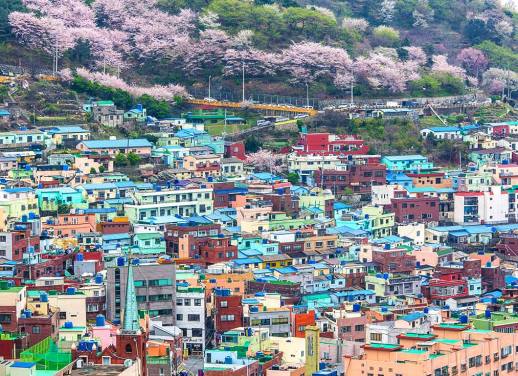
Amanda Linardon
Amanda is not one to sit still for very long - when she's not eating her way around the world, hiking through national parks or rubbing shoulders with the locals on the train, she's likely to be researching her next adventure. On the rare occasion when she isn't thinking about travelling, Amanda loves to get around on her bike, cook a different cuisine every night and drum up PR for Intrepid Travel.
You might also like
The undeniable benefits of slow travel, over 20 years of the intrepid foundation: a..., everything you need to know about a night..., 5 places to escape the crowds in italy..., the 7 best places to go on a..., 10 surprising facts about ethiopia, galapagos or madagascar which unique destination should be..., travelling to chile here’s the best time to..., 10 reasons to visit samoa, the 10 antarctica questions you want answered, australia or new zealand where to go on....

The 25 Best Places to Visit And Things To Do In Brazil!
Posted on Last updated: December 15, 2023
Categories Brazil , South America
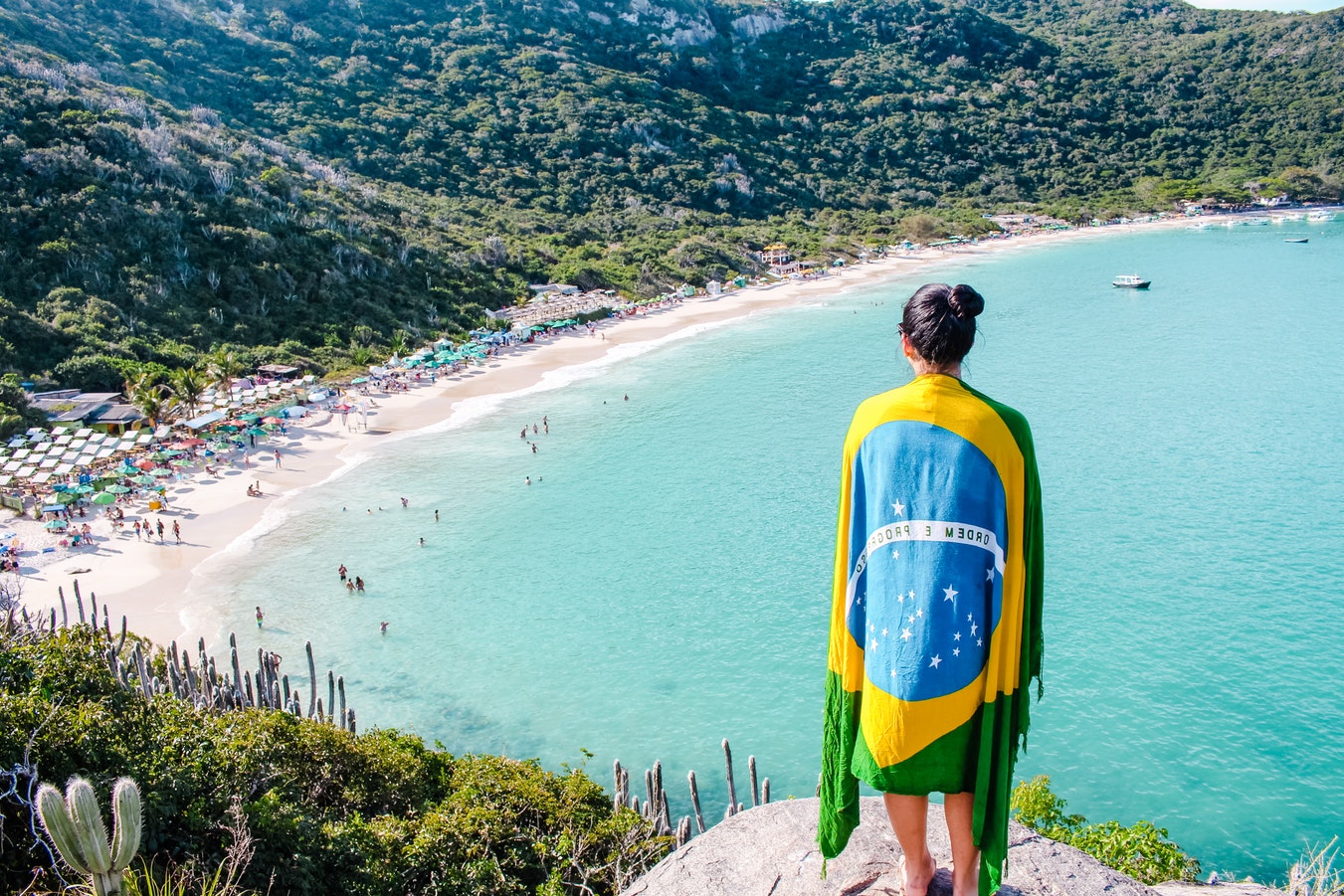
Expert travel storyteller Jordan Adkins, founder of InspiredByMaps.com, brings a decade of adventures across 101 countries and 450+ UNESCO sites into rich, off-the-beaten-path narratives, melding ecological expertise with genuine, seasoned travel insights. His full bio can be found here.
One of the world’s most fascinating countries, there are so many things to do in Brazil that adventure-hungry travelers are spoilt for choice. Whether you want to hike in the jungles, lie on the beach or dance in the streets, you can do that here.
From tranquil beaches to vibrant cities to lush rainforests, the country spans a huge variety of landscapes — and as a result, there are so many places to visit in Brazil.
If you’re not already captivated by its scenery and biodiversity, you’ll be hooked by the culture. There are energy and a love of life that runs through every aspect of Brazilian culture.
Samba dancing, drumming in Carnival, indigenous and Portuguese influences, mouth watering food; all of these aspects and more combine to create an atmosphere that you’ll want to stay in forever.
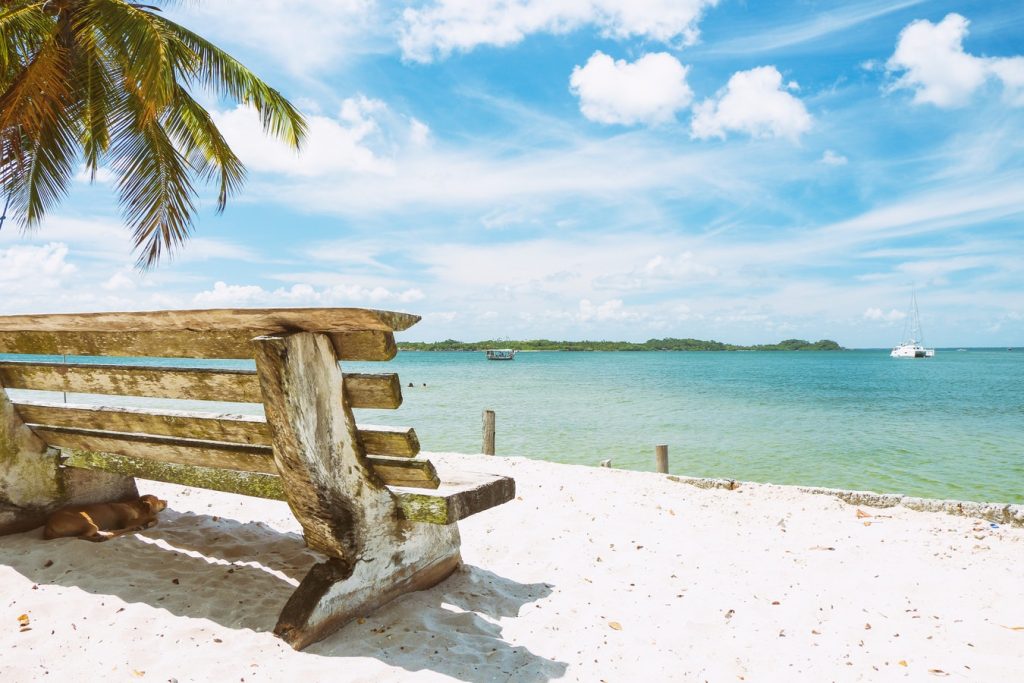
And, to put it plainly: Brazil loves to party!
You’ll have heard of Carnaval, of course; a cacophony of music, dancing, and general joy. There are also diverse festivals going on throughout the year, great nights out in the cities and towns; not to mention just any quick drink turning into dancing at dawn!
So, what are some of the best things to do in Brazil? With so much on offer, how can you narrow it down? We’ve got some suggestions below.
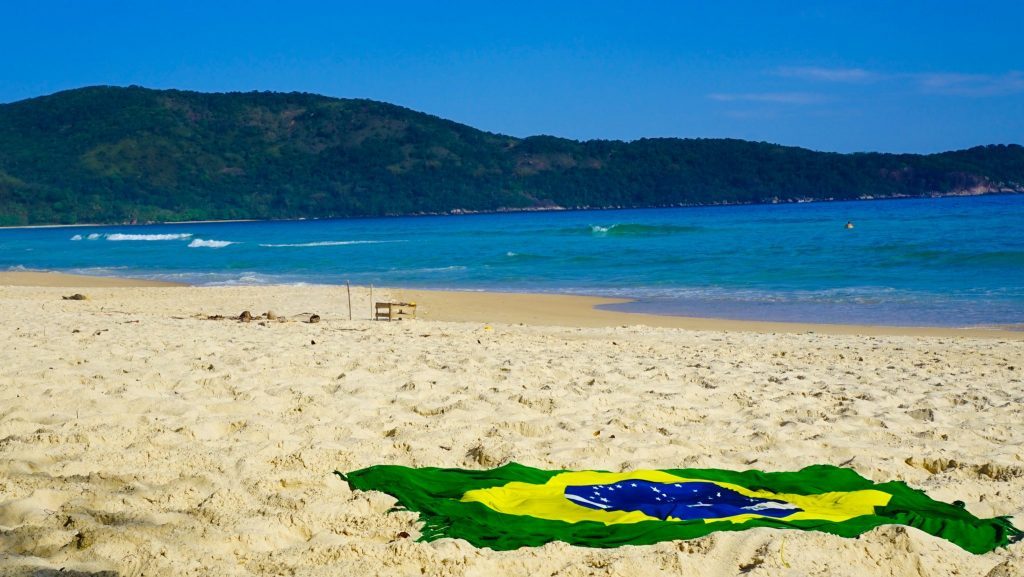
The 25 Best Places to Visit And Things To Do In Brazil! 🇧🇷
Page Contents
Rio de Janeiro
Fernando de noronha, iguazu falls, recife & olinda, lençóis maranhenses national park, parque nacional da chapada diamantina, ilha grande, florianópolis, amazon from manaus, são miguel das missões, alter do chao, belo horizonte, the pantanal, salvador city, chapada dos veadeiros national park, vale dos vinhedos, armação dos búzios.
World-famous for its Copacabana and Ipanema beaches, Christ the Redeemer statue and wild Carnaval, Rio de Janeiro is absolutely top of the list of things to do in Brazil. We can’t pretend it’s a quiet place, but it’s got a relaxed, carefree attitude that is intoxicating for travelers.
Otherwise known as the Cidade Marvalihosa (Marvelous City), here you’ll find lush forests and mountains circling the city while the beach acts as the city’s backyard.
You can hike, surf, sail or rock climb – or just chill on the sands, if you’d rather! It’s a stunning landscape for a city and you’ll never stop appreciating the beauty. In a city this, well, marvelous, it’s hard to get past the superlatives and decide exactly what to do — so to help, we have put together a list of the top things to do in Rio de Janeiro Brazil!
The rich and varied history means there’s plenty to discover among Rio’s myriad attractions. That is, if you want to leave the endless fun of the bars and the beach. Arriving at a festival time means you’ll soak up even more of the joyful celebration, whether it’s a big football match, Carnaval or weekend samba parties. New Year is also a pretty spectacular time to enjoy all that makes Rio special.
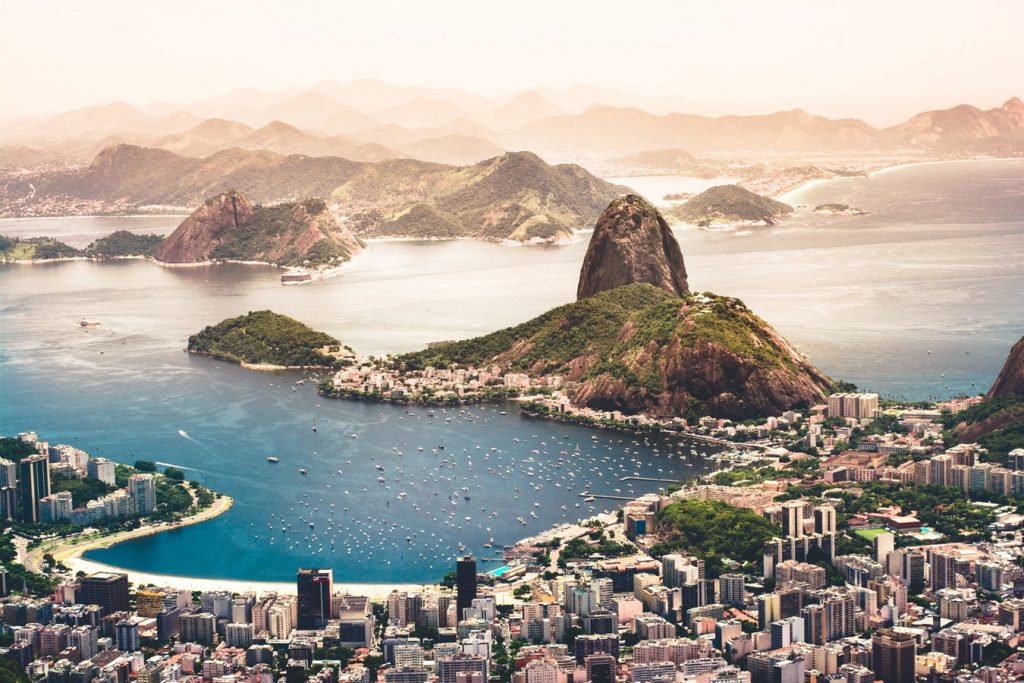
The tropical oasis of Fernando de Noronha is in an entire league of its own. The isolated tip of a submerged ocean volcanic, the archipelago of Fernando de Noronha, lies 271 miles (350 km) off Brazil’s northeast coast and consists of 21 islands.
A UNESCO World Heritage Site with a sensitive ecosystem, tourist numbers here are restricted to around 450 to 500 people per day. But the lucky few that make it here are duly rewarded …
Fernando de Noronha has everything you could want from an unforgettable island getaway. Picturesque scenery, majestic seascapes, fine white sand beaches, bountiful diving, animated snorkeling, turquoise waters, and oh-so-much-more.
Only one island in the chain is inhabited, with a population of around 5,000 people. Otherwise, most of the rest of this paradisaical retreat is left to the seabirds, reptiles, turtles, and exotic marine life. A nature lover’s paradise, Fernando de Noronha can be compared to Fiji , an arresting beach island scene straight out of a Hollywood film set.
There are a limited number of flights daily, so getting here – and accommodation once you arrive – is not particularly cheap. Still, if you can stretch your budget, Fernando de Noronha is worth every cent.
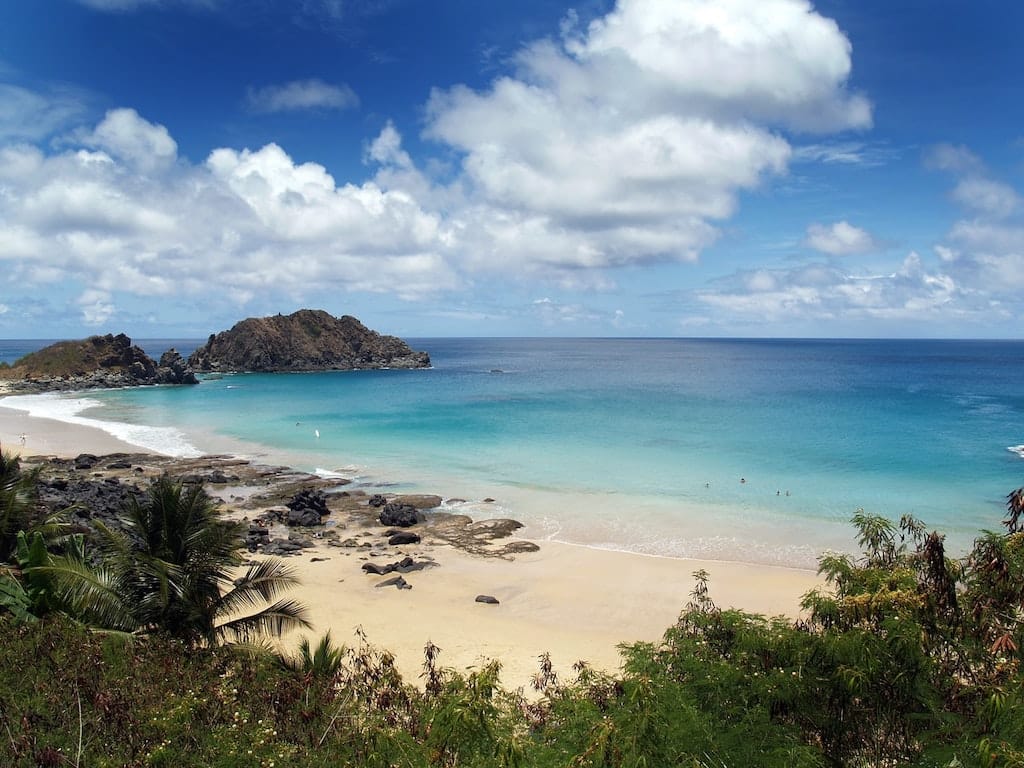
As well as fascinating cities, Brazil also has some of the most stunning natural wonders in the world; the awe-inspiring Iguazu Falls are among these. There are 275 separate drops along the 2.7 kilometers of the falls, which separate Argentina and Brazil. From the Brazilian side, you go to the Igauçu National Park to enjoy the spectacle.
There’s an intricate series of footpaths and walkways that enable visitors to get up close to the natural beauty and on the Brazilian side, there’s a long pathway along the canyon.
A must-see for everyone is Devil’s Throat, a narrow chasm that takes half of the river’s flow along; you can imagine the power and noise of the water there.
Get a panoramic view of the falls from the trail or splurge on a helicopter ride for the bird’s eye perspective. Stay in the nearby town of Foz de Iguacu so you can get up early to beat the heat and the crowds; then enjoy being mesmerized by the majesty of this remarkable place.
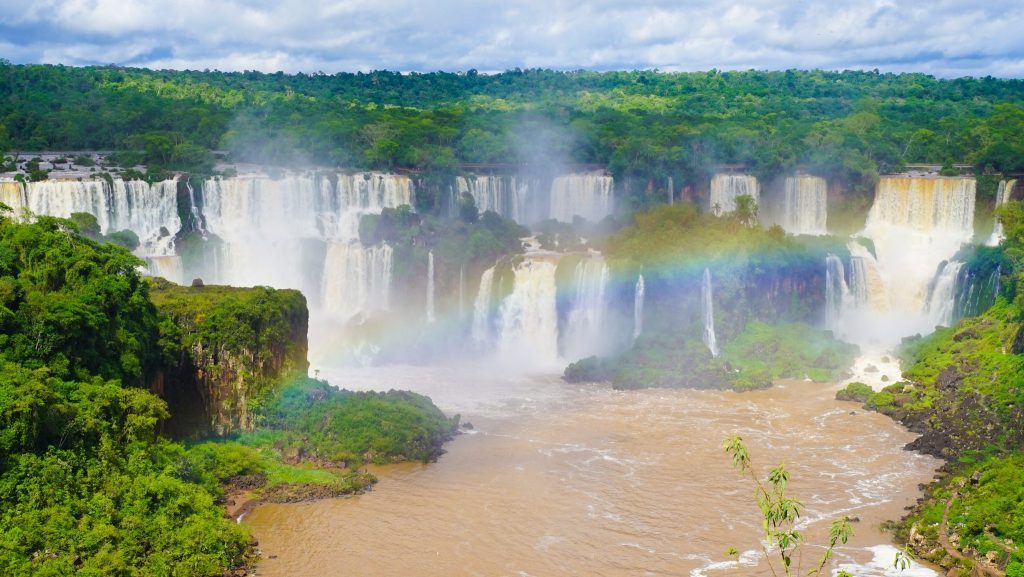
Recife and Olinda are sister cities on Brazil’s northeast coast that stand within sight of each other. Both started life as colonial cities under Portuguese rule, exploiting the vast richness of the New World, but over the centuries Recife has pulled ahead while Olinda has kept its small-town charm. The juxtaposition of both is tantalizing, and ensuring visiting them together is one of the top things to do Brazil.
Recife, the capital of Pernambuco state, has a booming population and everything from charming canals and vividly painted colonial buildings to glistening skyscrapers, palm-fringed beaches, and exuberant nightlife. An energetic and inspiring city, Recife also has plenty of entertainment and cultural attractions, more than a dash of grit and growing traffic problems. A true metropolis – warts and all.
In contrast, Olinda – just a short bus trip to the north – has very much maintained its colonial charm and clings to a slower pace of life. Position on a hillside overlooking the Atlantic Ocean, this UNESCO World Heritage site is an artsy counterpart to Recife with galleries, workshops, baroque churches, convents, monasteries, and wonderfully preserved houses and manors.
It is rare in the world to find two destinations that contrast and complement each other so completely. On their own, each would be worth a visit – but together, they become one of the absolute top highlights of Brazil.
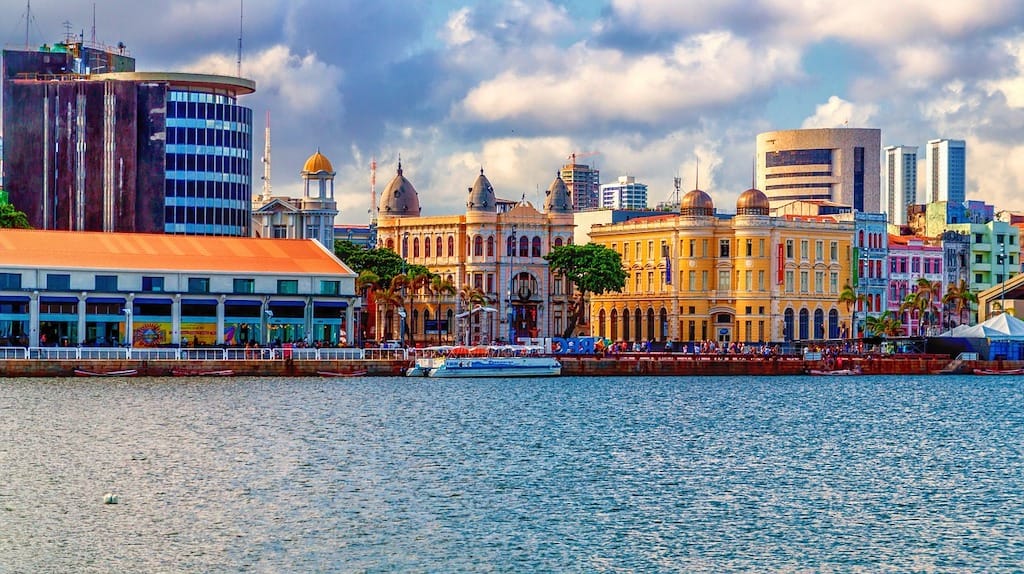
A must-visit destination for anyone fascinated by the natural landscape, this 1550 square kilometer national park is a spectacular area filled with dunes, lagoons, and beaches. Its undulating dunes give the park its name – ‘Lençóis’ means ‘bedsheets’ and these expanses really do look like sheets draped across the land.
The rains between May and September get filtered by the sand to create incredibly clear blue lakes between the hills of sand. You can choose whether you navigate the area on foot, on horseback or in a car; whatever you do, you won’t regret making the effort to come here. It’s got an almost otherworldly quality, making a dramatic impact.
It’s easy to see why it is called one of the most beautiful places in Brazil – and people make the considerable effort to get here.
The most convenient way to explore is to stay at Barreirinhas on the river although if you don’t mind heading somewhere more remote, Santo Amaro and Atins are more peaceful bases.
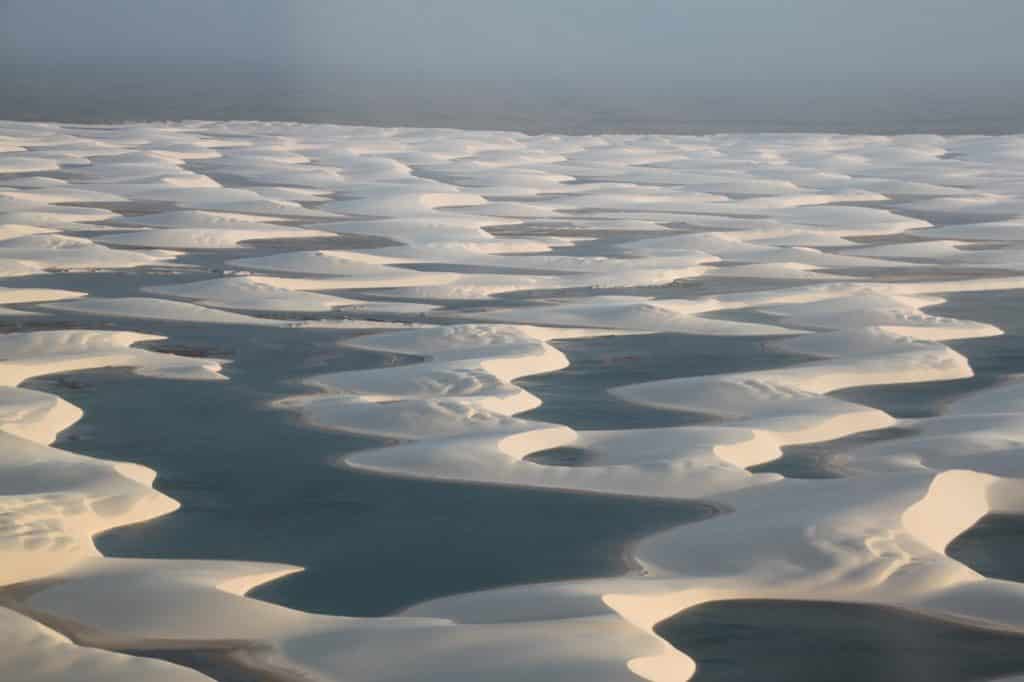
An expansive national park in eastern Brazil, Chapada Diamantina attracts adventurous tourists looking for nature, hiking, colonial wonders, and off-the-beaten-track experiences. And boy, do they find it here.
An almost untouched wonderland of cascading waterfalls, intrepid hiking, and panoramic views – the entire park sits atop an otherworldly 41,751 square kilometers (16,120 sq. mi) plateau bounded by cliffs in central Bahia.
The most famous attraction is the Fumaça Waterfall, one of the tallest waterfalls in Brazil, which at 340 m tall evaporates in a mist before even reaching the ground. Another famous highlight is the cauldron-like Devil’s Pool, with its deep black water and sinister history, or the enormous sandstone-and-quartz Lapão Cave.
Parque Nacional da Chapada Diamantina offers everything from day hikes to multi-day journeys. There are plenty of trained local guides happy to help you organize your expeditions once you arrive. The old colonial mining towns of Lençois and Mucugê are popular bases for exploring the park and offer cobblestone streets, outdoor cafes and a cute range of pousadas (a boutique inn that provides a more intimate experience than your traditional hotel).

If you’re tired of the mega-cities yet still want to experience town life in Brazil, Ouro Preto is the place to go. It’s one of several colonial towns in the state of Minas Gerais that date back to the 18th-century gold rush and by far the most beautiful.
It’s not just historically important for the gold mining but also for being the setting for the country’s first independence movement. That is probably why they made if a UNESCO World Heritage Site.
If you have traveled to places like Lisbon, you’ll really be able to see the influence of Portugal on Ouro Preto. In fact, Ouro Preto actually has some of the best-preserved Portuguese colonial architecture, with few signs of modern urban development—unlike Macau.
Sure it might not be that easy to get to, but the best places never are and you will be justly rewarded with a fairytale town like no others. It’s pure magic!
There’s so much joy here in getting lost in the narrow, cobbled, steep streets (not to mention you’ll have thighs of steel by the time you’re done!) and the views once you get to a vantage point are incredible.
It’s also one of the more artistic things to do in Brazil with a range of art galleries and cultural centers showing off the mineiro art.
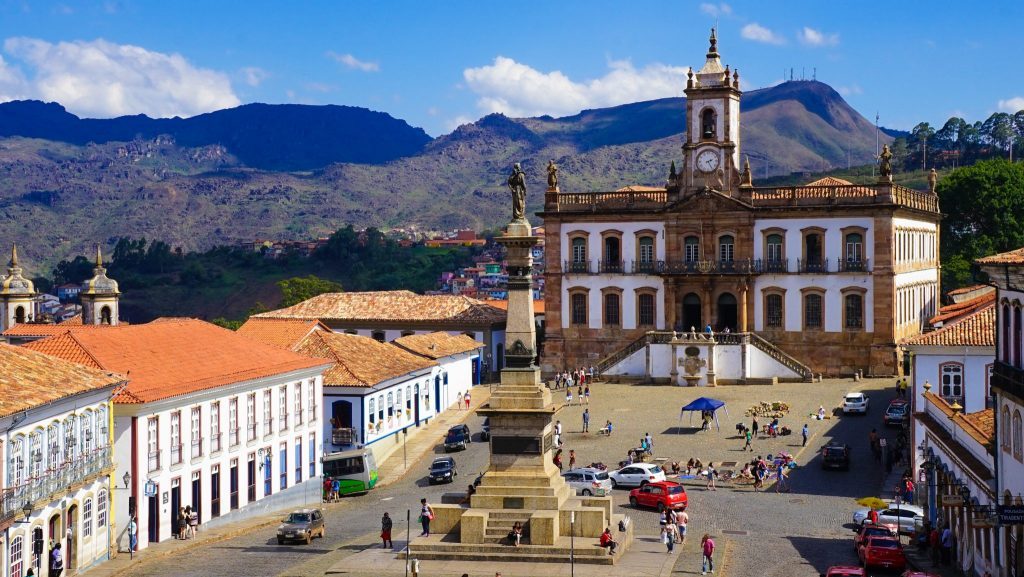
Do you dream of cocktails at sunset? White sand under your toes and the sound of waves crashing on the beach? A stress-free location away from chaos where no cars are allowed, prices are low, and your biggest worry will be ‘Açai or Coconut for lunch?’
Well then, do we have the island for you. Ilha Grande is a fabulous tropical island located only a few hours bus and boat trip away from Rio de Janeiro on Brazil’s stunning southeast coastline. Yes, this could be all yours: gorgeous blue skies, empty beaches, and that tempting ocean. Just imagine…
It’s a natural paradise with 99% of the island being covered in natural Atlantic Rainforest, only one small town and a series of paths crisscrossing the dense vegetation leading to deserted beaches.
Yes, it sounds like heaven— and that’s because it probably is.
Then there is the thriving (but laid-back) nightlife scene, incredible sunsets, fantastic snorkeling, funky monkeys, range of affordable accommodation islands, and abundance of caipirinhas. Most people who travel here end up extending their stay, but it’s hard to know beforehand if you will like it, and how long you will need, so we have put together a more comprehensive guide to things to do in Ilha Grande to help you fall in love with this magnificent place.
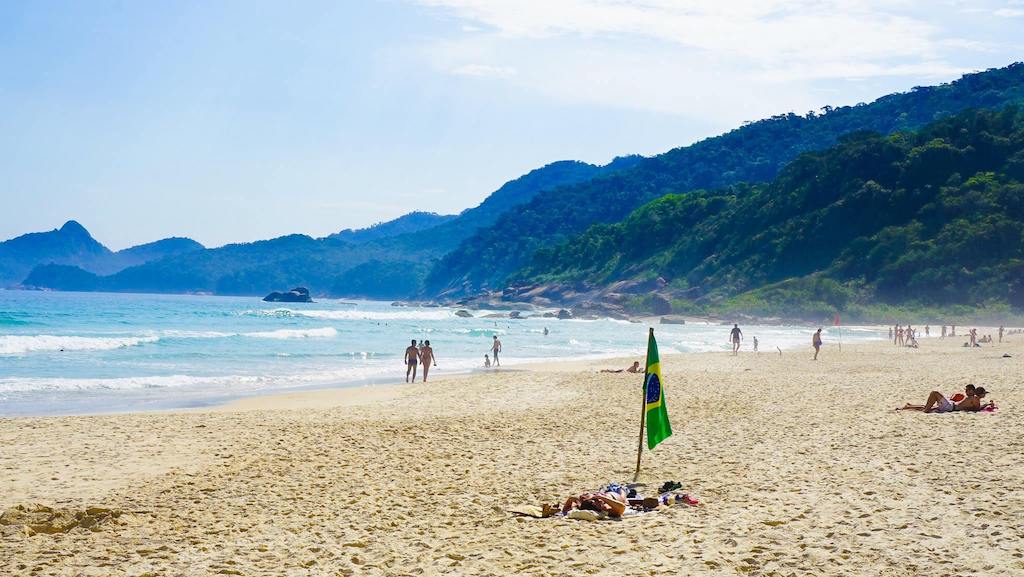
From secluded natural beauty to wild and wonderful festivities with a cacophony of noise and color. An annual festival held in February in the run-up to Lent, this is a time where Brazilan cities let loose with parades, music, and dancing.
A lot of dancing.
While the Rio Carnaval is the most famous, you can go to any city in Brazil at this time and experience the best party you’ve ever been to. The entire county celebrates Carnaval and unifies for almost a week of non-stop partying.
In the Southeast Region you’ll hear a lot more samba; in the Northeast, more frevo and maracutu. Whatever the music and wherever you are, shine your sequins and get ready for spectacle galore!
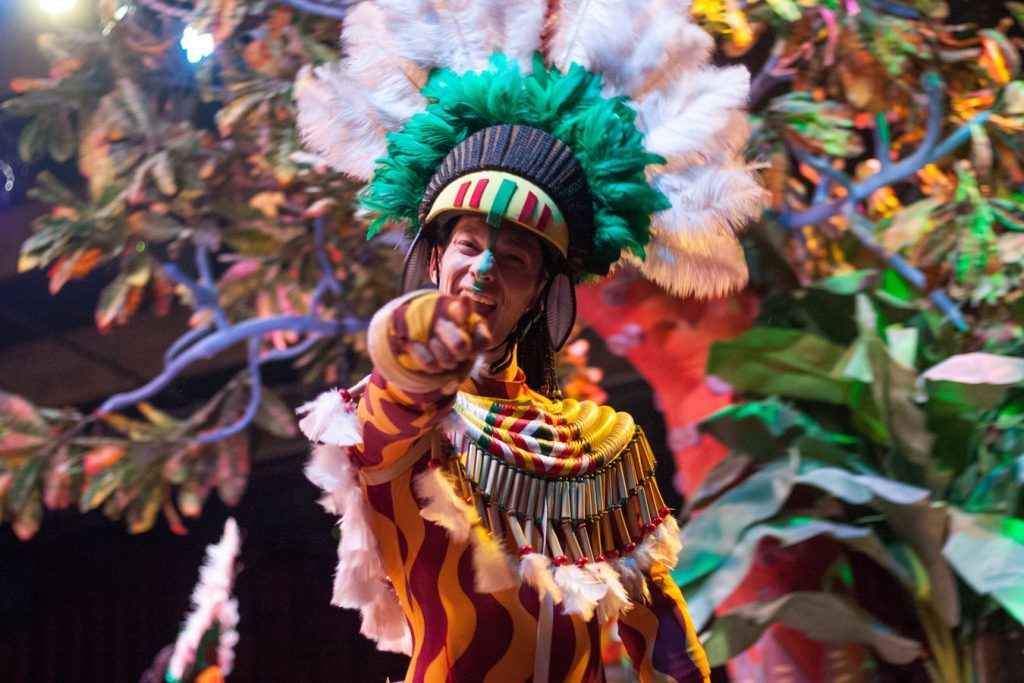
Freshwater snorkeling in heavenly Bonito one of the best-kept secrets in Brazil, though its popularity is growing.
Bonito is an eco-tourism hub in Mato Grosso do Sul state in Southern Brazil. The encompassing area has garnered a reputation for its crystal-clear rivers, huge, stalactite-covered cavern, and a bounty of colorful fish.
Located on the edge of the great Amazon basin, Bonito is a mirror into the underworld – similar to the great cenotes of Tulum and Cuba . While unassuming on the surface, there is a reason by Bonito is named after the Portuguese for “beautiful.”
While snorkeling in the magical waterways that end in shallow (and warm) pools as clear as glass is the main highlight, Bonito is also the jumping-off point for expeditions into the Pantanal region, filled with jaguars, boa constrictors, and colorful birds. Then there are the river-beaches on clear water lakes, zip-lining adventures, paddle boarding, scuba diving, and fantasy waterfalls.
An aquarium come to life; Bonito is a jungle-laden paradise with just enough eco-tourism operators to make life easy— yet not enough to destroy what makes this spot so enchanting.

The capital of southern Brazil’s Santa Catarina state, Florianópolis, is the place to go for beach resorts, surfing, boating, and a heavy German influence.
Most of the city lies on the spectacular 54-kilometer-long Santa Catarina Island and connected to a mainland commercial area via the famous Pedro Ivo Campos Bridge. The frontier between Portuguese and Spanish empires, the region was filled with German-speaking immigrants in the 1820s to act as a buffer – and has had a lasting legacy.
These immigrants kept their small family-owned farming practices, similar to North America at the time, yet vastly different from the mega-plantation culture of most of Brazil. This resulted in Florianópolis having a healthier legacy of equality and egalitarian policies than the rest of the country — a trend that continues today. Not to mention a wild Oktoberfest festival, fascinating history, and a flourishing cultural scene.
For tourists, there is sun, sand, and surf aplenty, with beach hopping being the most popular attraction. The seafood and beer are both expectedly standout, as is the sophisticated city vibes. With over a hundred beaches, all encircled by picturesque hills covered with lush Atlantic Forest vegetation – it is impossible not to love this unique place in Brazil.
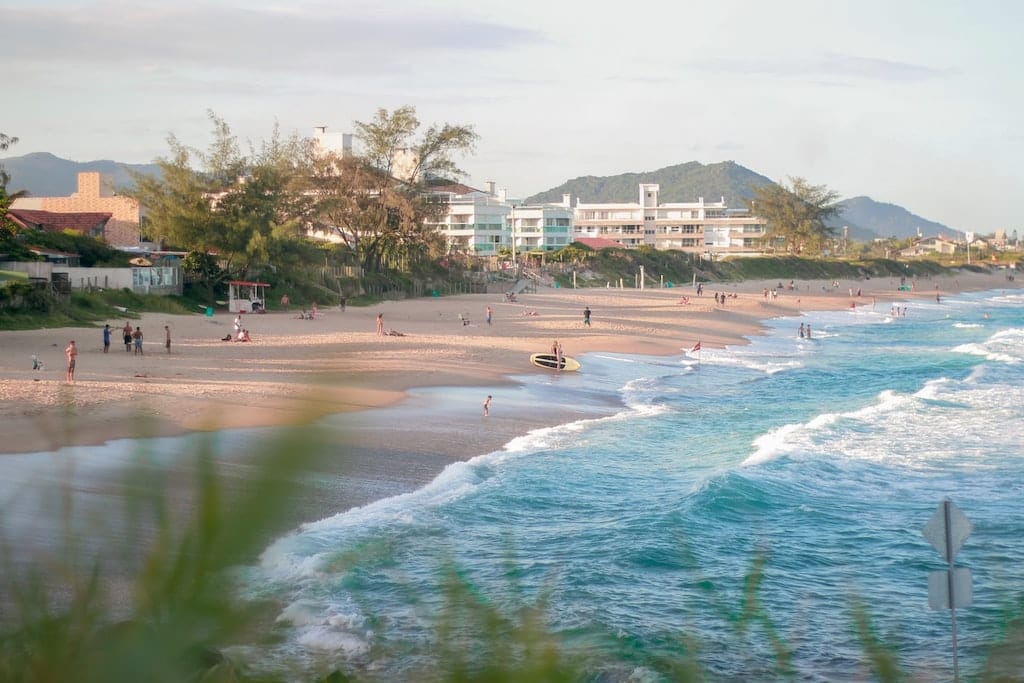
What Sao Paulo lacks in Rio-style beauty and landscape, it more than makes up for in energy and pride. Ask any resident and they’ll tell you at length how they’ll never live anywhere else – so it’s definitely somewhere that travelers should check out. Traffic galore there may be but there’s plenty to experience in this bustling cosmopolitan city.
It’s the art center of Brazil so, as might be expected, there are a wealth of museums, galleries and cultural centers. Not to mention all the street art.
Head downtown for the historic area and many of the main attractions; head to the other areas for more of an insight into the daily life of the Paulistanos. In the evenings, aside from a great nightlife, there is always something happening, whether it’s theatre, musical performance and international events.
We love heading to Avenida Paulista on a Sunday to join in the masses of people walking, cycling and rollerblading along the temporarily pedestrianized street. The city is also home to a wide range of culinary delights and it’s definitely one of the top places to go in Brazil for foodies.
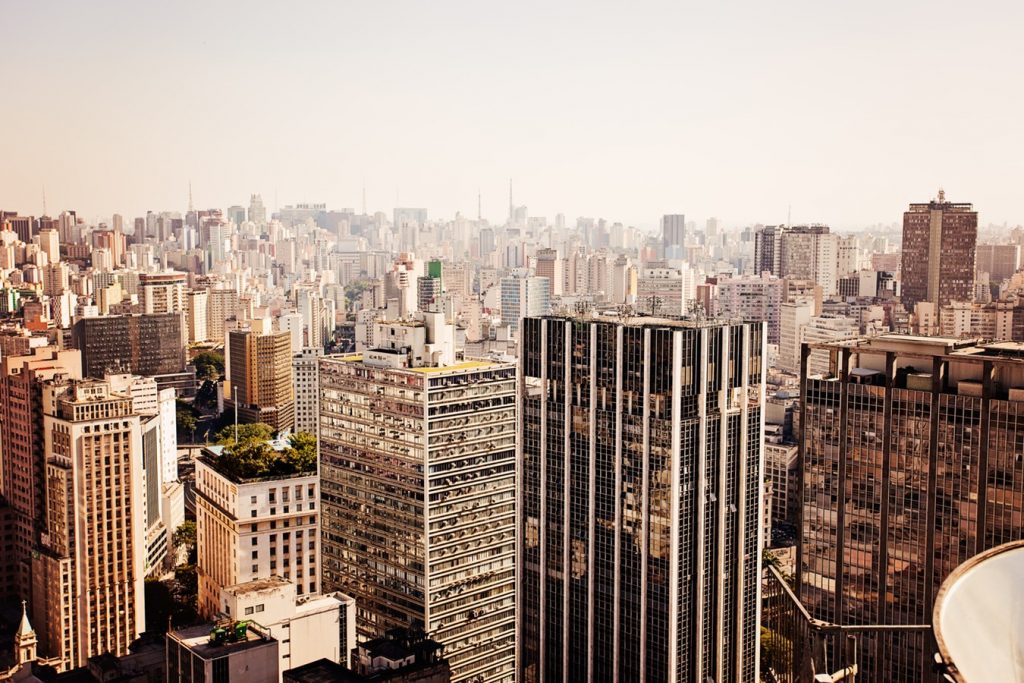
Another contender for the most beautiful town in Brazil, Tiradentes in the Brazilian state of Minas Gerais, is an unspoiled case of Portuguese colonial architecture. It is so well preserved and so appealing, you would at times think you have mistakenly wandered into a movie set – and will catch yourself thinking,’ how can a place be so perfect.’
Gorgeous homes set along cobblestone roads enveloped by green mountains and a truly majestic church: Tiradentes is the kind of place dreams are made of. Except it is real. When gold became scarce, this historic mining town was largely forgotten and fell into decay. Crucially, this meant it wasn’t modified or ravaged by growth and modernity. When tourism began to trickle back here in the late 1970s, intrepid guests were rewarded with exceptionally preserved Baroque structures thanks to the years of isolation.
Beyond the obvious visual appeal, there is a booming restaurant scene, lush forest hikes, and some wonderfully insightful museums. The charming São José Fountain should not be missed, along with the vintage steam train that runs between Tiradentes and the magnificent Serra São José grouping of quartzite blocks.

If you’re looking for things to do in Brazil that give you more of a perspective on the country, then Brasilia is one of those. Established as the capital city in 1960, it was a utopian vision of organized urban design in response to the perceived chaos of Rio and Sao Paulo.
It was designed in the shape of a crucifix but is also often compared to an airplane, with Eixo Monumental forming the central body with the star attractions laid out along it and two wings making up the residential and commercial sectors.
It’s a spread-out city with lots of spaghetti junctions so you can’t walk around it the same way you would other cities, but there’s still plenty to discover.
Head up to the viewing platform of the Television Tower to appreciate the city plan or stroll past the government buildings on the Esplanade of the Ministries. Go bar hopping, starting at old favorite Beirute, or enjoy culinary experiences in some of Brasilia’s ever-increasing contemporary restaurants.
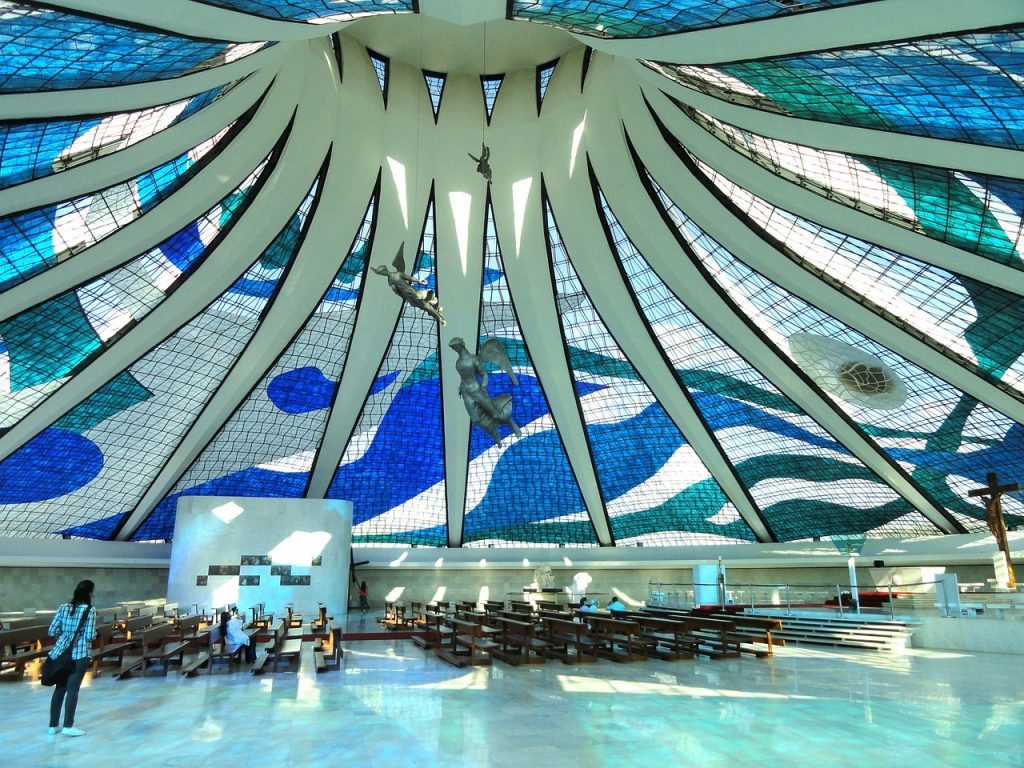
A small town popular with backpackers, Paraty is flanked by the jaw-dropping mountains on Brazil’s Costa Verde and supremely positioned between Rio de Janeiro and São Paulo.
The perfect place to break up a trip, Paraty has a lot going for it with a rich Portuguese colonial center including cobbled streets and many excellent 17th- and 18th-century buildings due to its history as an important port during the Brazilian Gold Rush.
Today more of a popular artist refuge and tourist hotspot than an export hub, Paraty was recently recognized by UNESCO as a World Heritage Site along with the nearby island of Ilha Grande.
Paraty is a welcome escape from the city madness, with tropical hiking, horseback riding, boat cruising, and snorkeling. Or you can just spend hours exploring the colonial-era streets, darting into small cafes, whitewashed churches, and modern galleries. Paraty has long been a beloved getaway for residents of Rio, but now the cosmopolitan vibes have been taken a step further with the influx of international vacationers.
In August, Paraty host the annual Festival of Cachaça, and in May, there is the Paraty Bourbon Jazz Festival, which includes many of the world’s top artists. Add to this the 65 islands and 300 beaches nearby, a fun cook school, a slew of bars and luxe lodgings, and it is safe to say Paraty will firmly keep its status as one of the best places to visit in Brazil for the foreseeable future.
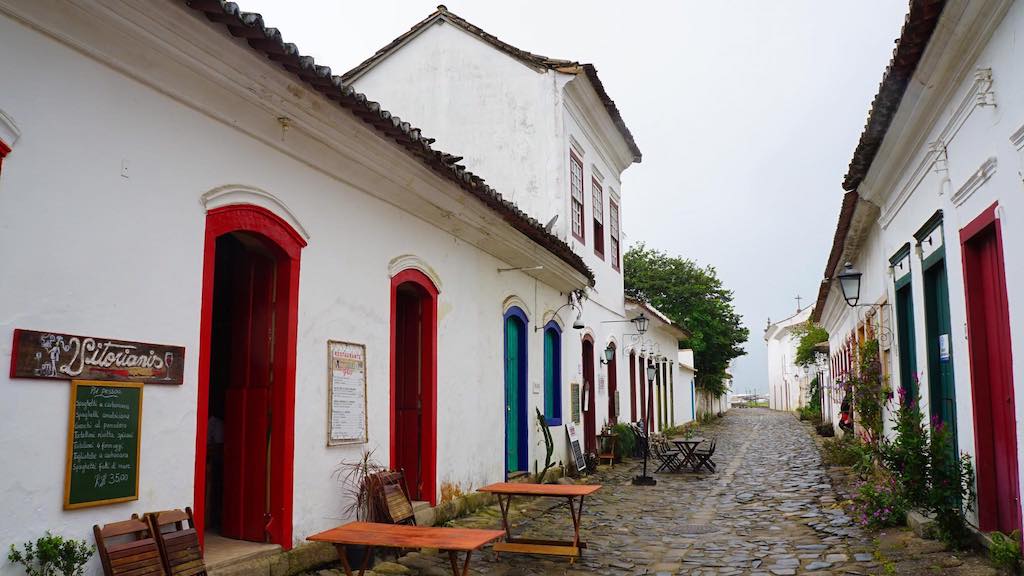
The Amazon has captured the imagination of hundreds of thousands of people throughout the ages and for good reason. Its incomparable ecosystem and diverse flora and fauna are fascinating not just to biologists, but to travelers, which is why going on an Amazon Rainforest River Tour on the Rio Negro is so popular!
Cruising down the Amazon River taking in the quiet majesty of the area is one of the things to do in Brazil that just can’t be missed.
Manaus is the largest city nearby and definitely the most convenient location you can explore from. Here you’ll find a wide range of accommodation options and tour operators to fit every budget. And prices are a lot lower here than what you can find in the Ecuadorian Amazon or Peruvian Amazon if that helps…
You can go on organized hikes into the jungle, canoe trips or even go fishing. All of these are unforgettable experiences to help you appreciate the power of the river and the life it generates around it.

São Miguel das Missões in Rio Grande do Sul state is a monumental Spanish Jesuit mission ruins from the 17th century.
It was built because the Jesuits at the time of colonization were on a mission of evangelizing the Indigenous people of Bacia do Rio Prata (a territory that today is spread across Argentina, Paraguay, and Brazil), to preserve their culture and language and protect them from Portuguese slave traders. Eighteen such villages were built as places where converted Indigenous people lived, to adapt their lifestyle to Christianity.
The Jesuits were eventually expelled under the Treaty of Madrid when the area was transferred from Spain to Portugal. The Guaraní tribes who lived here refused to comply with the order to relocate from their homelands, and thus a joint Portuguese-Spanish army attacked and defeated the Guaraní. The São Miguel das Missões was left in ruins, the Guaraní were killed and enslaved, and this great social experiment ended.
The ruins today have a ‘paradise lost’ feel to them, with an incredible museum and many gorgeous viewpoints to appreciate the scale of the undertaking.
In 1984 the Mission was listed as World Heritage under the Jesuit Missions of the Guaranis listing, along with three others in Argentina including the equally impressive San Ignacio Mini.
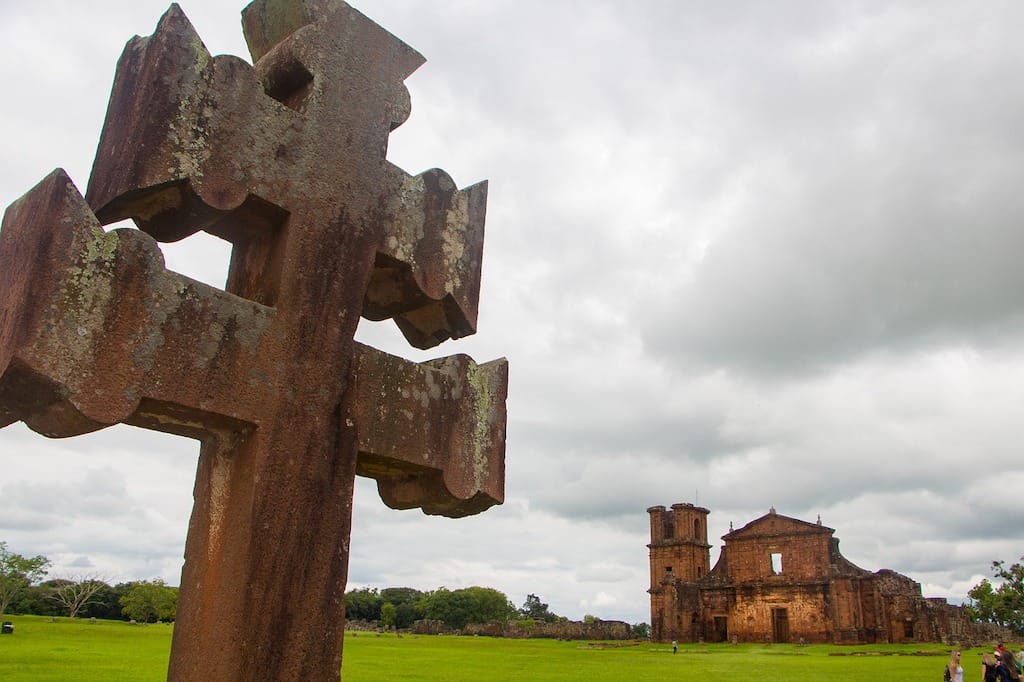
Hidden in the murky depths of the famous Amazon jungle, Alter do Chao is a quirky and offbeat beach destination that boasts astonishing white sandy stretches that will convince you you’ve somehow traveled to Brazil’s famous north coast.
Located around 33 kilometers west of the already isolated Santarém, Alter do Chao is most well-known for its Ilha do Amor (Island of Love), an arresting island ringed by a white-sand beach. But there is much more to this place than just beaches; there is a three-fingered lagoon to investigate – either by canoe or stand-up paddleboard – and boat tours into the surrounding Amazon.
You should not miss a trip to Ponta do Cururu at sunset where large numbers of pink and grey dolphins gather for an evening meal. An ethereal experience — to say the least.
Positioned on a major tributary of the Amazon river between Belem and Manaus, the isolation of Alter do Chão’s and retreat from the modern world is the appeal here – and the main reason why there are so few visitors. A lack of roads in the region means the main way to get here is by flying to Santarém and then catching the bus. You’ll be duly rewarded for your efforts.
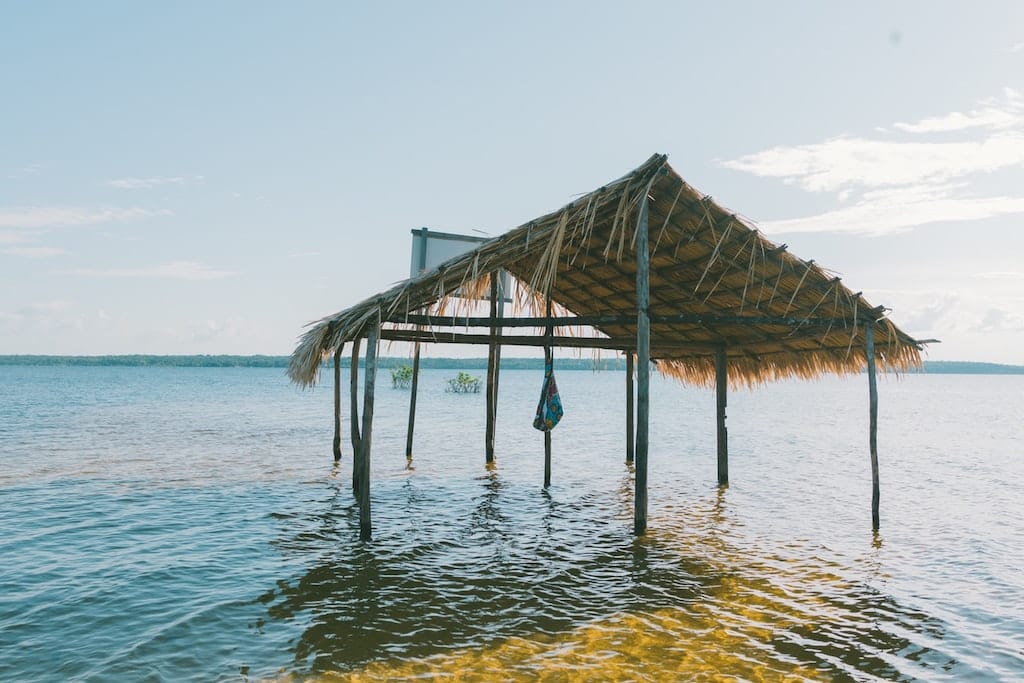
While not on most tourist itinerary for Brazil, landlocked Belo Horizonte is the capital city of Brazil’s Minas Gerais and the countries sixth-largest city.
A lively, industrial and gritty city – architectural lovers should not miss this city and the Pampulha Lake Architectural Complex, home to an assortment of incredible designs by Brazil’s modernist architect Oscar Niemeyer. There is the wavy-topped Church of St. Francis of Assisi, a casino, a ballroom, the Golf Yacht Club, and various other edifices all in collaboration with famed landscape architect Roberto Burle Marx and give a hint to what he would later build in Brasília.
The artificial lake itself is also stunning and has capybara living around its edge.
Back in the concrete jungle, Belo Horizonte is a sprawling mess – but has plenty of charm if you are willing to seek it out. The Instituto de Arte Contemporânea Inhotim is the world’s largest open-air contemporary art museum with 87 acres of beautiful gardens— then there is a vibrant central market and a revitalizing museum scene.
Ouro Preto is also a short distance away, making Belo Horizonte a convenient stopover point.
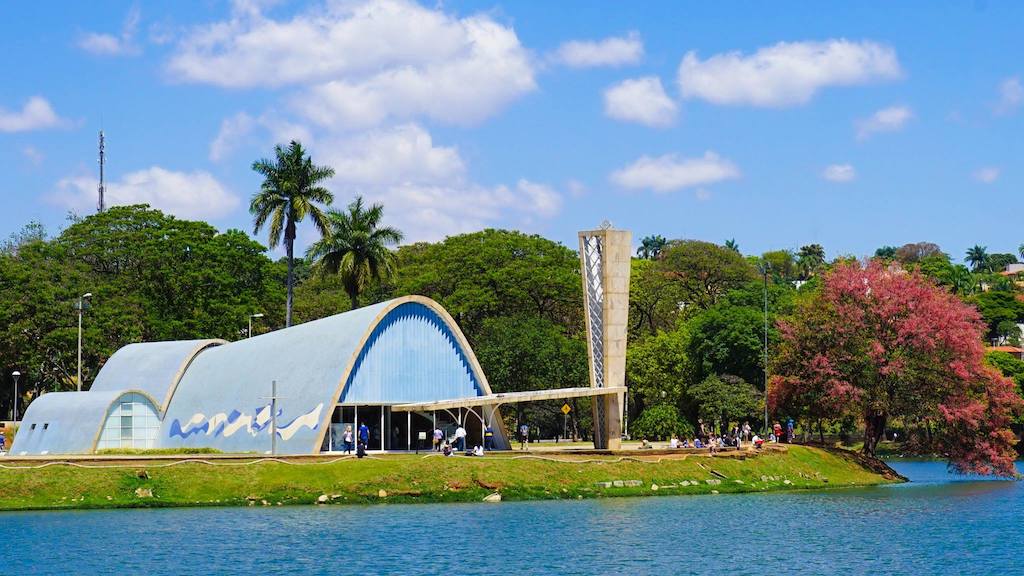
Another of the most incredible natural sites in Brazil, the Pantanal is virtually unpopulated. It’s an enormous wetland covering approximately 210,000 square kilometers and hosting an amazing variety of animals.
Definitely, one for the nature lovers, the wildlife here is unmissable if you like to see creatures in their natural habit. Another UNESCO World Heritage Site, the Pantanal Conservation Area actually consists of a group of four protected areas with a total area of 187,818 ha.
Positioned in western central Brazil at the south-west corner of the State of Mato Grosso, the protected site stewards 1.3% of Brazil’s Pantanal region, one of the world’s largest freshwater wetland ecosystems.
The headwaters of the region’s two primary river systems, the Cuiabá and the Paraguay rivers, are found here, and the wealth and diversity of its vegetation and animal life are magnificent.
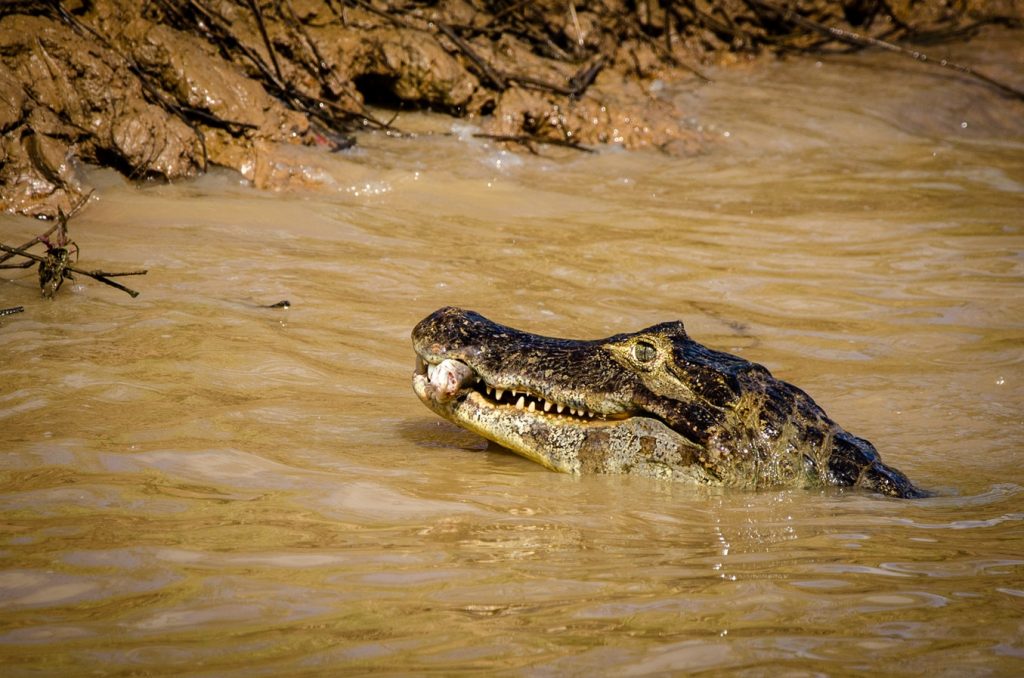
Belém, the largest city of the state of Pará in the country’s north, is the eastern gateway to the Amazon River.
2.5 million people reside in this tropical metropolis, which has benefited throughout its history from a position approximately 100 km upriver from the Atlantic Ocean.
While many might flit through this transit hub in a rush to more exotic adventures, you should spend a few days exploring the dynamic city filled with mango trees, vibrant markets, museums, and a growing restaurant scene. For a while during the rubber boom in the late 19th century Belem was known as the ‘tropical Paris; with electricity, grand monuments, streetcars, and a sophisticated European vibe – though today Belem is very much forging its own path.
The standout highlight has to be the colorful riverfront district Cidade Velha (old town) filled with Portuguese-colonial architecture similar to Lagos or Porto – with plenty of ornate churches, picturesque azulejo-tile houses, and an extensive 17th-century fort.
Another ‘must-see spot’ is the vast Ver-o-Peso open-air market located on Guajará bay’s docks and hawking exotic Amazonian fish, unknown fruit, and indigenous handicrafts. It is considered one of the largest markets in Latin America, and you can spend at least a few hours perusing the items on sale, interspersed with breaks for a gratifying bowl of pulped açai berries at one of the stands and a cold bottle of Tijuca beer to top it all off.
In the evening – try to catch an opera or performance at the Theatro da Paz, which would look right at home in Vienna or Buenos Aires .

We love Salvador, Brazil’s third-largest city, for its lively mix of cultures and styles, its 17 th and 18th-century architecture, and its endless vibrancy. This is the epicenter of Brazil’s Afro-Brazilian community and where the best music and culture can be found.
Of all the things to do in Brazil, make Salvador one of them. During the days, explore streets so picturesque that you feel like you have stepped back in time, especially in the center (Pelourinho); at night, take a ride on the 85 meters Art Deco Lacerda Elevator on your way to a delicious meal in one of the many restaurants. Architecturally blessed and culturally diverse, Salvador was the first capital city of Brazil and has it all.
In between times, chill on the beach. This is a city that likes to live, so enjoy being part of it!
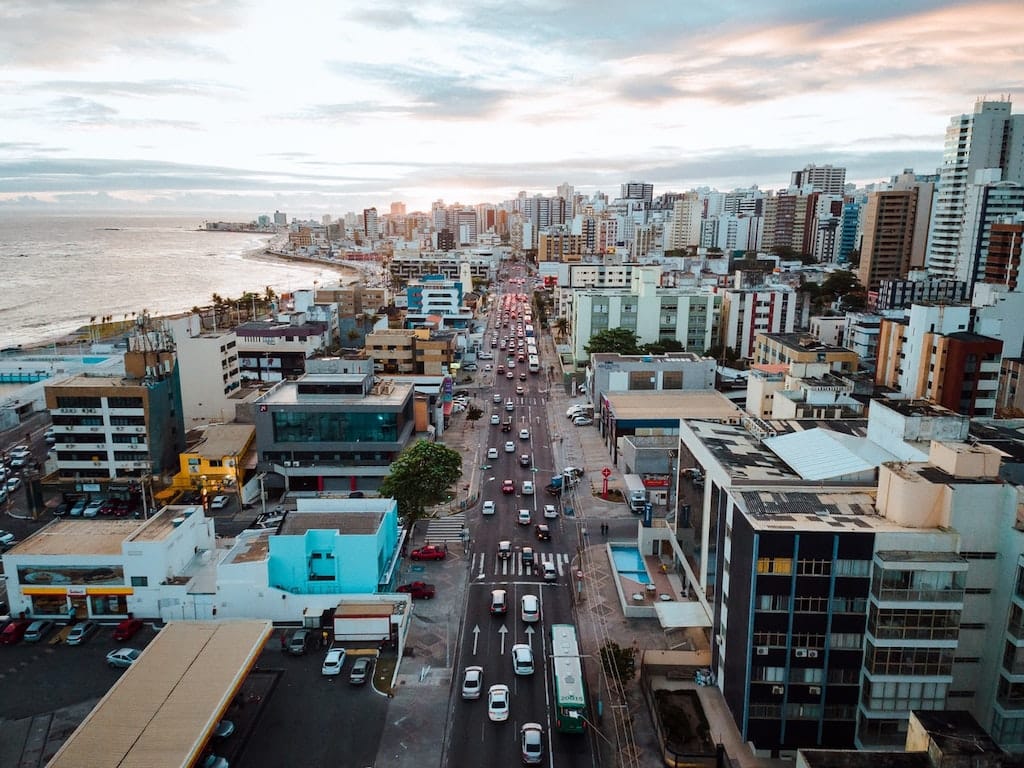
An improbable eco-tourism destination, the remote Chapada dos Veadeiros National Park in the central Brazilian state of Goiás is 650 square kilometers of big sky country. There are rolling hills, lush flora and fauna, dramatic canyons, and plenty of hiking trails to keep you occupied for at least a few days.
Rivers crisscross the park (and surrounding private land), creating a lattice of canyons, cliffs, and rivers – usually with a waterfall somewhere to allow for a refreshing dip at the end of the hike. There is an abundance of orchids, and iconic wildlife species like jaguars, armadillos, jaguars, and toucans.
Guides are no longer required to hike here, but if you want to learn about the biodiversity here, they are recommended. The Travessia das Sete Quedas hike, in particular, is simply magical, a 23-kilometer trail through a spectacular canyon and crossing the Rio Preto river twice. You can do it all in one day, or overnight in a campsite with seven small waterfalls nearby.
Chapada dos Veadeiros National Park access is from the nearby town of São Jorge, which connects to kooky Alto Paraíso de Goiás and the rest of the start.
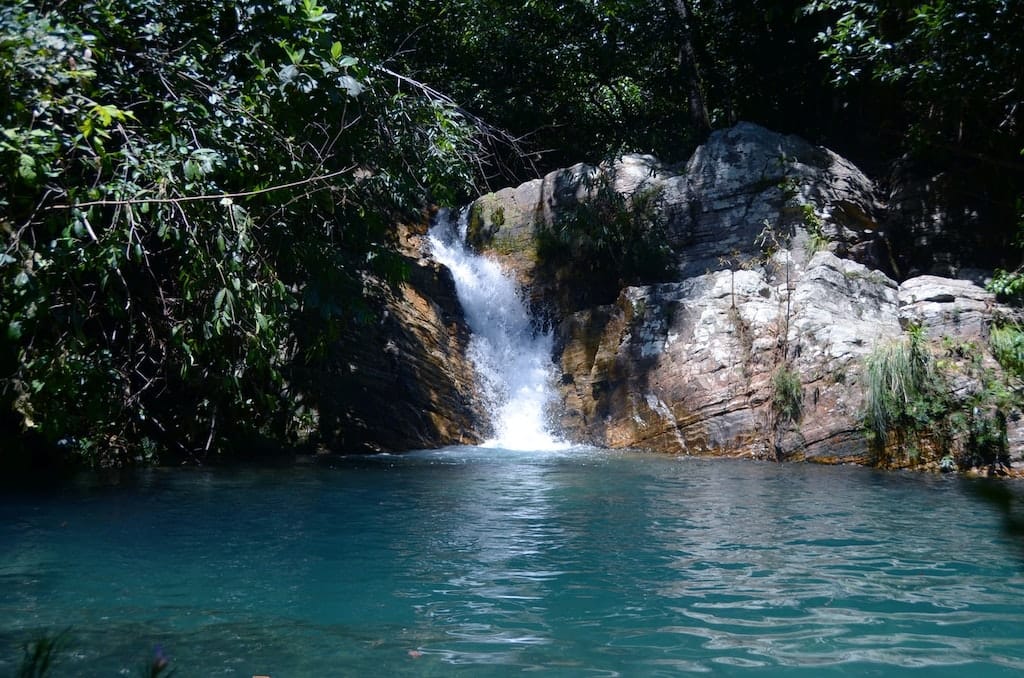
Who would have expected one of the top things to do in Brazil to be to visit wine country, but yes – the Vale dos Vinhedos Wine Region proves this marvelous country does have it all.
Located in the southern state of Rio Grande do Sul between the cities of Garibaldi, Bento Gonçalves, and Monte Belo do Sul, this area has a strong Italian influence. It also offers the unique properties required in terms of soil, climate, topography, and culture to create a desirable bottle of wine.
Vale dos Vinhedos covers 82 square kilometers (32 square miles) and is home to over 30 wineries and an influential national grape and wine research bureau. Miniature estates sit alongside larger wineries providing plenty of options for wine tours, with most allowing drop-in visitors.
Even for those who don’t like wine, the attractive area also houses a cornucopia of cheese factories, art workshops, craft houses, restaurants, and boutique accommodations. The work of the Italian immigrants over the last 150 years has culminated in Vale dos Vinhedos getting a reputation for outstanding vintages, particularly Cabernet Sauvignon and Merlot. It was even recently named one of the world’s ten best wine travel destinations recently, joining the likes of Queenstown in New Zealand or Champagne in France.
While not yet swamped with international tourists, the Vale dos Vinhedos is exceptionally popular with locals and has a well-established collection of rural inns and tourist routes. You’ll be rubbing your eyes and thinking you have been transported to Italy or Northern California.

One hundred eighty kilometers from Rio de Janeiro is Armação dos Búzios – or just Búzios for the devoted, a renowned seaside town where Rio’s elite flock each weekend.
An urbane Eden of greenery, clear waters and narrow cobblestone streets create an enduring appeal that has seen Búzios transform over the past 50 years from a small fishing village to Brazil’s St. Tropez. Located on a jutting peninsula, Búzios is a collection of three settlements and 17 beaches with oceanfront dining, an arresting harbor, and all the expected tourist amenities.
There is everything from hostels to high-end hotels and more options for relation, shopping, and nightlife then we could ever cover. It is hard to know where to start. And then there are the off-shore islands, ideal for diving, world-class gastronomy, world-class galleries, and boutique shopping.
But our favorite activity has to be people watching here. Buzios attracts the most fashionable people from not just Brazil but around the world. So, as you might imagine, one of the best things to do is simply choose a seat at a pavement cafe, order a Caipirinha, and watch the gorgeous people go by…
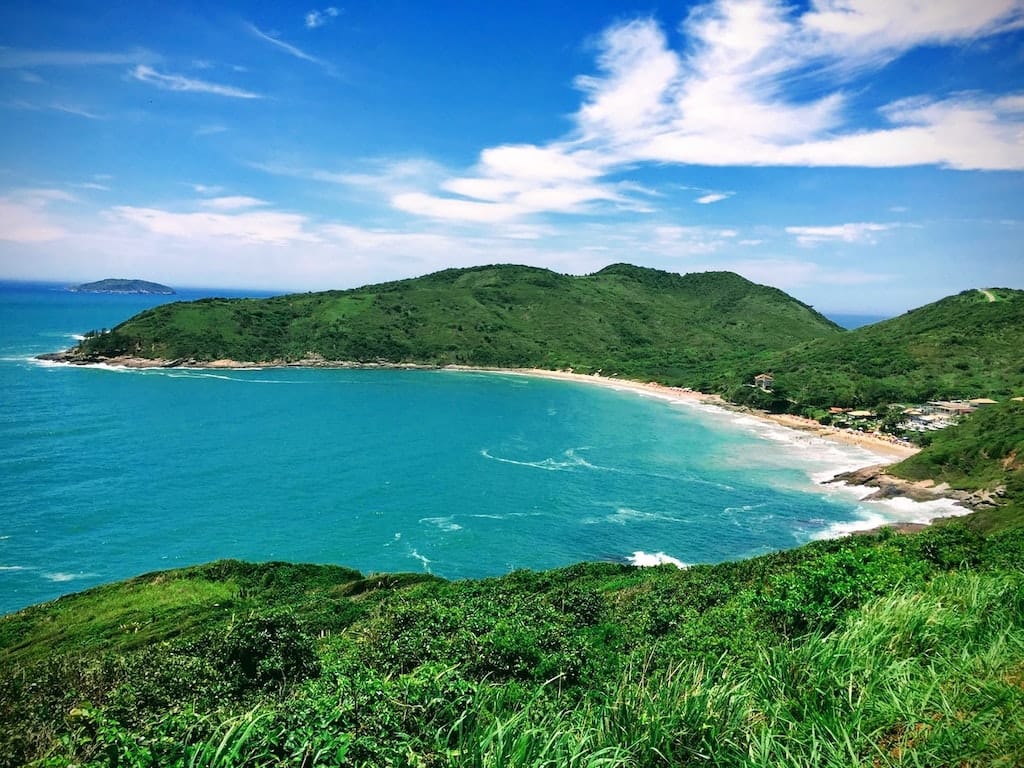

Touropia Travel
Discover the World
27 Top Tourist Attractions in Brazil
By Kaeylen McCrea · Last updated on May 4, 2024
Sprawling across half of South America, Brazil is the fifth largest country in the world. White-sand beaches, tropical islands, music-filled metropolises and charming colonial towns are dotting its 7,500 km (4,600 miles) long coastline.
Inland, Brazil consist of imposing waterfalls, wetlands filled with wildlife, and the untouched wilderness of the Amazon rainforest where several isolated tribes still live without any contact with the rest of the world.
Brazil, the largest country in Latin America, became a Portuguese colony in 1500, remaining under Portuguese rule for 300 years. Remnants of this heritage can be seen throughout historic colonial cities even today.
Besides these tourist attractions in Brazil, it also has gorgeous beaches, famed for their surfing waves and scenic beauty. Great beaches can be found in the Rio area, while others may be so isolated getting there is an adventure in itself. If you are planning a holiday to this exciting country, here are our recommendations for the best things to do in Brazil.
27. Porto de Galinhas
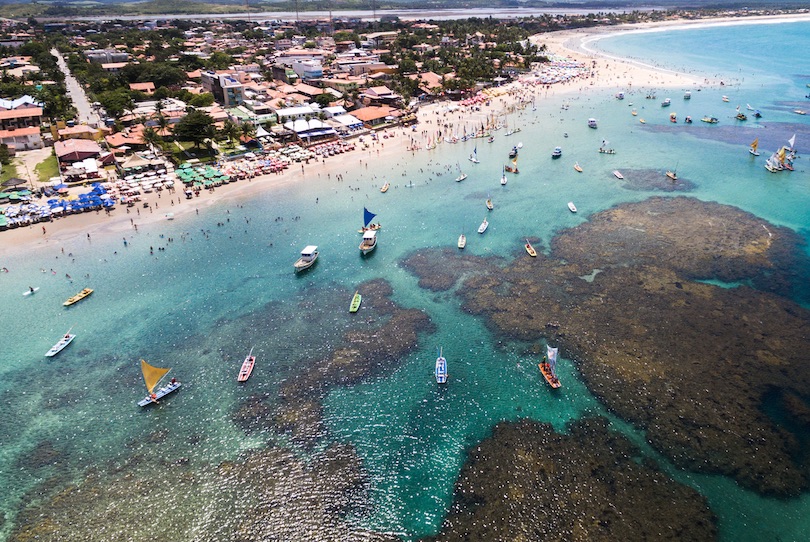
Porto de Galinhas, or “Port of Chickens,” on the south coast of Pernambuco in the district of Ipojuca, is a beach town home to some of the most famous beaches in Brazil.
A prominent tourist spot, Porto de Galinhas is breathtaking, with natural crystalline-clear pools, thriving reefs, and white-sugared beaches. Right by the town center, Porto de Galinhas Beach’s sands stretch on and on. The section closest to the town is sprinkled with restaurants and bars. Grab refreshing drinks and fill up on food before snorkeling in waters full of tropical fish and tanning in the sun.
The natural pools of Porto de Galinhas are one of the top attractions of Porto de Galinhas. Off the sand strip, these pools are established naturally by the coral reef full of vibrant-colored marine life.
26. Campos do Jordao
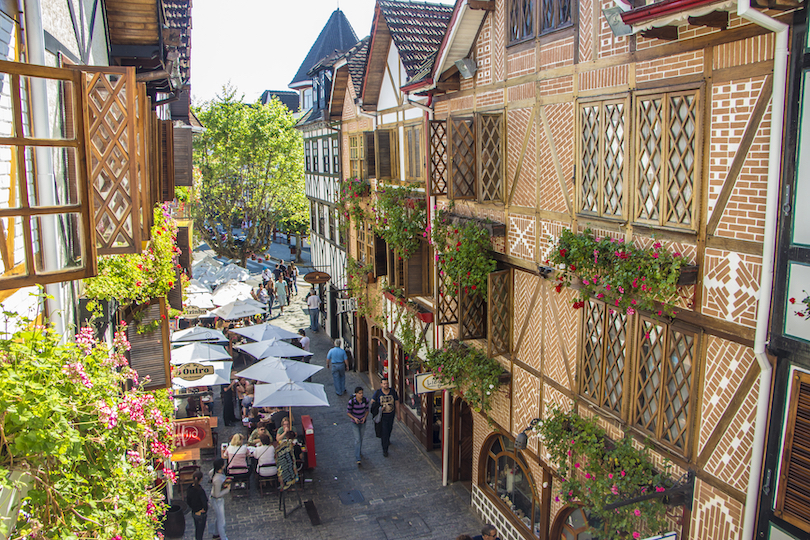
Also known as the Switzerland of Brazil, this town is the highest in the country, located more than 1,600 meters (5,300 feet) above sea level in the beautiful Mantiqueira Mountains. Because it sits at such a high elevation, this resort town offers visitors a refreshing escape from Brazil’s heat during the summer months.
Campos do Jordao is probably best known for its Winter Festival, a popular classical musical event held in July that draws musicians from around the world. This town is also a popular draw with active visitors, who can choose from a large variety of things to do, including horseback riding, jeep tours and cable car rides.
25. Lencois Maranhenses National Park
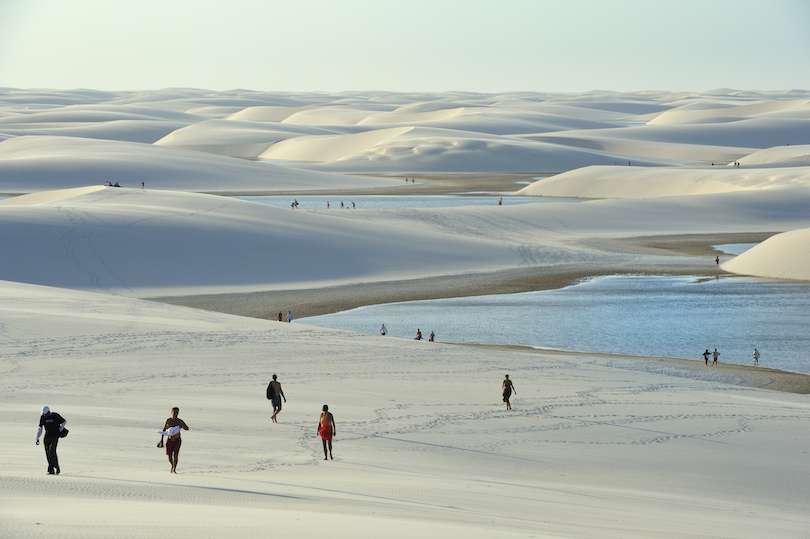
For most people, Brazil conjures up images of stunning beaches and verdant jungles — not sand dunes. But one of its most interesting national parks , Lencois Maranhenses, is home to massive dunes. But this is not the desert. During July, torrential rains actually create gorgeous clear lagoons that can reach depths of 3 meters (10 feet) in some areas.
Interestingly enough, even though these pools are temporary — disappearing during the dry season — there are fish in them. Swimming is allowed and is one of the most popular things to do in Brazil, but visitors should be prepared for warm waters. Temperatures in these pools can be as high as 30 °C (87 °F).
24. Florianopolis Beaches
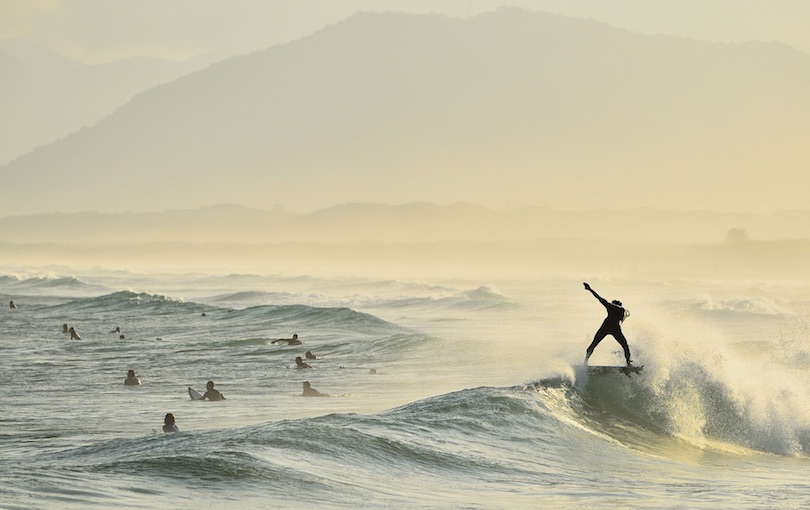
Also known as Floripa, the 42 beaches of Florianopolis are popular with surfers, partyers and sun worshipers. Arguably, its most popular beach is Joaquina, which boasts huge sand dunes and excellent waves. Though as of late, its neighbor Praia Mole has been stealing some of Joaquina’s thunder.
Travelers who like to hangout with the rich and famous should head to Jurere, which boasts huge homes and some of the best night clubs in the area. For those seeking a little solitude, Lagoinha do Leste is the beach they’ll want to visit. One caveat, this beach requires about a two-hour hike to reach it.
23. Praia de Pipa
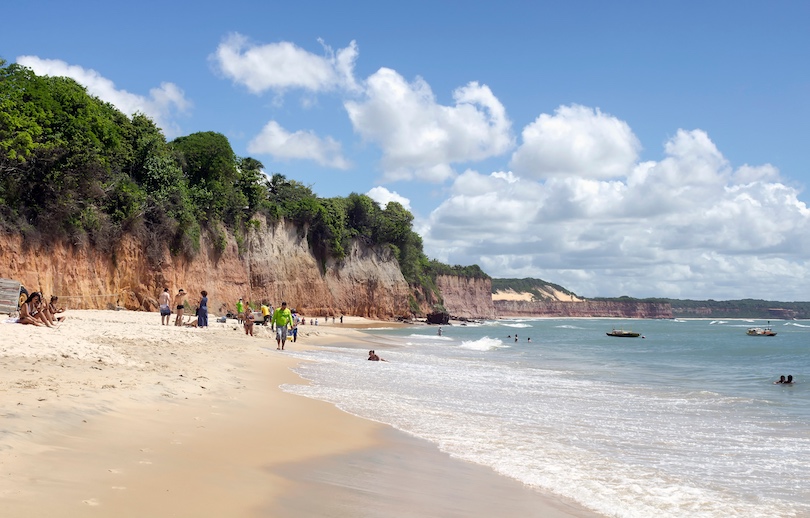
Blessed with postcard-worthy beaches, tall cliffs and clear waters, Praia de Pipa has become one of Brazil’s best-known beach destinations and is a favorite with both locals and tourists. The town is also known for its vibrant nightlife and offers visitors a slew of activities, including boating and surfing.
But as popular as it is, the town, itself, is limited in size as it is surrounded by Environmental Protected Areas. That means that visitors can still enjoy the natural beauty of this area and swim in waters that are teeming with dolphins and turtles.
22. Museu de Arte Contemporanea
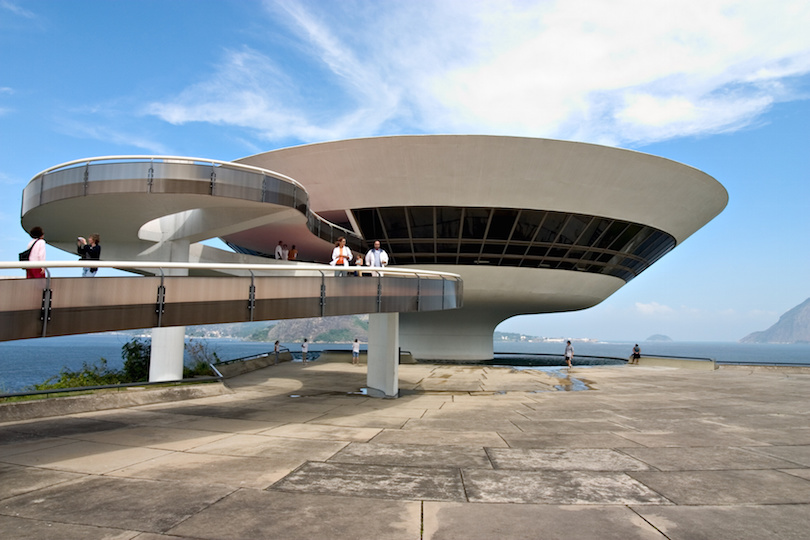
Museu de Arte Contemporânea de Niterói (MAC), or Niterói Contemporary Art Museum, is well-known for its peculiar architecture, similar to an alien spaceship, that draws in visitors from across the globe.
One of the featured landmarks of the city of Niterói, near Rio de Janeiro, the museum’s unique structure was designed by famous Brazilian modernist architect Oscar Niemeyer. The architect, Niemeyer, was one of the main leaders of the Brazilian modernist movement, with Museu de Arte Contemporânea de Niterói being one of his more well-known works.
The museum’s location features breathtaking viewpoints of Guanabara Bay, and inside the museum are panoramic views of the bay, Ripe de Janeiro, and Sugar Loaf Mountain. Visitors will also find a diverse array of contemporary art pieces on display to view.
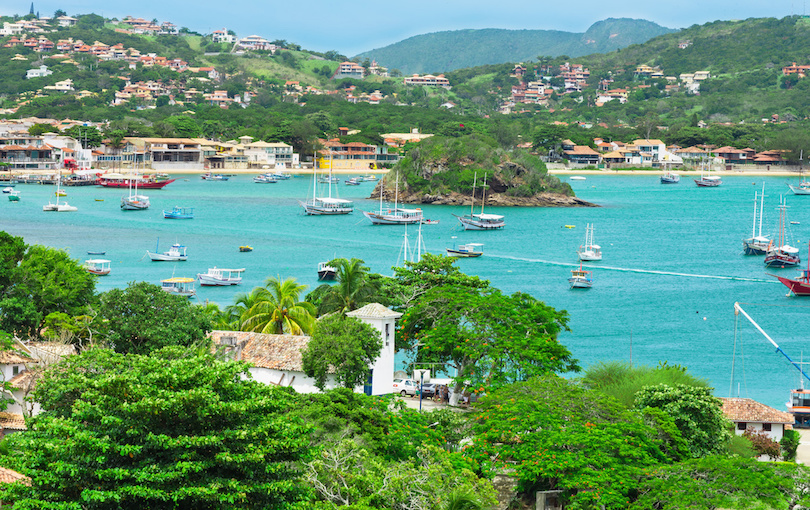
Buzios, or Armação dos Búzios, is a beach town well-loved by locals and tourists. The town’s warm and dry climate, beautiful beaches, and turquoise waters make for a perfect getaway destination.
Northeast of Rio de Janeiro, Buzios is home to many stunning beaches to pick and choose from. You can easily spend more than a few days taking in the appealing tropical weather of Buzios, lingering on the beaches, and soaking up the sun of Brazil’s Costa do Sol.
Within Rua das Pedras, the heart of Buzios, are cobblestone streets, boutique shops, restaurants, cafes, and trendy nightclubs popping with activity during the night. Walk down the Orla Bardot Boardwalk, connecting Rua das Pedras to Armacao Beach, for a romantic dinner stroll while peering at the famous statues designed by Christina Motta.
20. Aparados da Serra National Park
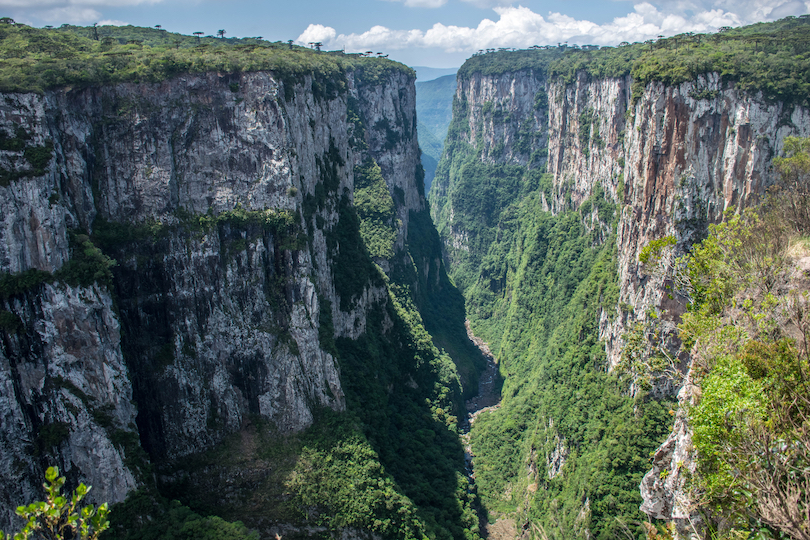
One of Brazil’s first national parks, Aparados da Serra was created to protect Itaimbezinho, one of the most impressive canyons in Brazil. Fringed with subtropical forest, the narrow canyon features sheer parallel escarpments with a depth of almost 720 meters (2360 feet).
Two waterfalls cascade into a stone plunge pool that spills over into the Rio do Boi, which winds its narrow way along the canyon bottom. A steep rocky path leads to river from the canyon rim, but it’s a tough, hair-raising walk that shouldn’t be undertaken lightly.
19. Cathedral of Brasilia
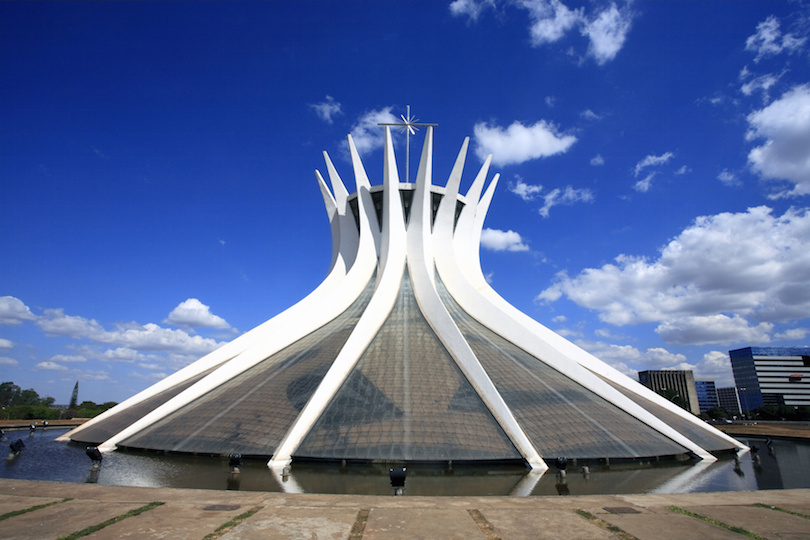
A Roman Catholic church in the capital of Brazil, the Cathedral of Brasilia, acts as the seat of the Archdiocese of Brasilia. Another enigmatic design by famous Brazilian architect Oscar Niemeyer, the cathedral was completed in 1970, showcasing a crown-like structure and a stunning stained glass ceiling.
At the entrance of the Cathedral of Brasilia are four impressive bronze sculptures. These sculptures stand nearly ten feet tall, representing the four Evangelists: Matthew, Mark, Luke, and John.
Within the cathedral’s interior are three angel sculptures that hang above the congregation, ranging from 7 to 14 feet tall. The altar within the Cathedral of Brasilia was donated by Pope Paul VI, and the four bells in the bell tower by Spain.
Touring the Cathedral of Brasilia is a popular activity to admire modern architecture and design with its undeniably remarkable appeal.
18. Pelourinho
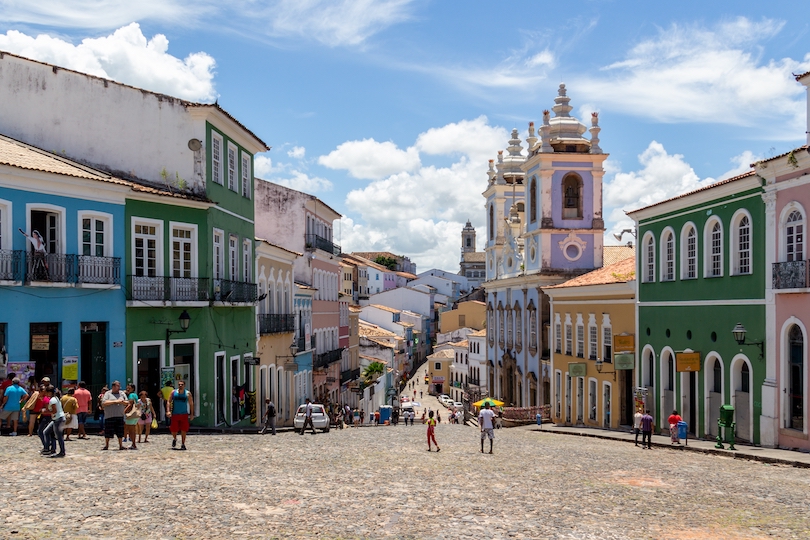
A historic neighborhood in western Salvador, Bahia, the Pelourinho acted as the city’s center during the colonial period. It operated as a slave market until slavery was outlawed in 1835.
Nowadays, Pelourinho is a prosperous hub spot full of culture, history, and opportunities to explore colonial architecture.
There are more than a few noteworthy tourist attractions in Pelourinho. First, visit Igreja de São Francisco, an early 18th-century church established in the High Baroque style. The interior is gilded with intricate artwork that inspires awe, along with the gold-covered ceilings.
Then, watch a live capoeira performance. Capoeira is an Afro-Brazilian martial art intertwining music, acrobatics, dance, and spirituality, performed with traditional Brazilian songs and instruments. Seeing the dazzling displays of spins and kicks is a mesmerizing experience, and a peek into Afro-Brazilian history.
And these are only some of the popular activities and attractions of Pelourinho’s rich culture and history waiting to be explored!
17. Ilha Grande
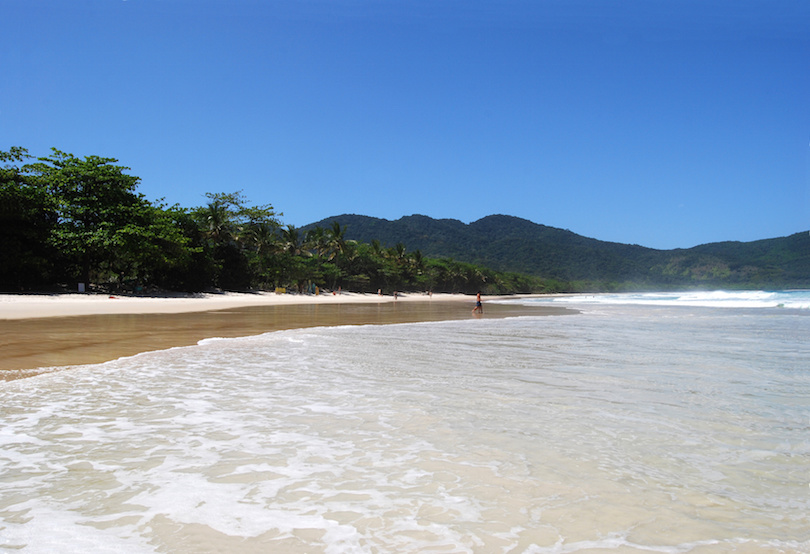
An island located between Sao Paulo and Rio de Janeiro, Ilha Grande is a beautiful and popular weekend getaway destination.
Full of luscious forest trails for hiking, clear water for swimming, and white-sugared beaches for relaxing, it’s not hard to lose track of time vacationing in Ilha Grande.
Once upon a time, the island was used as a state prison, a leper colony, and the ideal pirate refuge. Nowadays, Ilha Grande is a flawless vacation spot for locals and tourists looking to get away, relax, and some things to do in the outdoors.
Take a hike to Lopes Mendes Beach, one of Brazil’s most frequently ranked top beaches. Its endless coastline, serene atmosphere, and crystal-clear water exude a peaceful vibe that is easy to sink into. Ilha Grande has more than a few hikes available for the avid adventurer.
Hike near Vila de Abraao, passing the old prison that housed political prisoners, or hike to the island’s highest point, Pico de Papagayo, for a challenge.
16. Chapada dos Veadeiros National Park
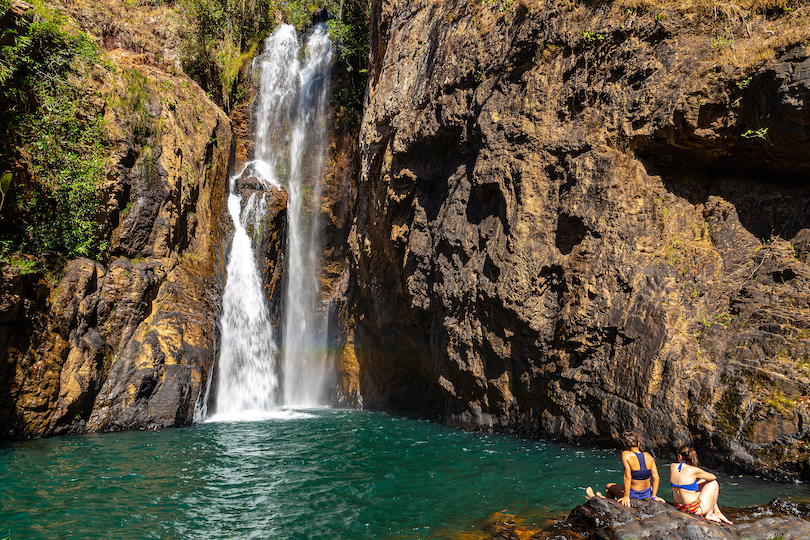
Found centrally in Goias, with access points from Sao Jorge and Alto Paraiso, Chapada dos Veadeiros National Park is situated above an ancient plateau aged at an impressive two billion years.
Throughout the national park are cascading waterfalls, dipping valleys, and steep canyons. The hikes make for a rewarding excursion. For example, the Cachoeira Macaquinhos, or Little Monkey Waterfall, the trail is less than a three-mile hike. It is beginner-friendly, offering up views of emerald-dipped pools poured into by rushing waterfalls.
Check out Vale da Lua in Chapada dos Veadeiros National Park. This unusual rock formation was created by millennia of erosion and is one of the park’s top attractions. Then, take pictures at the famous window frame-like landmark, Mirante de Janela, with sensational background views of Chapada dos Veadeiros National Park.
15. Jericoacoara
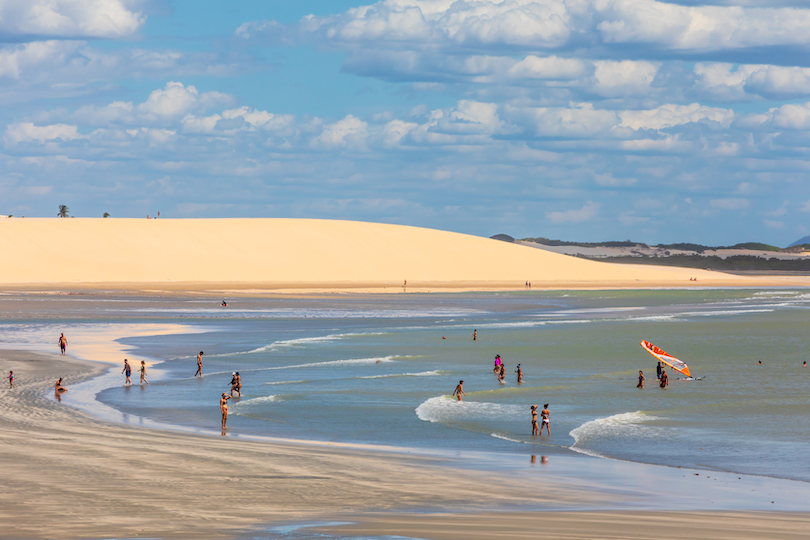
A small fishing village transformed into a popping beach resort site, Jericoacoara, also known as Jijoca or Jeri, is one of those utopia vacation spots where you end up extending your trip to stay longer.
In Ceara, west of Fortaleza, Jericoacoara is a popular spot for windsurfing, kitesurfing, surfing, swimming, and backpacking. The streets are paved with sand instead of cement—the beach’s undeveloped coastlines, packed with sand dunes, stretching beyond sight.
Visit Jericoacoara National Park, which features Lagoa do Paraiso, a stunning turquoise lagoon with nearby hammocks to sway and relax in and bars to enjoy refreshments. Order fresh lobster, oysters, and other seafood dishes from local restaurants. Once nighttime hits Jericoacoara, join locals and fellow tourists at the numerous clubs and bars where live music serenades through the night.
14. Curitiba-Paranagua Train Ride
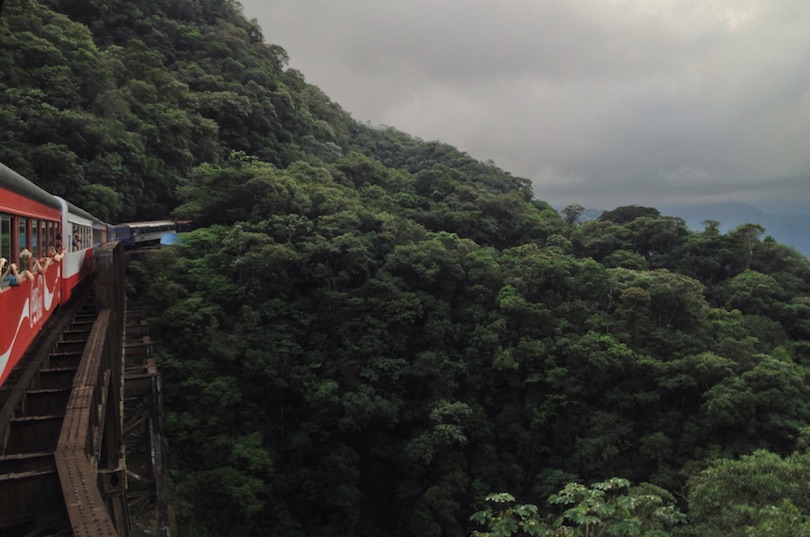
The most famous railway in Brazil, the Serra Verde Express, is where visitors can hop on a Curitiba-Paranagua Train Ride through southwestern Brazil.
The Belgium-French company Chemin de Fer Bresilien established the Curitiba-Paranagua Railway to gain access to the port of Paranagua. The railway line took five years to construct, an engineering masterpiece of the 19th century.
On this famous scenic ride, passengers can see glorious landscapes as the train passes through thriving forests, up steep mountain slopes, along lengthy rivers, and past sparkling lakes. Then, look out of Veu de Noiva Waterfall, cascading over a steep rock formation for a stunning image said to fall over the stones like a “bride’s veil”.
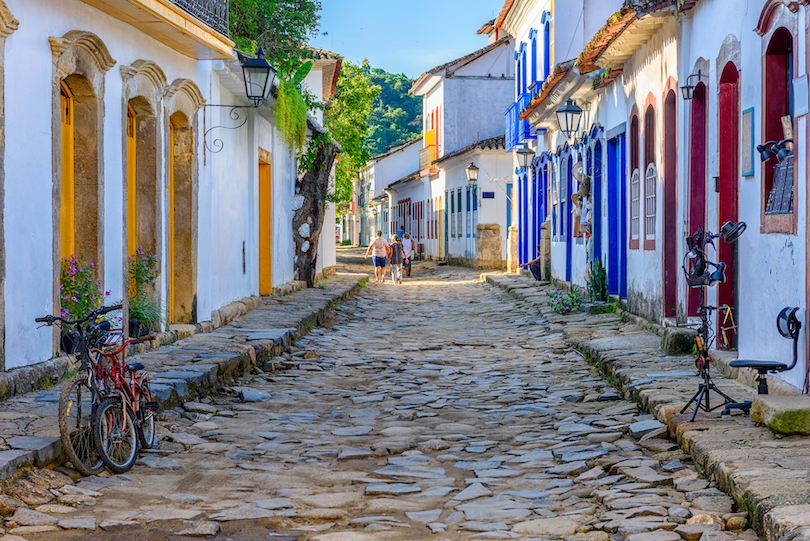
A small, charming town between Sao Paulo and Rio de Janeiro, Paraty is situated at a scenic location featuring mountain backdrops, historic landmarks, and a waterfront setting.
Previously a bustling port during the Brazilian Gold Rush, the town has quickly become a favored tourist spot thanks to its natural appeal, Portuguese colonial architecture, and diverse activity options.
However, its cobblestoned streets are a step back in time, presenting only a piece of Paraty’s heritage. Stroll through Matriz Square, past white-painted houses with colorful doors and window frames, to Santa Rita church to bask in local history, culture, and architecture.
Complete the rewarding Mamangua Sugarloaf Peak Hike to the top of Mamangua Peak. Here, you’ll see the world’s only tropical fjord, the Saco do Mamangua. Kayak through Paraty’s mangroves, beaches, and coves, to witness the natural wonders of Paraty that draw in visitors from across the globe.
12. Copacabana
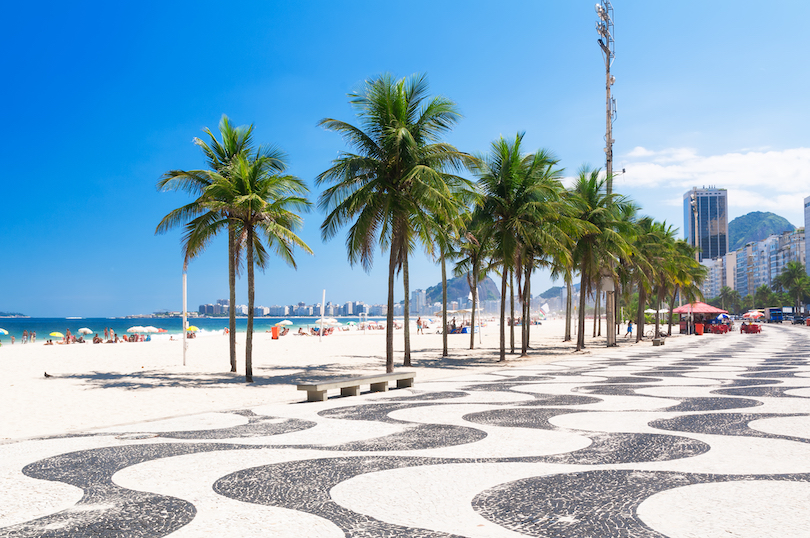
Located in Rio, Copacabana is one of the world’s most well-known beaches. It is approximately two miles long and lined with hotels and expensive homes, though there are also much more modest residences scattered in between. A beautiful boardwalk with a black-and-white checked pattern of Portuguese stone flanks the sand.
This is a very vibrant neighborhood that is home to Rio’s famous New Year’s celebration and several interesting tourist attractions, including the Copacabana Fort, which was constructed in 1914, and the glamorous Hotel Copacabana Palace.
11. Ouro Preto
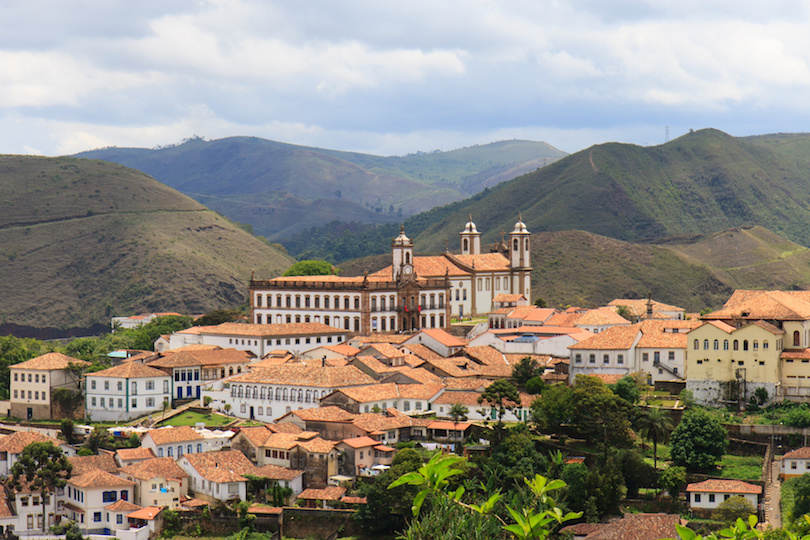
Ouro Preto is a historic colonial town in the Serra do Espinhaco mountains, north of Rio de Janeiro, featuring baroque architecture and cobbled streets.
Founded at the end of the 17th century, the town played a crucial role in Brazil’s late 17th century Gold Rush, quickly becoming one of the richest and biggest towns . It was also the birthplace of Brazil’s most noteworthy artist and sculptor, Aleijadinho. Many of Aleijadinho’s masterpieces can be seen speckled throughout the city, plus a collection of sculptures in the Museum of Aleijadinho.
Outside Ouro Preto is the world’s largest gold mine open to the public, found in Mariana. Guided tours take visitors through the gold mine on an old cable car while exploring the history of the mine. And throughout the town of Ouro Preto are many spectacularly designed churches featuring intricate design and architecture. Many of these churches were embellished with native gold.
10. Teatro Amazonas
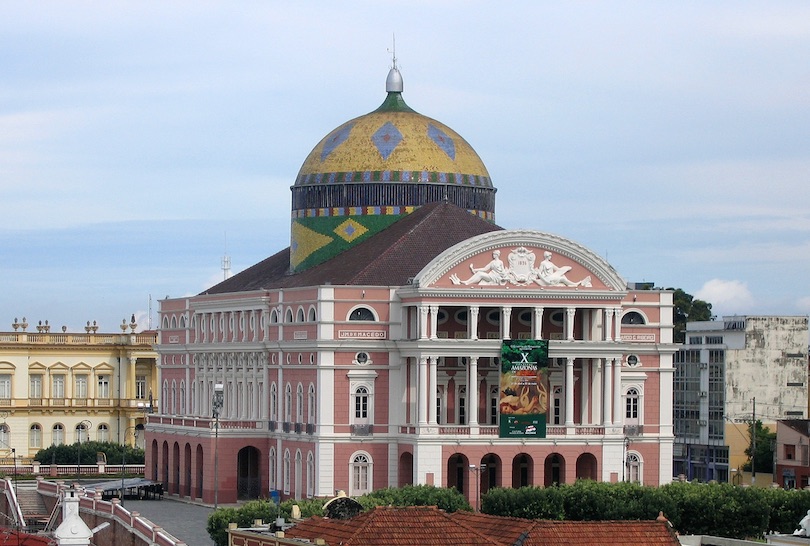
Teatro Amazonas or Amazon Theatre is an opera house located in Manaus , in the heart of the Amazon Rainforest.
It was built during the heyday of rubber trade using materials from all over the world, with furniture from Paris, marble from Italy, and steel from England. On the outside of the building, the dome was covered with 36,000 decorated ceramic tiles painted in the colors of the Brazilian national flag.
The first performance was given on January 7, 1897, with the Italian opera La Gioconda. The opera house was closed down soon after however as the rubber trade declined and Manaus lost its main source of income. There wasn’t a single performance in Teatro Amazonas for 90 years until 1990 when it reopened its doors.
9. Fernando de Noronha
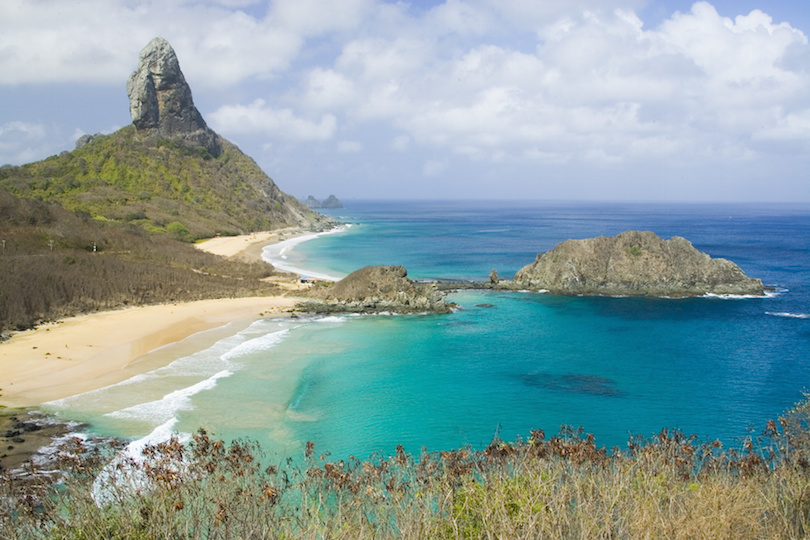
Fernando de Noronha is a beautiful archipelago with pristine beaches, landscapes and wildlife, situated 354 km (220 miles) off the northeastern coast in Brazil. The archipelago was discovered by Amerigo Vespucci in 1503 and temporarily occupied by the Dutch and French before Portugal established dominion in 1737.
Today only the largest of the 21 islands is inhabited with a population of about 3,500. The islands are a Mecca for divers and snorkelers with warm waters year-round and very good visibility even at depths of 50 meters.
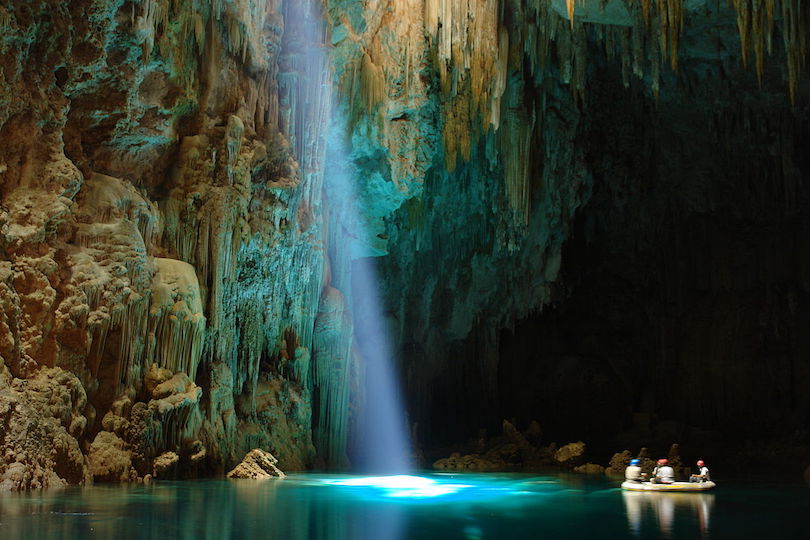
Established in the Bodoquena Sierra, in Mato Grosso do Sul, Bonito is a quaint town and prevalent ecotourism hub.
Crystalline waterways and prosperous forests surround Bonito. One of the biggest attractions of Bonito is Rio de Prata, or Silver River. The river’s aquamarine water brims with friendly fish, making it an excellent snorkeling spot.
Another is the Gruta do Lago Azul, or Blue Lake Grotto. The grotto is an otherworldly underwater cave filled with blue water. Scuba diving, swimming, and snorkeling are popular at the grotto; if you’re lucky, you might discover fossils of ancient prehistoric animals!
Within Bonito is Aquario de Natural, a marine preserve that is only a short trek through the jungle. Swimming, snorkeling, and glass-bottomed boat tours are popular here for a memorable adventure through the clear waters full of vibrant-colored fish lazily swimming about.
7. Historic Center of Olinda
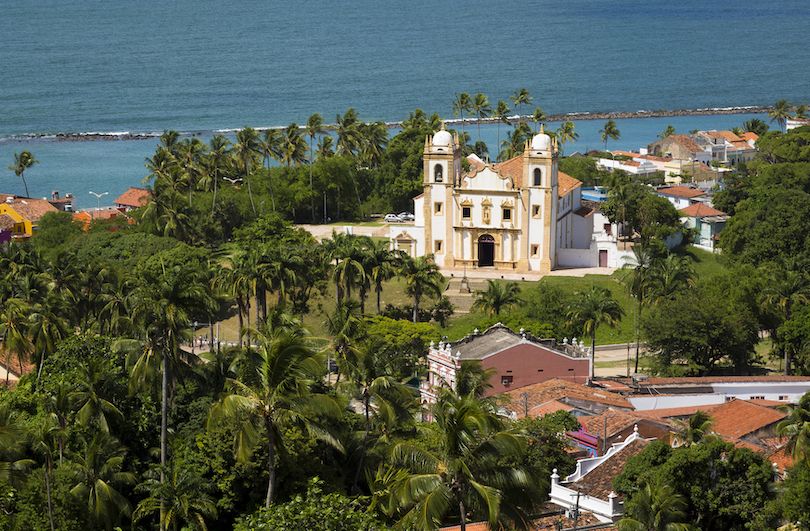
On the northeastern coast of Brazil in Pernambuco, north of Recife, is the historic city of Olinda. The city was founded in the 16th century and is considered one of the best-preserved colonial cities in Brazil .
The Historic Center of Olinda is teeming with architecturally stunning buildings surrounded by rich vegetation and oceanside backsplashes. The city’s history is linked to the sugarcane industry, the historic center presenting the nourishment of wealth that inspired its economy to boom in the 16th century. The Catedral Alto da Se, a former Jesuit church, is the perfect example of Olinda’s appealing architecture and prosperous history.
Walking through the Historic Center of Olinda is a journey through Brazil’s history, surrounded by monuments, churches, and houses that date back centuries.
6. Salvador Beaches
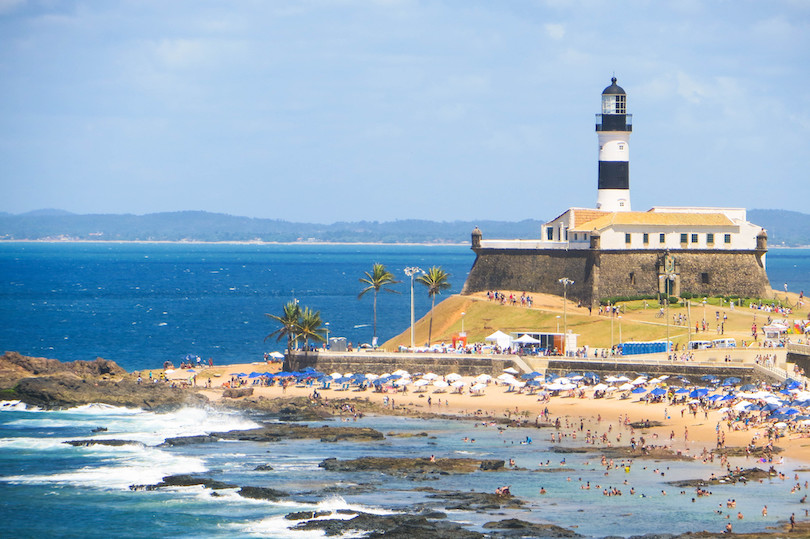
In the northeast region of Brazil is Salvador, the capital of Bahia, home to some of the best beaches in Brazil.
Praia Itapua is a fine white-sanded beach, palm frond, and coconut tree-speckled paradise. The beach is near the notoriously artistic and culturally rich neighborhood of Itapua. The nearby venues have an eclectic and bohemian vibe paired with entertaining live music and tasty food options, like “acaraje”, a spicy fried-bean dish.
Join the locals at Boa Viagem, a beach strip flanked by beachfront bars, nightclubs, seafood restaurants, and a boardwalk perfect for strolling along the beach. Coral reefs protect the shallow waters of Boa Viagem, which is ideal for families to take their kids for a beach day.
The beach options are endless in Salvador!
5. Pantanal
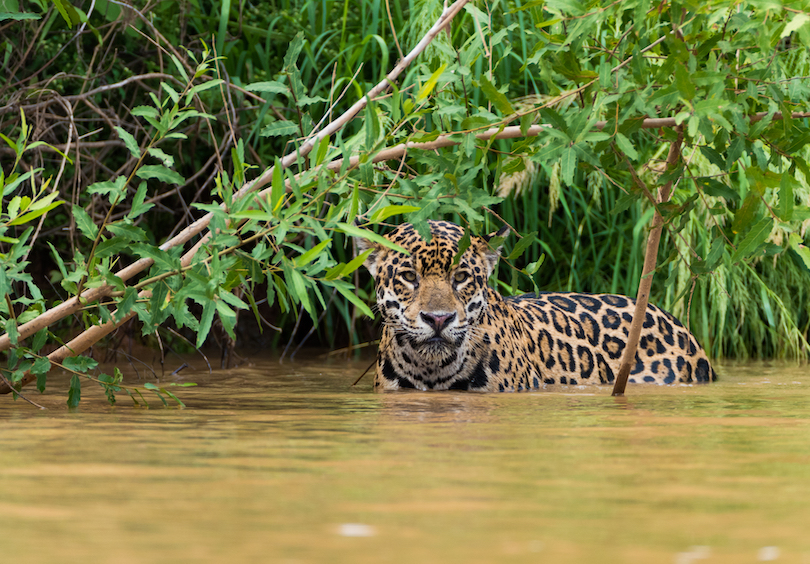
The world’s largest flooded grasslands and largest tropical wetland area, most of the Pantanal lies within Mato Grosso do Sul, with some of it extending into Paraguay and Bolivia.
Larger than 29 U.S. states and nearly nine European countries, these wetlands are a fantastical wonderland of nature’s beauty. This refuge for wildlife is home to about 10 million caimans and just as many jaguars that hunt caimans in the Pantanal. You can also find the largest parrot in the world here, the hyacinth macaw.
These are only some of the astonishing animals in the Pantanal, drawing in millions of tourists annually to catch sight of the numerous awe-inspiring species living here, including toucans and capybaras.
From horseback to canoe, there are numerous methods to adventuring the glorious commodity of the Pantanal!
4. Rio Carnival
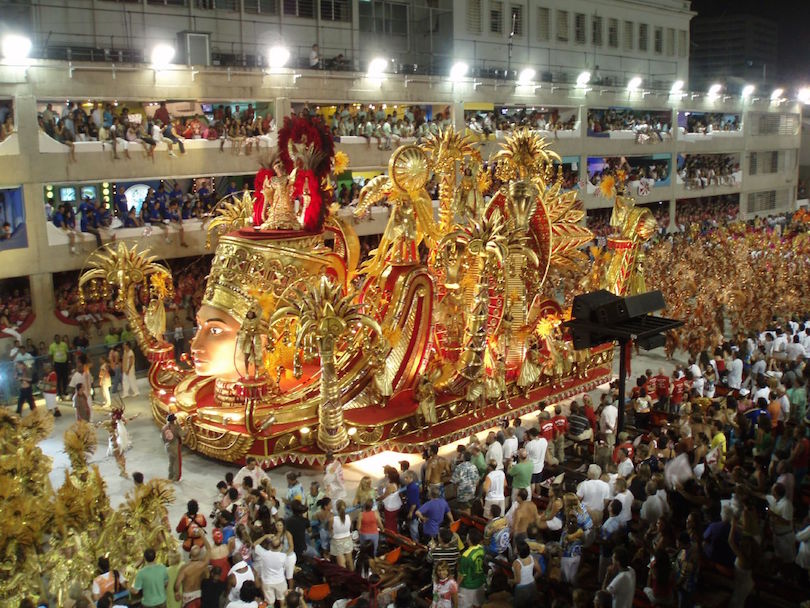
There are carnival celebrations in virtually every corner of Brazil, the best-known ones taking place in Recife together with the neighboring Olinda and Salvador. But the biggest and most famous carnival is undoubtedly the Carnival in Rio de Janeiro. The Rio Carnival attracts two million people per day on the streets and almost half a million foreigners during its 4 day celebration.
The Carnival is all over the place, in the streets and squares, bars, clubs and all other venues in Rio, concluding in the spectacular Rio Samba Parade at the Sambadrome.
3. Amazon River
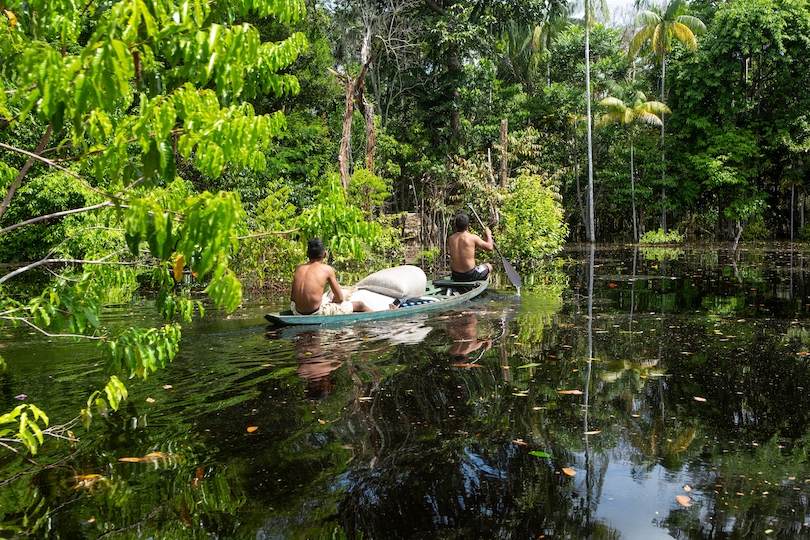
The largest river in the world by water volume, the Amazon River traverses nine South American countries, including Brazil, Ecuador, Peru, and Venezuela.
Nurturing the largest rainforest on earth, this mighty river is still widely unexplored, hiding discoveries and opportunities. In northwestern Brazil lies Manaus, the only city in the Amazon Rainforest that boasts a population of over one million people.
People travel from all over the world to Manaus to get a chance to explore, whether it be on a one-of-a-kind Amazon river tour or a backpacking adventure through its lush Amazonian jungles. Through these experiences, you can get the unique chance to see sloths, toucans, macaws, and the boto, the phenomenal pink-ish colored river dolphin.
2. Iguacu Falls
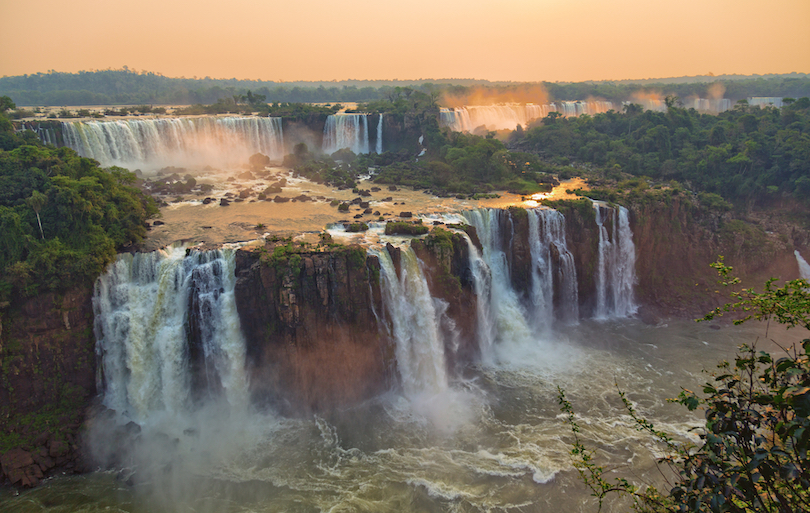
One of the great natural wonders of the world, Iguaçu Falls is situated on the border between Brazil and Argentina . The waterfall system consists of 275 falls along the Iguazu River. The most impressive of them all is the Devil’s Throat a U-shaped with a height of 82 meter (269 ft).
The falls can be reached from the cities Foz do Iguaçu in Brazil and Puerto Iguazú in Argentina, as well as from Ciudad del Este in Paraguay. On the Brazilian side there is a long walkway along the canyon with an extension to the lower base of the Devil’s Throat.
1. Christ the Redeemer
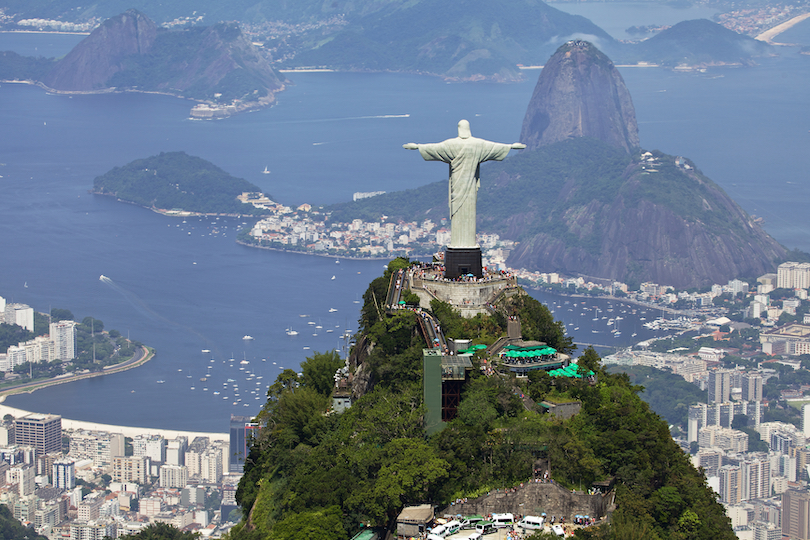
An iconic landmark welcoming visitors to Rio de Janeiro , the Christ the Redeemer statue was labeled one of the New Seven Wonders of the World in 2007.
One of the most visited and well-known tourist attractions in Brazil, the statue was established more than 90 years ago. It is the largest Art Deco statue in the world and, shockingly, only the fourth tallest statue of Jesus Christ in the world.
The cultural icon has become a global symbol, attracting millions of believers and non-believers alike to see the Christ the Redeemer statue in person as it overlooks Rio de Janeiro atop Corcovado Mountain.
Map of Tourist Attractions in Brazil
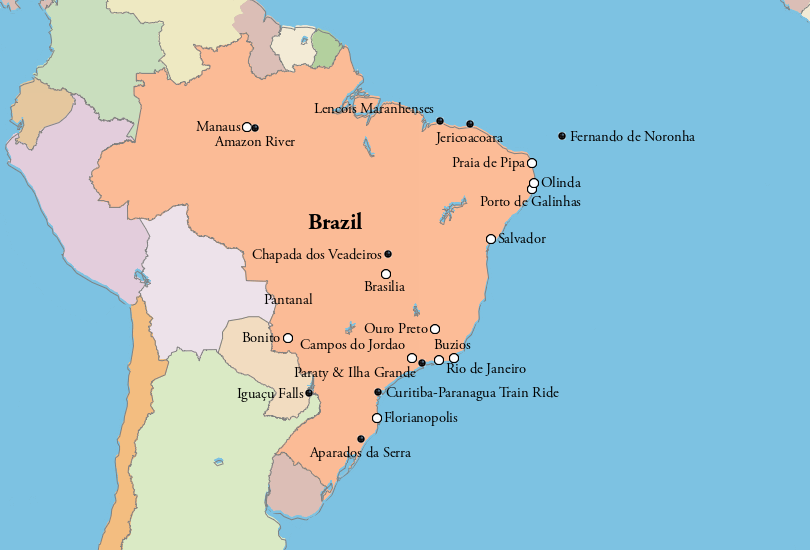
Share this post:
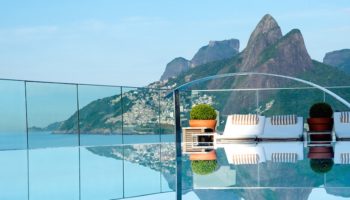
11 Most Awesome Places to Stay in Brazil
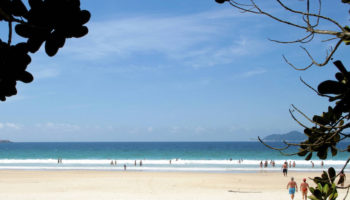
10 Best Beaches in Brazil
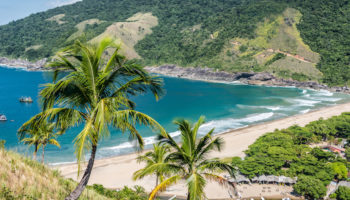
10 Most Beautiful Islands in Brazil
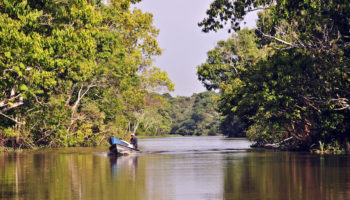
5 Most Beautiful Regions in Brazil
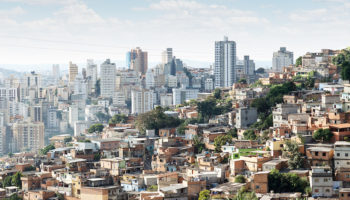
17 Best Cities to Visit in Brazil
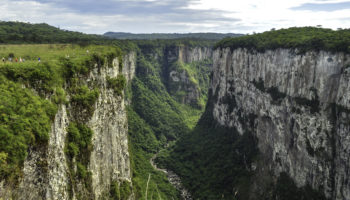
10 Most Beautiful National Parks in Brazil
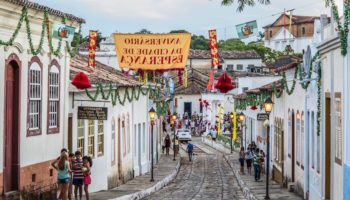
14 Most Beautiful Small Towns in Brazil
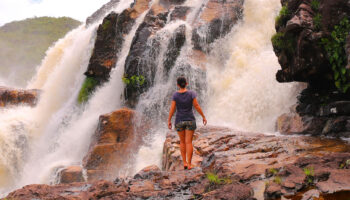
17 Best Places to Visit in Brazil
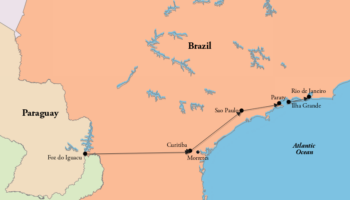
How to Spend 2 Weeks in Brazil: DIY Itinerary
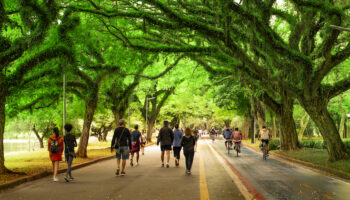
23 Top Tourist Attractions in Sao Paulo
Reader interactions.
February 2, 2021 at 9:07 am
Just spent some time in Brazil from 12/27/2020 to 01/11/2021 . I stayed between Copacabana and Búzios RJ and I can tell you. 6 months would not be enough to get to know all these places mentioned on this article. You might be able to visit but not to get the spirit of some locations, villages or towns. My next trip going to be to Salvador or Santa Catarina.
February 12, 2017 at 8:14 pm
Just visit praia dos Carneiros, the best place in Brazil.
January 31, 2017 at 1:23 pm
And we can put so many places into this list! Chapada Diamantina in Bahia State is, for me, a must-go-place for everyone in Brazil. Also the Chapada de Veadeiros in Goias State must be into the list, a paradise in the middle of brazilian savannah, UNESCO whs. The new touristic fisherman villages are also an amazing destination: Canoa Quebrada, Genipabu, Dunas de Rosado, Caraivas… Sure we need a ”Top100” for this country.
November 22, 2016 at 2:31 am
Its amazing to think about the scenery of top tourist places. I am coming to Brazil in the first week of December, 2016. But I am afraid of whether I would get any time to see all the interesting places as I like due to time constraint. Even that I should try to travel as much as I can during my stay in Brazil.
January 5, 2015 at 6:16 am
Visit Curitiba, the best city in Brazil.
May 25, 2014 at 8:50 am
awesome places
January 14, 2014 at 2:18 am
Beautiful sceneries! I am coming to Brazil soon. However, u will be amazed with what Uganda, the pearl of African possess!
November 19, 2013 at 6:44 am
Nice website 🙂
In my opinion, as a Brazilian who loves to travel, the best places in Brazil are: Bonito (MS), Jericoacara (CE), Abrolhos (BA), Arraial do Cabo ( RJ), Búzios (RJ), Praia do Forte (BA), São Miguel dos Milagres (AL), Pipa (RN), Chapada Diamantina (BA), Gramado (RS), Florianópolis (SC) and Rio de Janeiro (RJ).
August 19, 2013 at 8:59 am
Brazil is very lovely. i would love to go and meet people and see all the places
August 19, 2013 at 6:11 am
The Pantanal is amazing. check out Pantanal Ranch Meia Lua – It’s in Miranda, a wonderful ranch to use as a basis for your travel into the Pantanal.
August 1, 2013 at 2:15 am
its most wonderful place I would like to go to brazil I want attraction site of it
July 30, 2013 at 12:05 pm
Very good your list, I am Brazilian and agree to the destinations mentioned here.
July 19, 2013 at 2:29 am
brazil is certainly an astonishing & breathtaking place to visit.My visit was a memorable 7 once in a blue moon one.Hats off to brazil!!!!!!!!!!
April 28, 2013 at 6:37 pm
Brazil is such a beautiful country 🙂 can’t wait to go these pictures are amazing
April 28, 2013 at 11:57 am
this is reeealy goood ooh when am i gonna get the chance to go to a place like this!
April 20, 2013 at 7:02 am
where are the pictures of Ceará? yes there is very beautiful
March 8, 2013 at 1:14 pm
i have travelled every where and i think u should really go to brazil
March 8, 2013 at 7:29 am
i really want to go to brazill because it looks sooo sexy
December 10, 2012 at 3:23 pm
i want to go to brazil soooooooo bad and this makesme want to go even more.
Leave a Reply Cancel reply
Your email address will not be published. Required fields are marked *
This site uses Akismet to reduce spam. Learn how your comment data is processed .

IMAGES
VIDEO
COMMENTS
7. Fortaleza. Fortaleza is a big city in Northeast Brazil. Fortaleza is a great starting or ending point on any trip to Northeast Brazil as the airport offers flights to many other places. We started in Fortaleza and found it a very "local city" with only one street really for tourists.
Jericoacoara National Park. Jericoacoara Na tional Park is an incredible place to visit in the northeastern region of Brazil. Located in the state of Ceará, it is around a 1-hour flight or a 6-7 hour bus ride from Fortaleza. When visiting, you can stay in the small village of Jericoacoara which has a beachy, bohemian vibe and is known for incredible seafood.
We recommend adding Olinda in your itinerary of Northeast of Brazil, because it is yet another place that is under mass tourism' radar (for now). Use the opportunity to visit this gem of Northeast Brazil before it gets affected by mass tourism. 4. Fernando de Noronha. The island of Fernando de Noronha is Northeast Brazil's best kept secret.
Northeast Brazil is a region filled with natural beauty, rich culture, and fascinating history. With its paradisiacal beaches, lush landscapes, and charming historic cities, the Northeast is a must-visit destination for travel enthusiasts.
Below are our top five places to visit in Northern Brazil. Lençóis Maranhenses National Park Sweeping dunes for as far as the eye can see, emerald green lagoons nestled in unusual shapes and some of the most fascinating landscape you will ever see, Lencois Maranhenses National Park is one of the most interesting natural phenomena in Brazil.
2. Fernando de Noronha Island, Rio Grande do Norte. Fernando de Noronha Island by Fred Schinke. Fernando de Noronha is one of the most beautiful and important places to visit in the Northeast Region of Brazil. Since 2001, together with the other islands of the archipelago with the same name, Fernando de Noronha is under the auspices of UNESCO.
Days 1 to 4: Porto Seguro. Kick off your 2 weeks North Brazil itinerary with a stroll along the port edge to see all the beautiful houses. Take a bus or rent a car to visit the hilltop church of Santa Cruz Cabrália and then join the beach parties at Axé Moi and Tôa Tôa. on your way back.
5. Spend the day at the beach. Ponta Negra Beach, Natal, Brazil. Being a coastal city, Natal is surrounded by beautiful beaches. One of the best things to do in Natal is to simply spend a day at the beach enjoying the sunshine and Brazilian culture. That was great news for me as I love the beach!
It's impossible to talk about Brazil and don't think about its beaches and great weather. Although Rio de Janeiro is the most popular destination — especially during Carnaval — the country has other incredible places for beach lovers. The Brazilian Northeast has a coastline that stretches over 1,800 miles, featuring secluded beaches with calm waters and palm trees.
Praia da Pipa, Rio Grande do Norte State. Perched on South America 's northeasternmost tip, this state relies heavily on tourism, and much of that has to do with its 410km (254 mi.) of coastline lines with coconut palms, lagoons, and of course beaches. And one of the best is Pipa, an hour and a half south of state capital Natal, famed ...
A vacation in Northern Brazil - a little known region full of surprises! The relatively low level of tourism in Pará can be partly explained by the fact that it is a region that has long been valued primarily for its economic resources rather than for its extraordinary landscapes.
8. Praia do Forte ("Fort Beach") - Mata de São João, Bahia. Bahia's Praia do Forte is one of the most "complete" beach destinations you can visit in the northeast. Since it's a well-visited spot, the infrastructure and facilities available are impeccable, and you'll find many options for accommodation and restaurants.
This site is owned by Apa Digital AG, Bahnhofplatz 6, 8854 Siebnen, Switzerland. Rough Guides® is a trademark owned by Apa Group with its headquarters at 7 Bell Yard London WC2A 2JR, United Kingdom. Northeast Brazil - Plan your trip to Brazil with Rough Guides and get travel tips and information about where to go and what to do.
To discover the best places to visit and things to do, use this handy list of the top tourist attractions in Brazil. 1. Cristo Redentor and Corcovado, Rio de Janeiro. 2. Sugar Loaf, Rio de Janeiro. 3. Iguaçu Falls. 4. Copacabana, Rio de Janeiro.
5. Florianopolis. The capital of Santa Catarina state, Florianopolis lies in the south of Brazil, with half of the city set on the mainland and the other on a beautiful island. Due to its scenic setting, it is a very popular tourist destination and is widely considered one of the best places to live in the country.
7. Fernando de Noronha. An archipelago of islands some 320km (200 miles) off the northeast coast, Fernando de Noronha is high on many honeymoon wishlists. Of Noronha's 21 islands, only the largest one is accessible to tourists - and even then, its boundaries lie safely within Brazil's largest marine park.
Founded in the 16 th Century, Salvador was Brazil's first capital and it's known as the happiest place in Brazil. It's not hard to see why! With so many colours on its old buildings it's impossible not to feel euphoric. This was one of the streets leading up to the main square in Pelourinho, the historic old town - a UNESCO World Heritage Listed site.
The most famous attraction is the Fumaça Waterfall, one of the tallest waterfalls in Brazil, which at 340 m tall evaporates in a mist before even reaching the ground. Another famous highlight is the cauldron-like Devil's Pool, with its deep black water and sinister history, or the enormous sandstone-and-quartz Lapão Cave.
6. Arena das Dunas. 1,524. Arenas & Stadiums. Built in about two and a half years, the Arena das Dunas was given to Natal population on December 31, 2013, and had its inaugural football match on January 26, 2014, with a double round of America…. See ways to experience (2)
1. Iguazu Falls. 45,463. Historic Sites. The colossal power of these thundering falls, viewable from both Argentina and Brazil, and accessible from Paraguay, is a mesmerizing sight: 275 separate falls in a U-shaped formation pound the water…. See ways to experience (123) 2024.
27. Porto de Galinhas. 27. Porto de Galinhas. Porto de Galinhas, or "Port of Chickens," on the south coast of Pernambuco in the district of Ipojuca, is a beach town home to some of the most famous beaches in Brazil. A prominent tourist spot, Porto de Galinhas is breathtaking, with natural crystalline-clear pools, thriving reefs, and white ...
This list includes the best things to see and do in Brazil as well as the cities and towns you simply must visit on your trip! 1. Fall in love with Rio de Janeiro. The view of Rio de Janeiro, Brazil from Sugarloaf Mountain. Rio de Janeiro is Brazil's most famous city and overall the highlight of my Brazil trip.
Aerial view of Copacabana Beach in Rio de Janeiro Pelourinho, Bahia. Of all Brazil tourist attractions, Pelourinho in the historic center of Salvador is a unique place with universal values in the country (and it also is a UNESCO World Heritage Site).. As Brazil's first capital, from 1549 to 1763, Salvador witnessed the blending of African, Amerindian, and European cultures.